Zoning In on Whole Health
Dexter Shurney turns his wellness and inclusion goals into reality at Adventist Health and Blue Zones
Institute





Dexter Shurney turns his wellness and inclusion goals into reality at Adventist Health and Blue Zones
Institute




Mary Rotunno’s experience at various levels of healthcare helps her effect changes at the governance level to improve the lives of patients at El Camino Health and beyond 60
Laura McBride and Sonja Rajki serve jointly as general counsel and senior vice presidents of the MetroHealth System 68
Sherill Kirksey knows firsthand why benefits are important; she’s dedicated her career to becoming a leader who can ensure that employees have the best possible HR experience ▶ 86
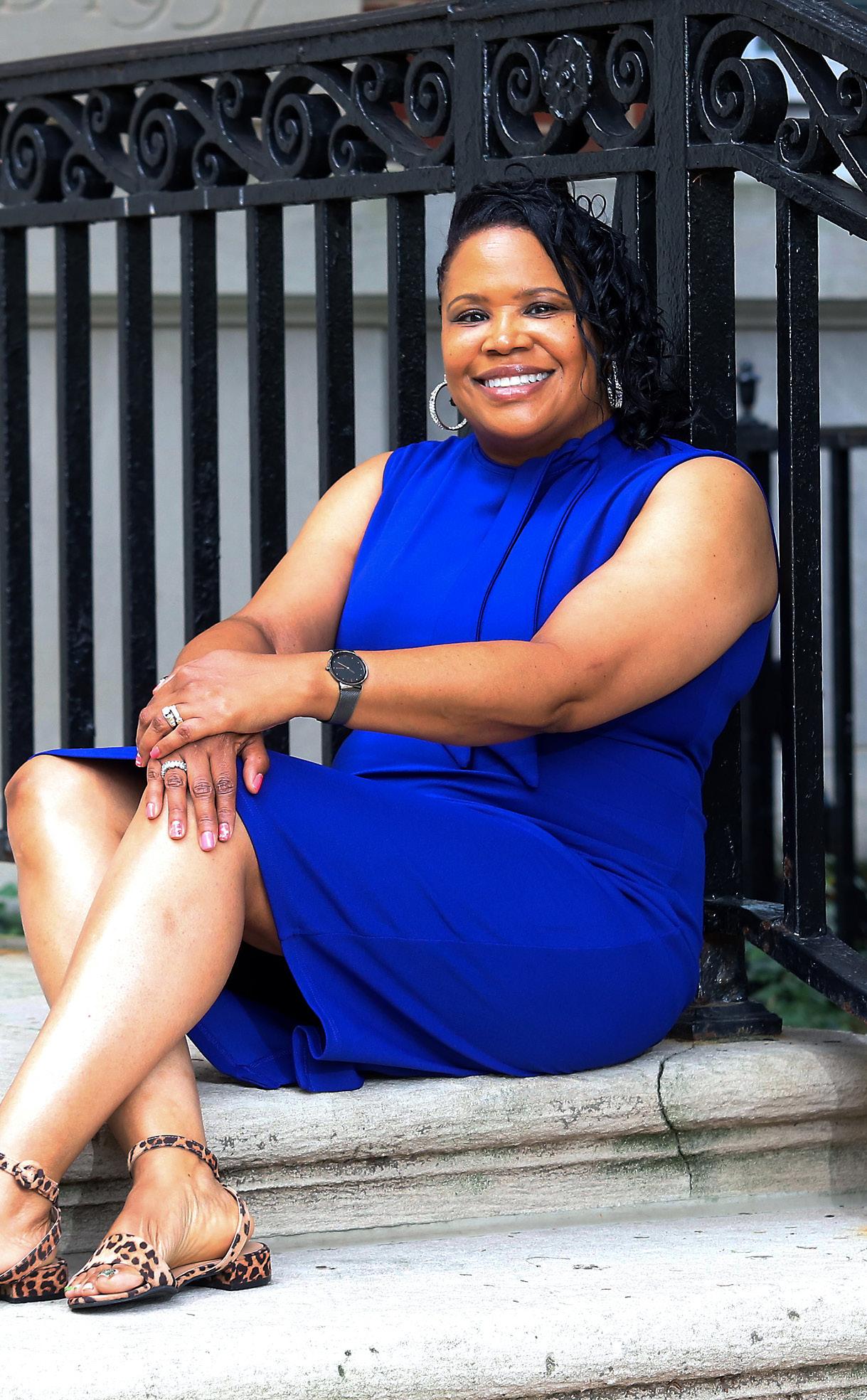
Logan Zinser transforms life sciences start-up Element Biosciences into an industry leader by emphasizing data management ◀ 98

What Novo Nordisk’s Marc Fishman learned as he led the Danish drugmaker’s US legal team through an unprecedented global crisis 106
Lawyer, compliance officer, and lifelong learner Lynn Gordon welcomes a challenge as head of legal and compliance at Alo Solutions 110
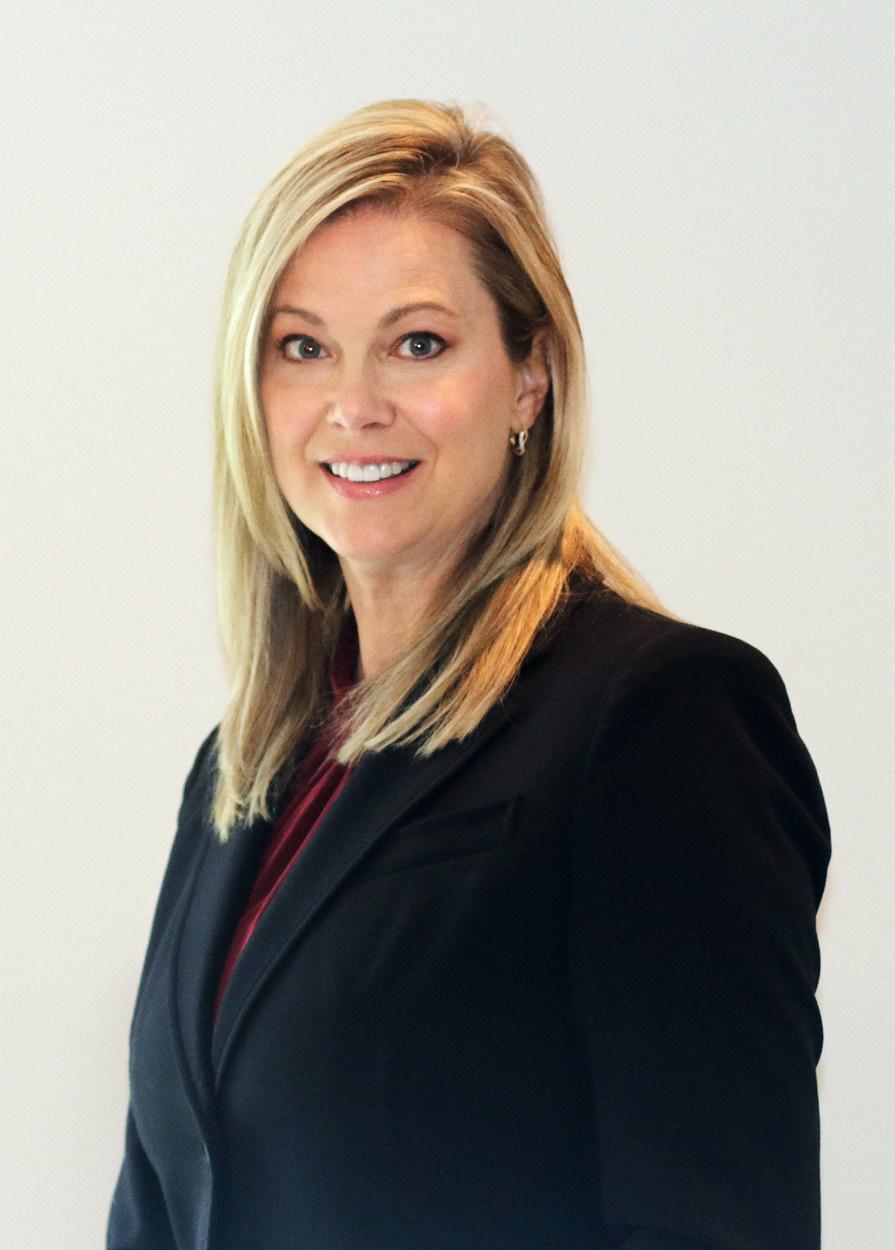
At Argon Medical Devices, Jason Whitehair aligns his HR initiatives with the company’s ambitious expansion plans 116
By embedding members of her unit on specialty teams, VP and Chief Pharmacy Officer

LeeAnn Miller is making a profound impact on outcomes at Yale New Haven Health ◀ 128
Through a recent rebrand, CFO
Bryan Fuerst is making a case for pharmaceutical clients to rely on Propel Health’s trio of subsidiaries— Centron, Fusion, and Elevate Strategic Engagements—for all of their marketing needs 142

Mika Taylor’s passion for growth has led her into six positions over seventeen years at John Muir Health as she’s worked to create new opportunities for herself and others ◀ 160
By uniting a passion for nursing with the study of law, Capital Health’s Keith Hovey is improving patient outcomes and helping people become the best possible versions of themselves 168

Tyson’s Elizabeth Chappelear provides employees with the same benefits that sustained her as a single mother starting a new career 184
This issue’s concept cover was shot and edited by AHL ’s senior staff photographer Sheila Barabad Sarmiento
Jason Morgan’s innovative global health and well-being programs push the limits at Splunk 204
For Medline’s Vishal Ganju, relationships are key for top performing revenue cycle departments ▶ 208
As vice president of legal, Varian’s Lawrence Chew focuses on enabling his product and business teams to achieve cancer care innovation 216
Editorial Director
Frannie Sprouls
Managing Editor
Jaylyn Bergner
Editors
Melaina K. de la Cruz
Michele Cantos Garcia
Sara Deeter
Brittany Farb Gruber
Julia Thiel
Staff Writers
Zach Baliva
Billy Yost
Contributing Writers
Zachary Brown
Lucy Cavanagh
Marcos Chisholm
Frank DiMaria
Peter Fabris
Will Grant
Frederick Jerant
Joseph Kay
Natalie Kochanov
Donald Liebenson
Keith Loria
P. Ellen Lose
Senior Designer, American Healthcare Leader
Vince Cerasani
Designers
Anastasia Andronachi
Rebecca Kang
Arturo Magallanes
Senior Photo Editor & Staff Photographer
Sheila Barabad Sarmiento
Photo Editor & Staff Photographer
Cass Davis
Contributing Photo Editor
Sarah Joyce
Special Projects Editor
Sara Deeter
Creative Operations Coordinator
Melaina K. de la Cruz
CORPORATE
CEO & Publisher
Pedro A. Guerrero
President, Group Publisher
Kyle Evangelista
Chief of Staff
Jaclyn Gaughan
SALES
Director, Sales
Stuart Ziarnik
Director, Sales Onboarding
Justin Davidson
Onboarding Sales & Development Manager
Hannah Tanchon
Sales Researchers
Titus Dawson
Kemp Pile
Lead Recruiter, Guerrero Search
James Ainscough
Senior Director, Corporate Partnerships & DEI Solutions
Krista Horbenko
Digital Product Manager
Aleksander Tomalski
Director, Talent Acquisition & Engagement
Haylee Himel
Talent Acquisition Managers
Josie Amidei
Jordyn Gauger
Content & Advertising Managers
Ashley Alcock
Megan Apfelbach
Lea Delattre
Jose Escalante
Maddie Keeler
Annie Peterson
Kayla Plastiak
Noy Raiber
Caroline Ryan
Drew Thomas
AUDIENCE & ENGAGEMENT
VP, Hispanic Division and Head of Audience & Engagement
Vianni Lubus
Director, Events
Jill Ortiz
Events & Marketing Manager
Ashley Parish
Communications & Engagement Manager
Cristina Merrill
Social Media Manager
Suleidys Tellez
OPERATIONS
VP, Finance
David Martinez
Director, Circulation
Stacy Liedl
Staff Accountant
Natallia Kamenev
Senior Director, Client Operations
Cheyenne Eiswald
Account Manager
Abigail Stern
Senior Manager, Client Services
Rebekah Pappas
Manager, Client Services
Brooke Rigert
Office Manager and Administrative Assistant
Sydney Churchill
AHL Magazine® is a registered trademark of Guerrero, LLC.
Facebook: @ahlmagazine
LinkedIn: @american-healthcare-leader
Twitter: @AHL_Magazine
©2023 Guerrero, LLC guerrero.co
1500 W. Carroll Ave., Suite 200 Chicago, IL 60607
Reprints
Reprinting of articles is prohibited without permission of Guerrero, LLC. Printed in China. For reprint information, contact Reprints & Circulation Director Stacy Liedl at stacy@guerreromedia.com.
various needs and from a background with a variety of differentiating factors. Factors such as ethnicity, location, age, financial situation, and sexual orientation have often played a role in the care patients receive. Or don’t.
The lack of diversity, equity, and inclusion in healthcare became unignorable to industry professionals across the country during the COVID-19 pandemic. Red flags flew not just about who received care, but also how, what kind, and where. And the conversation became about what needs weren’t being meet— mental health, in particular.
Yet, someone had to start those conversations. Someone had to want to. Someone had to have the desire, will, and stamina to fight to make real change happen. Change is the result of a million seen and unseen efforts and decisions performed by people with real resolve.
This issue’s feature section shares the stories of such individuals. Those with a passionate purpose to make a real difference because of experiences they have lived. These meaningful moments have and continue to inspire effective action affecting thousands.
Perhaps, they will move you, too.
Jaylyn Bergner Managing Editor
Nine executives share how they are making health equity a reality
Sarmiento
Hand model: Sarah Steimer
 Photos by Sheila Barabad
Photos by Sheila Barabad


Despite
By Donald Liebenson
challenging complexities, physician-turned-researcher Dexter Shurney focuses on how diversity and ethics can connect rather than divide us
IIf you were king of the world, knowing what you know about healthcare—its fragmentation and dysfunction—how would you motivate and incentivize the right outcomes?
Dexter Shurney, former president of the American College of Lifestyle Medicine, engages his teams in such research, policy development, and solution-finding in his dual roles as president of the Blue Zones Well-Being Institute (BZWI) and chief health equity, diversity, and inclusion (DEI) officer at Adventist Health (AH).

But the answers to reducing America’s skyrocketing healthcare costs and increasingly ill population aren’t reflected in hospital spreadsheets or medical records, he says. Instead, the greatest opportunities for solutions exist in several less-recognized, often-underestimated commonalities cutting across most health systems and conditions: health inequity and lack of diversity.
Together, these elements dramatically impact healthcare access, costs, prevention, risks, treatments, and outcomes. Addressed in sync and at systematic levels, Shurney believes all these areas can be improved for patients and even providers.
His diverse team and advisory board of “luminaries” includes military representatives, tribal community members, and others committed to building both the business and healthcare cases for DEI. The transition— sunsetting unfair practices, rooting out unconscious bias in internal policies, establishing and measuring specific DEI goals—is nothing short of transformative. Authentic DEI efforts go far beyond “checking the boxes” of trainings that employees must dutifully attend, only to ignore later, Shurney says.
“What I’m trying to do is bring people together,” he explains. “I know we may not be able to change the world, but I am hopeful we can make meaningful progress in the world of Adventist Health. There’s also the potential that if we demonstrate changes in our microcosm of society, our methods may become a model for other organizations and can shape critical policy areas.”
Diversity, for instance, “is more than race and gender,” Shurney continues. “Just because I have brown

skin doesn’t mean you can put me in a specific box. And it’s not just me; it’s everyone. Diversity will vary based on education, religion, income, friendships, national cultures, and more. Everyone should have a reason or motive to become part of a diversity program that explores what connects us instead of what divides us. That’s best practice, and we won’t leave anybody behind.”
Shurney believes different perspectives generate diverse ideas that “make us better if we can communicate and talk, and not be hostile or polarized on issues. At Adventist Health, we say everyone is respected, everybody is valued, and everybody is included.”
Aside from diversity, interest in health equity has surged since the stark impacts of COVID-19 revealed the realities around social determinants of health. Black and Hispanic Americans, for instance, are
twice as likely to die of the virus as white patients, according to Kaiser Family Foundation. But even preCOVID, the most expensive, harmful, and common serious health conditions—including diabetes, hypertension, heart disease, and cancer—showed higher incidence rates among minority and other ethnic and underserved populations.
As one response, Shurney oversees a BZWI equity project examining the higher rates of colon cancer in Black men. The institute, launched as an independent nonprofit subsidiary in 2021, began a year after Adventist Health acquired the for-profit Blue Zones franchise. Blue Zones uses its own research on healthy living for improved longevity to provide services and products that help communities address priority health issues for their residents.
“I know we may not be able to change the world, but I am hopeful we can make meaningful progress in the world of Adventist Health.”
“At BZWI, we’re figuring out how to close the major gaps in health equity; lower the cost of healthcare; and dramatically prevent, treat, and manage chronic conditions through the advancement of lifestyle medicine,” Shurney says. “With innovative solutions, such as re-envisioning provider reimbursement models and elevating equity-focused research, we’re able to test and scale best practices for practical, widespread usage.”
BZWI also addresses the root causes of diseases—80 percent of which are due to lifestyle—and aligns motivations and incentives for healthcare providers and communities to reach better health and wellness outcomes.
Spirituality plays a driving role in Shurney’s DEI work for faith-based Adventist Health. “The AH mission statement is to live in God’s love, and what better way to share that compassion, respect, and call to service than in a DEI program?” he says. “We should try to love and support one another. In doing so, we also support the overall mission of our organization.”
Spirituality serves as an additional lever for inspiring someone to change personal lifestyle habits, Shurney notes. “In her recent book, Reimagining Workplace WellBeing, my good friend Dr. Jessica Grossmeier highlights the substantial research supporting adoption of spiritual well-being practices, but most employers don’t know of this scientific evidence, nor that it’s possible to address faith in a way that honors DEI, while also complying with HR policies.”
Shurney grew up in an Adventist household with parents who were a public health nurse and a dentist. “My mother was big on healthy living,” Shurney says. “That’s part of the [Seventh-day Adventist’s] heritage. . . . The Bible says that the body is a temple of God. As an Adventist, you talk about how you should eat and take care of yourself and how it makes a difference both physically and spiritually.”
When Shurney left for college and medical school, though, he “did anything but live a healthy lifestyle. Ironically, in medical school I had a sense of justification, since it was not the focus of what I was being taught— that there is ‘a pill for every ill,’ and that prevention and lifestyle were primarily public health concerns.
“It wasn’t until later in life, when I was a physician and having health issues of my own—high blood pressure, high cholesterol, and prediabetes with obesity—that I studied the science of health and well-being,” he continues. “Within a few months of practicing basic healthy lifestyle principles, my health turned around. I came off all my medications and even lost weight, something I’d struggled with my entire life.”
Susan Benigas, executive director at the American College of Lifestyle Medicine, says, “We are extremely grateful for Dexter’s leadership in casting the vision for the American College of Lifestyle Medicine’s Health Equity Achieved through Lifestyle Medicine (HEAL) Initiative. HEAL is working toward addressing lifestyle-related chronic disease health disparities and diversifying the lifestyle medicine workforce.”
To Shurney, his double leadership roles at Adventist Health and BZWI deliver on his greatest personal and professional goal: making a difference.
“I’m able to research, connect the dots, think outside the box, and not be encumbered by common institutional constructs of typical academic organizations,” he says. “Our team doesn’t have to worry about whether we ‘publish or perish’ or are on pace to obtain tenure. I was just in the UK with international researchers and government officers, talking about equity, well-being, and how best to turn knowledge into practice or policy. This is the kind of research in action that brings me great fulfillment.” AHL
The American College of Lifestyle Medicine (ACLM) is the nation’s medical professional society advancing lifestyle medicine as the foundation for a redesigned, high-value and equitable healthcare delivery system. Lifestyle medicine is a growing specialty promoting evidence-based therapies of whole food, plant-predominant nutrition, physical activity, restorative sleep, stress management, risky substance avoidance and positive social connection, to prevent, treat and often reverse lifestyle-related chronic diseases. Dr. Dexter Shurney, past president of ACLM, helped create ACLM’s HEAL (Health Equity Achieved through Lifestyle Medicine) Initiative, and advises its Health Systems Council, a collaborative lifestyle medicine learning community of sixty-nine members.


As vice president of HR operations at Centene, Zundra Bryant understands the power of people
BBorn in Mississippi but spending most of her childhood in Los Angeles and St. Louis, Zundra Bryant relocated Washington, DC, to study actuarial science at Howard University. Her career then took her to work for companies like MasterCard and Ernst & Young.
“I married my high school sweetheart and came back to St. Louis in 1998,” she shares. “I was at MasterCard for twelve years prior to joining Centene [in 2019].”
During her time at MasterCard, Bryant worked in several positions and ultimately landing in the Global Business Service Center where she was instrumental in expanding HR and finance shared services across the globe. “I really enjoyed that experience, learning more in depth about human resource processes, leading global initiatives to streamline services and figuring out the nuances for each region,” she recounts.
“Through that experience, I expanded my leadership contributions and increased my international business intelligence.”
In 2019, Centene was looking for someone with Bryant’s skills and experience, and her background made her a perfect fit for the company. She’s risen quickly through the organization, starting as a director and now serving as vice president of HR operations, handling both employee services and HR technology responsibilities.
In her role, she leads multiple services, including the HR service center which includes employee relations intake, payroll Tier 1, proof of vaccination validation, unemployment claims processing, interview scheduling, temporary-to-permanent conversion services, and HR digital services responsible for providing innovative HR technology solutions.
Modernizing the HR service center staffing model to provide a better experience for employees and call center HR reps was a key leadership priority for Zundra.
“We implemented a hybrid staffing model partnering with an external agency to give us the flexibility to adjust our staffing needs based on demand,” Bryant notes. “We now can reduce the amount of stress on our HR reps, and increase service levels to our employees. That was a game changer, especially address challenges and new responsibilities brought on by the pandemic.”
She was also instrumental in creating an Operational Excellence framework, which includes performance measures that provides insights about the health of HR operations and articulates its value to Centene.
“We leveraged industry best practices and built team dashboards measuring five key elements, and my managers have valuable data at their fingertips to help them be more responsive to daily work demands and monitor staff productivity,” Bryant explains. “I’ve been able to leverage metrics and tangible results to increase investments in HR operations.”
Bryant leads a hybrid team of nearly one hundred and believes in a collaborative approach to success.
“I’m always challenging my team to think bigger, broader, and more strategically and they are doing a phenomenal job,” Bryant says. “If the people on your team aren’t engaged in a significant way that’s meaningful to them as an individual, you run the risk of jeopardizing future successes for your organization. So, [building] an inclusive culture, fostering trust, and cultivating positive energy is something that is a top priority for me.”
 Zundra Bryant VP of HR Operations Centene
Zundra Bryant VP of HR Operations Centene
“I work hard to provide a space that values each individual with a distinctive brand that attracts top talent,” she says.
“I stay active in the DEI landscape and discussions. I’ve experienced it and been transparent about my journey and how it’s affected me and my family, and it’s helped cultivate some great relationships and dialogue here at Centene.”
One of Bryant’s biggest passions is serving her community. “Since high school, I’ve been involved in efforts to advocate for equality and shared representation for women, African Americans, and other professionals with diverse backgrounds,” she enthuses. “It’s something that has been a consistent thread throughout my life and has manifested itself in many ways over the years.”
For instance, Bryant serves on three boards: the YWCA of Metro St. Louis, which works to empower women and eliminate racism; Arch Grants, which helps those in her city advance economic development through entrepreneurship;
and the St. Louis Forum, which supports the advancement of women executives. She also helped start the St. Louis Business Diversity Initiative Fellows program.
“There’s other professional affiliations I participate in as well that gives me an opportunity to invest in myself and my personal growth,” she shares. “Despite being uber, ultra-professional, I do have a lot of fun and dedicate time to personal care. Work is important, but it’s not everything. AHL
Lee Hecht Harrison : Specializing in Career Advisory for Senior LeadersThe International Center for Executive Options (ICEO) delivers bespoke career advisory services for sitting and transitioning senior leaders. We partner with senior leaders, companies, and boards to navigate critical personal and organizational decisions and the complex challenges associated with leadership transitions and executive careers. To learn more, visit LHH.com.
“I
a distinctive
AND PROUDLY CELEBRATE OUR LONG-STANDING RELATIONSHIP WITH CORPORATION
ARCH GRANTS IS A 501(C)(3) NONPROFIT THAT PROVIDES UP TO $100,000 IN EQUITY-FREE GRANTS AND WRAPAROUND SUPPORT SERVICES TO HELP EARLY-STAGE STARTUPS GROW AND SCALE IN ST. LOUIS, MO.


SINCE 2012, ARCH GRANTS HAS AWARDED MORE THAN $11 MILLION IN CASH GRANTS TO ATTRACT OR RETAIN MORE THAN 200 EARLY-STAGE BUSINESSES IN ST. LOUIS.
To deliver the best healthcare solutions possible, we rely on a dedicated team of employees whose diverse perspectives and experiences mirror those of the members we serve.


PORTFOLIO COMPANIES IMPROVING HEALTHCARE


learn more about ICEO or our other Executive Solutions, visit



To


AMPTIFY • DIGITAL MEDICAL ARTS • DRUGVIU GENEOSCOPY • GRAEMATTER • HIPAATREK IMMUNOPHOTONICS

KEY2ENABLE OMNIOSE


PHAS3
WWW.ARCHGRANTS.ORG INFO@ARCHGRANTS.ORG

Phillip Brooks knows what it’s like to struggle to pay for healthcare.
At Hennepin Healthcare, he strives to ease patients’ financial burdens in addition to advancing equity in the healthcare system and beyond.
By Peter Fabris

On his first day at Hennepin Healthcare as vice president of revenue management, Phillip Brooks walked out of a staff lounge after buying his lunch. A hospital patient came up to him and said, “Oh, you got that for me?”
Believing the man was joking, Brooks responded, “No, that’s my lunch. Go get your own.” To Brooks’s surprise, the patient explained that he didn’t have any money and hadn’t eaten in two days. Brooks gave the patient his lunch, and ever since, he’s made it his mission to ease the financial burden of patients like that one.
An African American who grew up in a family that struggled to make ends meet, Brooks knows how difficult it is for poor people and minorities to access healthcare and pay for services. At Hennepin, he’s an advocate for patients who can’t pay their bills and for those who refuse to seek healthcare services because they cannot pay. Brooks has also helped the Minneapolis healthcare system—an essential hospital, where a large percentage of the patients are minorities, immigrants, and people who are homeless—make strides in diversifying its vendors and addressing systemic racism within hospital walls.
Brooks remembers that when he was a child, seeking medical treatment was an intimidating experience for him and his parents. Lacking the financial means to engage with the healthcare system, his family was reluctant to seek care until it was absolutely necessary, which meant seeking treatment was emergent and therefore more costly. Those memories now spur him to treat patients in similar circumstances with compassion and empathy.
Hennepin largely serves a vulnerable population, with many patients who are not native English speakers. The hospital helps them access local, state, and federal programs offering
financial assistance for healthcare. Brooks remembers how difficult it was for his family to navigate the bureaucracy of financial assistance, and notes that the difficulty is compounded for people who don’t speak English.
The hospital helps its neediest patients obtain a variety of services, including assistance with housing, transportation, and food. For example, those living in food deserts have difficulty obtaining nutritious food. As a result, many patients rely on local convenience store and fast-food restaurants for much of their diet, and this contributes to chronic diseases like diabetes and hypertension. If the hospital can help provide those folks with dietary plans and transportation to a grocery store, they will be able to buy healthier food. Thus, Hennepin can help the population become healthier and avoid some chronic conditions.
“Patients don’t understand how many services are available to them,” Brooks says. “It is up to us to identify eligible patients.” His department matches eligible patients with the right services and helps them fill out paperwork for Medicaid and other programs, which also leads to more reimbursements for the hospital. A patient who has coverage is more likely to take advantage of diagnostic services rather than wait until they are severely ill, which also helps keep costs down.
Brooks speaks passionately about how people in the US pay for healthcare. It’s not a pretty picture, and racial inequity is a major issue. “Black Americans are 2.6 times more likely than whites to have medical debt,” he points out. But just about anyone—even those in the middle-class neighborhood where he now lives—can be vulnerable to financial hardship when confronted with serious health problems. Hospital medical debt is the leading cause of personal bankruptcy in America.
 Phillip Brooks
VP of Revenue Management
Hennepin Healthcare Slade
Phillip Brooks
VP of Revenue Management
Hennepin Healthcare Slade
As VP of revenue management, Brooks does his best to be part of the solution. Sometimes even small changes can help. When he was working for another hospital, Brooks held a focus group with patients for insight into their perceptions about their care and how the hospital treated them. One exasperated woman shouted, “Look at this bill! I can’t [expletive] read it!” Brooks had a look at the document. “The font was tiny,” Brooks recalls. “I couldn’t read it either!”
Even worse, there was no information about charitable care options, payment plans, or other debt relief options. Ever since, he has made sure bills and documents are legible and contain
information about options for those who need help making payments.
Brooks has devoted considerable attention to improving diversity, equity, and inclusion (DEI) at Hennepin. The organization has had its share of controversy over racial issues, including critics charging that EMS staff—with the encouragement of local law enforcement—were too willing to administer ketamine to nonwhites during emergency service calls. Then, in 2022, a photograph surfaced of white Hennepin managers wearing blackface for a Halloween costume (as the Motown group the Supremes). The photo led to considerable criticism from the African American community.
To their credit, Brooks says, top management has taken significant steps to address systemic racism. “If something happens that is hurtful,” he says, “we should take it head-on. Just rip off the Band-Aid.” The organization stepped up diversity training and sharpened the focus of a DEI committee in the ensuing months after the Halloween blackface controversy. These are positive developments in addressing difficult subjects, Brooks says. “Race and religion are some of the most caustic topics to discuss in an organizational setting.”
Hennepin is also working to hire a more diverse workforce by conducting job fairs targeted to the population it
“Patients don’t understand how many services are available to them. It is up to us to identify eligible patients.”
serves. Hiring people who better reflect the makeup of the healthcare system’s clientele will help to alleviate some of the systemic racism that permeates healthcare, Brooks believes. When patients interact with employees who share the same cultural and linguistic background, it also makes the healthcare system less daunting to navigate.



























Hennepin’s DEI focus includes an informal initiative to boost purchases from minority-owned small businesses. To further this goal, Brooks has asked more established vendors to help up-and-coming minority-owned businesses improve their IT infrastructure and operations, and some have gladly stepped up.


“I wasn’t surprised by our vendor response. They know about the disparities; they see it every day in contracting with their member hospital,” Brooks says. “The disproportionate number of minorities in leadership roles is prevalent throughout healthcare, even within the walls of our vendor partners. This disparity compromises creativity and creates a larger gap from an economic perspective.”
When contracting with vendors, Brooks and other Hennepin personnel strongly encourage companies to have their staff “be representative of our demographics,” Brooks says. “This would require bilingual team members who are willing to extol the mission and values of the organization.”






The willingness of local businesses to hire more minority workers and help minority-owned enterprises prosper offers a bright ray of hope in healthcare—a field that’s not always welcoming to underrepresented groups. Other healthcare organizations can make the same strides toward equity, Brooks says. “First, you’ve got to be willing to make changes. It starts at the top.” AHL






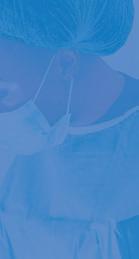




FFifteen years ago, Julie Celano reached a pivotal moment in her career. The veteran HR leader left a publicly traded insurance company for a role at a comprehensive cancer center. She never looked back. “If your DNA is about mission, then it’s easy to transition to moving toward something where you know the work is making a difference in the lives of people,” she says.
Celano wanted to surround herself with passionate, creative, like-minded people—those who want to bring a healthy dose of urgency and sensibility into healthcare. After all, nonprofit health systems have to “have a margin to have a mission.”
Now, Celano acts as senior vice president and chief human resources officer at the University of Kansas Health System in Kansas City. The nonprofit academic medical center features a Level I Trauma Center and accommodates nearly three hundred thousand outpatient visits per year.
When American Healthcare Leader first connected with Celano in 2019, she was just sixty days into her tenure and embarking on a journey to create lasting improvement related to diversity and inclusion. “People tell you to treat everyone the same, and I think that is completely misguided. We have to treat
everyone differently and respond to their uniqueness,” the SVP said as she described launching a “Be Here, Be You, Belong” campaign.
Nearly five years later, Celano says she is still “focused on making things better for the staff, so they can make things better for the patients.” But she wants to go beyond superficial measures and make a real difference.
The COVID-19 pandemic hit the University of Kansas Health System just after Celano was implementing programs, hitting her stride, and seeing the fruits of her labor. “Our people are resilient, but this pandemic has pushed them beyond what I think is reasonable, and they need more than pizza parties and food carts,” she says. “They need someone to listen deeply and know what it’s like to experience what they are going through.”
The University of Kansas Health System HR teams are responding by taking steps both small and large to address emerging well-being concerns. On one end of the spectrum, they’re working to implement hydration stations, put healthier food in the cafeteria, and provide education about the effects of good nutrition. They’ve also increased access to mental health services; removed time-consuming, low-value tasks from
 Julie Celano
SVP and CHRO
The University of Kansas Health System
Julie Celano
SVP and CHRO
The University of Kansas Health System
“If your DNA is about mission, then it’s easy to transition to moving toward something where you know the work is making a difference in the lives of people.”
job responsibilities; provided financial wellness tools; and strengthened communication across the organization.
Celano knows these measures touch care providers and patients alike. “Health outcomes for patients will be better if we’re making sure our providers are better,” she says. She adds those on the front lines can lead by example and influence their patients when they also are taking care of themselves.
While the system is making progress in many areas, Celano is bold and frank about what’s left to accomplish. She partnered with a consultant to develop a series of learning sessions designed to educate and promote the concept of inclusive leadership to her executive team and department chairs—a total of seventy-two leaders.
She is also working to develop a guiding coalition that will assist with the implementation of diversity, equity, inclusion, and belonging (DEIB) initiatives and has introduced principles cleverly adapted from the University of Kansas Health System’s mission statement to make DEI closely aligned with the organization. She took the existing vision statement and built DEIB principles into it so it would become part of the fabric of the organization—its “shared commitment” to DEIB.
Why is Celano taking this approach?
“Successful DEI takes hard and committed work,” she says. “You can’t simply hire diverse talent and hope things magically get better if you don’t educate your leaders about inclusive leadership.”
She also wants to ensure existing employees feel valued as well as safe. The University of Kansas Health System developed a new patient discrimination policy teaching providers how to respond to inappropriate requests for certain providers based on protected characteristics.
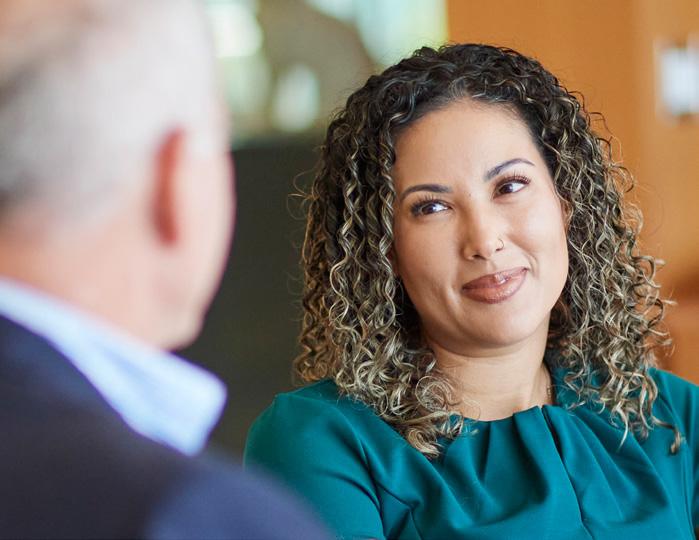
To Celano and her peers, moving DEI initiatives forward means thinking broadly about how they can maximize their impact to include people with disabilities. In the past twenty-four months, the University of Kansas Health System hired eight such individuals, including a blind cafeteria worker and a greeter with Down syndrome.
Celano continues to modify policies and hiring processes to focus on what people in this community can do and how to equip them to be successful in the organization.

For Celano, it all goes back to being mission driven. “My mission is to strengthen connections and give people an opportunity to thrive,” she says. “And this is the perfect place to do it.” AHL
Polsinelli : Julie Celano is not only a brilliant and accomplished leader in her field, but she is also a dedicated and thoughtful advocate for the employees of the University of Kansas Health System. As the chief human resources officer, Julie leverages her unique background, industry knowledge and passion to drive transformative diversity, equity and inclusion initiatives that truly put people first.

 By Billy Yost
By Billy Yost
Every year, Teresa Pacheco and a good friend choose a word they hope can define the next 365 days. In January 2022, Pacheco chose the word “intentional” in the hopes that in both her professional and personal life, the career benefits executive could place meaningful time and effort into making connections and moments really count.
Just a few months prior, Pacheco and her husband had moved from their longtime home state of Arizona to Winston-Salem, North Carolina. The transition afforded her the opportunity to step into the role of senior manager of global employee benefits at Hanesbrands, and then very quickly the role of director of that same group. With a career already spanning thirty years, the admitted “benefits nerd” easily slipped into the new roles.
However, the loss of two siblings within just two months of each other eclipsed Pacheco’s career success. The director’s willingness to talk about this incredible personal loss, she believes, is just living up to the standards of benefits specialists routinely helping employees through some of their most difficult and challenging moments.
“Focusing on mental health and well-being is critical for this job,” Pacheco says. “It’s so important to me, and I feel it’s important to hold myself to the same standard as the people I help support.” This true demonstration of intentionality in action only clarifies the critical impact Pacheco has on Hanesbrands’ efforts to enhance its HR programs.
The director’s résumé runs deep. She spent eighteen years in the benefits space for aviation companies, a handful of years in the musical instrument space, and a decade in supporting professional services. But what motivated a lifelong Arizonian to move across the country this late in her career?
“COVID really made me look at things differently in my life,” Pacheco admits. “I think a lot of us thought about our careers, our purpose, and our priorities. My husband was open to this big move, and we’ve really come to love it here in North Carolina.”
The executive is particularly excited about the new blood being injected into the 120-year-old company—young, old, and everywhere in between. Pacheco says the intentionality with which Hanesbrands is choosing to make itself over was an alluring prospect she just couldn’t pass up.
Upon joining the company, Pacheco found herself immediately promoted after the retirement of her boss. Both her predecessor and retired boss worked at the company for over thirty years, creating stability and the opportunity for Pacheco to start thinking outside the box.
“Every day, I’m looking for new and creative ways to make sure our people are getting everything they need at work and in their personal lives.”
“The foundation is very solid here, and now I’m just looking to expand it through the lens of the way we’ve all lived the past two or three years and build on it,” Pacheco explains. “It may be a buzzword right now, but I’m incredibly interested in addressing those social determinants of health, especially given the more rural feeling of our location.”
When Pacheco discusses the changing lens of how we view benefits, the new work-from-home focus brought on by the COVID-19 pandemic, the Great Resignation, and the more holistic approach to benefits, her push for intentionality could not be any more personal.
Pacheco lost her older sister to ovarian cancer in 2022, a condition she believes could have been mitigated had her sister attended regular medical checkups and treatment. Just two months later, her brother passed from COVID-19; his life, she thinks, could have been saved by vaccination.
“There is this incredible feeling of frustration,” Pacheco explains. “It’s now just my oldest sister and me. We’re all that’s left, and we just get on the phone and remind each other to go to that checkup, pay attention to your body, and do what you need to do to stay healthy.”
The executive wants the same for the people she supports. She wants all those at Hanesbrands to be able to see their next Christmas with their friends and
family—a desire that gets her out of the bed in the morning.
“Every day, I’m looking for new and creative ways to make sure our people are getting everything they need at work and in their personal lives,” the director says. “I want them to take their mental and physical health seriously.”
From the highest of highs to lowest of lows, 2022 h proved one of the most challenging years of Pacheco’s life. But she’s harnessing that pain to ensure a better existence for her coworkers with true intentionality. While she hasn’t selected 2023’s word yet, whatever it may be, there’s no doubt Pacheco will live it as fully in service of others as possible. AHL
At Cigna, good health and well-being are the cornerstones of our purpose and the driving force of our passion. We are champions for affordable, predictable, and simple health care. As a global health services company, our goal is to provide the right services and solutions, in the right setting, at the right time, to address the diverse health needs of our customers and patients in a highly personalized way—each and every day. We see healthcare as an investment in the growth of your business. Because we’re much more than a health partner. We’re a growth partner. Our data-driven insights improve both employee wellness and productivity, while our quality health care mentors provide your employees with the ongoing guidance they need to thrive. And when they thrive, so does your business. To learn more about how Cigna can help you continue to grow, please visit us at: Cigna.
YourNewGrowthPlan.com


Among its challenges, the COVID-19 pandemic exacerbated mental health concerns for many people across the country and around the globe. However, it also brought conversations around mental health and well-being to the forefront, catalyzing a shift in the way we approach care.
“The pandemic really opened people’s eyes and made it OK to talk about mental health issues,” explains Angela Oakley, vice president and CFO of WellPower, the Colorado-based community behavioral health organization formerly known as the Mental Health Center of Denver.
At WellPower, Oakley says, the approach to addressing those issues had begun to change long before the onset of the pandemic. “We have always been a very forward-thinking organization, so we had a couple of key initiatives well underway that timed out perfectly with the pandemic,” she says. “It wasn’t that these were brand-new ideas for us; it’s just that they came to fruition at a time when they were really necessary.”
In addition to the mental health landscape at large, Oakley has had a chance to witness the evolution of the nonprofit itself over her six years at the organization. From its recent rebranding to its introduction of innovative mental health programs, WellPower has positioned itself to lead the charge when it comes to defining and redefining what it means to support the mental health needs of the community it serves.
When she first joined WellPower, Oakley laid important groundwork for the organization to thrive. She focused on putting an effective team in place and demystifying organization financials,
Aan endeavor to which she has remained committed even as her responsibilities have broadened.
“My goal is to build the business acumen throughout the organization so that people really understand the financials in a way that’s different,” she says. “I love being part of conversations where people explain how the financials work in their own words.”
Although financial oversight is still a large part of her role, Oakley now spends an increasing amount of time collaborating with community leaders in Denver and the rest of Colorado on solutions to the area’s biggest problems in the mental health arena.
“One of the things that WellPower has been very involved in with the community, with the state, with the city is how we can be part of the solution to get the right care to folks, so that we can ultimately try to keep people out of the jail-ER cycle that comes from there being nowhere else to go,” she says.
To that end, WellPower opened its Behavioral Health Solutions Center in May 2021. The facility offers crisis triage and stabilization as well as transitional housing services. “It’s a first-responder drop-off location for individuals in the community who are in a behavioral health crisis. Previously, first responders could take people to jail or to the hospital; they didn’t have another alternative. This gives them that alternative,” Oakley elaborates.
Oakley cites WellPower’s Sanderson Apartments, a permanent supportive housing project, as another example of how the organization is creating alternatives to prison or hospitalization in

“Previously, first responders could take people to jail or to the hospital; they didn’t have another alternative. This [center] gives them that alternative.”
Denver. “We are heavily involved in helping the unhoused population and trying to end homelessness,” she says. “This is a place where folks can come and live for as long as they need it. Many people have been able to get their behavioral health issues under control, work toward a job, and ultimately move out and be on their own.”
The Sanderson Apartments comprise sixty units, all open to unhoused persons with criminal records. But, despite the program’s positive impact, Oakley recognizes it as just one step toward helping the many people in need.
“It’s going to take all of these creative types of solutions for change to happen,” she says. “That’s what I really appreciate about WellPower: we’re not afraid to dabble in a lot of different approaches at the same time.”
For instance, two other WellPower initiatives from the past few years—the Support Team Assisted Response (STAR) and Co-Responder programs seek to help individuals in crisis out in the community. Whereas the Co-Responder program pairs mental health workers with police officers, STAR has made it possible to bypass police involvement altogether in many situations.
“People call 911 for a variety of reasons, and not all responses need a police officer,” Oakley notes. “STAR is a mobile crisis unit staffed by a mental health worker from WellPower and a paramedic from Denver Health, which is one of the top hospital systems in the city of Denver. The intent of STAR is to send the right response to people in crisis. Together, we respond to many of the 911 calls about mental
health, substance use, homelessness, and poverty.”
Both programs signal a dramatic departure from traditional responses to mental health emergencies. That said, Oakley emphasizes that WellPower’s role in the community extends beyond crisis support—a sentiment the organization’s rebranding reflects.
“Our previous name, Mental Health Center of Denver, was sometimes limiting to folks,” she says. “Maybe ‘Denver’ was limiting, or maybe ‘mental health’ was limiting. Our new name speaks to our range of services and our belief that improving well-being strengthens people and powers our community.”





WellPower strives to reinforce the connection between well-being and mental health internally as well, through its programs for employees. Notably, the organization established a “living wage,” under which the lowest annual salary for a full-time employee in any role is $50,000. Per Oakley, this move was a way to take a stand on promoting financial well-being among workers in the emotionally taxing field of mental health.
As she looks to the future, Oakley is confident in WellPower’s ability to not only further expand its offerings but also inspire widespread change in the process.
“We want to continue pioneering bestin-the-nation programs and, ultimately, improve access to care,” she says. “And our models do not have to be just ours to own. We don’t shy away from folks asking us how we did something, and it would be really fantastic to see more programs like ours throughout the state and throughout the country.” AHL
Nancy
Ardell embraces new opportunities as Florida Cancer Specialists’ chief legal officer By Donald Liebenson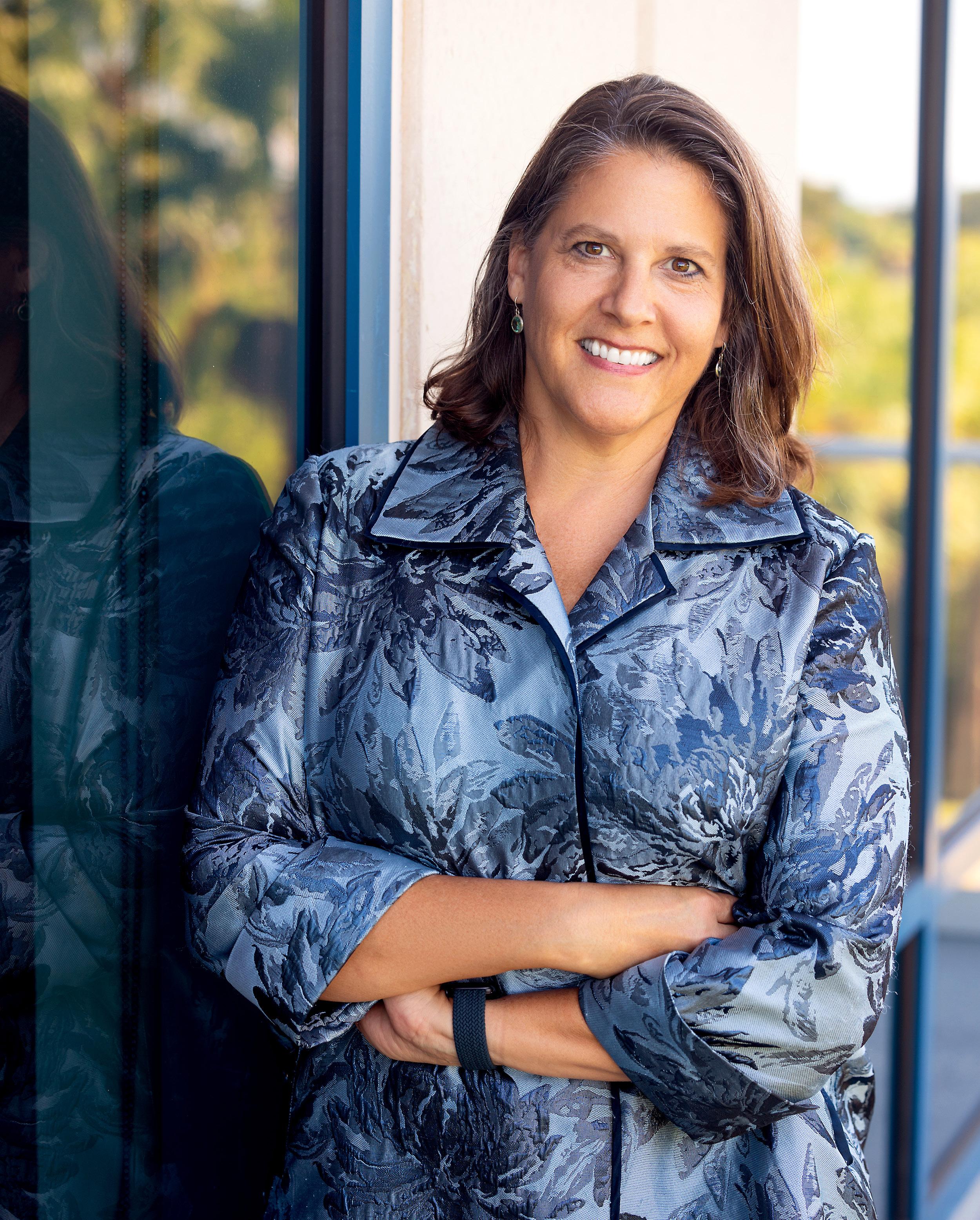 Nancy Ardell Chief Legal Officer Florida Cancer Specialists
Nancy Ardell Chief Legal Officer Florida Cancer Specialists
When American Healthcare Leader last visited with Nancy Ardell in these pages in 2019, she reflected on her more than two decades of experience in the legal space of the healthcare industry. At the time, she was at Chicago-based senior living provider Enlivant, where she served as executive vice president and general counsel. “Always be open to opportunities,” she said. “You never know when you’re going to find that dream job.”
Which is how, after a career spanning more than a quarter century, this lifelong Chicagoan finds herself in Tampa, Florida, where she serves as chief legal officer for Florida Cancer Specialists & Research Institute (FCS), responsible for legal, risk management and compliance.
“We love Chicago,” she says. “Florida was never on our radar. We had never been in Tampa, but we came down to visit, and you know what, it’s pretty nice down here.”
When the opportunity to join FCS emerged, Ardell had just wrapped up a hospital merger, underscoring for her the positive impact legal services can have on an organization, especially those that are in a transformational stage. “I enjoy the challenge of rebuilding teams and fostering collaborative relationships to help businesspeople and clinicians understand how the legal team can be a resource, make their lives easier, and mitigate risk for the organization.”
Founded in 1984, FCS has 100 locations throughout the state of Florida and 4,200 employees. Ardell joined the privately held and physician-owned organization
“If you find yourself looking for a new challenge or interest, pursue it; make a change.”
in April 2021. She defines her role of chief legal officer as “problem-solver.” As a strategic partner to the FCS board, CEO, and president & managing physician, she and her team focus on being effective communicators, synthesizing complex situations and information, and ensuring accessibility to different audiences.
She credits her liberal arts education with nurturing and developing her critical thinking and writing skills. “Everything else follows,” she says.
Ardell began her career in banking, but her mother inspired a switch to law. While Ardell was a senior in high school, her mother returned to law school and ultimately served as a judge for eighteen years.
“That was very liberating to me,” she says. “My mom was excited about what she was doing, and it was becoming clear to me that banking wasn’t going to be my long-term career. I learned that if you find yourself looking for a new challenge or interest, pursue it; make a change. I went into law school thinking some area of the law would call to me. That never really happened, but I enjoyed law school quite a bit. I enjoyed writing, negotiation, and bringing people together with appropriate resolutions. Turns out those skills work really well in-house.”
What Ardell likes best about her position are the partnerships and ever-expanding oncological research the organization spearheads. “There is a lot going on that introduces me and my legal team to many new and interesting issues.
I enjoy working with our board and executive team on long-term strategy.”
FCS has embarked on a Just Culture initiative to empower its employees. The Just Culture journey is a “company-wide, top-down” training program. “It’s a way of making sure we’re engaging people throughout the organization to identify issues, speak up, and propose solutions with the confidence that they will be treated fairly,” Ardell explains. “We are making sure we continue to develop a terrific corporate culture, where we can effectively recruit and retain employees. Our patients benefit from dedicated and happy employees.”
Just Culture is consistent with Ardell’s own leadership style. “I encourage problem-solving and open communication,” she says. “When I came to the company, there was a bit of dysfunction on the legal team. I expect everyone to develop productive relationships among one another and with others throughout the company. The sign in my office that reads ‘Work Hard, Be Nice’ is a good daily reminder. Jobs are more rewarding if we can solve problems together.”
Ardell encourages young lawyers to communicate in their authentic voice. “Learn how to effectively communicate instead of speaking with someone else’s voice. Your colleagues will respect your authenticity,” she advises.
There is another key piece of advice she offers young lawyers: “It’s never too late for a new adventure.” As someone who moved from Chicago to Florida for an exciting new opportunity, she would know. AHL
great work and great people come together.


Lori Custer discusses how she found her professional home at Harbin Clinic and why regulations and safeguards are important to driving positive outcomes
When American Healthcare Leader last talked to Lori Custer, the chief compliance and privacy officer at Harbin Clinic discussed the nuances of working in a compliance role for an organization that is physician-owned. At the time, she was also part of a team that built culture by crafting mission and purpose statements. In the years that have followed, she’s helped the clinic leverage that culture to navigate a global pandemic and adapt to ever-changing rules and regulations. She recently spoke with AHL again to provide the latest on what it means to solve today’s problems and why diversity, equity, and inclusion (DEI) matters.
You’ve been at Harbin Clinic for more than seven years now. What’s kept you there?
I found my home here. I first found a passion for healthcare, but Harbin has just been a great fit for me. Everyone I work with here understands how they tie into this mission. Even if we’re not directly serving people, we are still a part of patient care. If you’re in billing or compliance, you are helping the care providers stay in the business of taking care of patients. We all have a role to play.
How has COVID-19 impacted your work?
So much is different now. It really caused us to reevaluate our processes and procedures. It was a challenging time for everyone.
What was key to addressing the arising challenges?
Communication and leadership. We also had to figure out a new way to take care of patients. We very quickly stood up a robust telehealth program within a matter of weeks.
You’re obviously concerned about privacy and adjacent areas in a situation like this. How did you make sure these matters were addressed?
HarbinCONNECT is our program. We use platform providers who meet all the requirements from HIPAA, GDPR, and others. It’s a never-ending job to make sure you are compliant with all of the
regulations that come out, but you also have to make sure you don’t put unnecessary barriers between patients and care. That was important when we chose how to move forward.
What other issues have been front and center for you and your teams?
We’ve been doing a lot in DEI. These areas matter because we want patients and
“With all of the new rules and regulations that we may see coming from the government in the next two years, we all have to be at the top of our game.”
 Lori Custer Chief Compliance & Privacy Officer Harbin Clinic
Lori Custer Chief Compliance & Privacy Officer Harbin Clinic
employees to know they are valued. DEI also drives outcomes. We’ve partnered with DEI consultant Personality Matters to help us make some real strides.
We’ve seen a trend towards more vocal and outspoken patients and employees. Is that a positive or a negative in your view?
It’s a good thing. We make sure that our employees know that they have various ways to report compliance issues, and that if they choose, they can remain anonymous. Most of the time they feel comfortable enough to report to us using their identity. I would hope that is because we listen to their issues and try to solve their problems. As we all know, sometimes we can’t solve all the problems . . . but at least their voices are heard, and we make sure they understand all aspects around whatever issue they may raise.
What are your professional goals now, and how do they intersect with the future development of Harbin?
Harbin Clinic continues to grow and expand. I hope that I will continue to grow and learn from other compliance professionals. I have been with large health systems and small physician practices, so I feel I have had the benefit of experience in both worlds.
What’s next?
I think we will see more and more audits being done by CMS [the Centers for Medicare & Medicaid Services] and OCR [the Office for Civil Rights]. We are already seeing an increase in
audits around telehealth billing since the COVID-19 pandemic. Value-based care will be new to a lot of organizations, so education around documentation will need to be done in order to maximize reimbursement.
How does that impact you?
Compliance officers need to make sure they have the knowledge to guide organizations through these audits and changes and to make sure that education of employees and providers remains current. With all of the new rules and regulations that we may see coming from the government in the next two years, we all have to be at the top of our game.
And what’s next for you personally?
Personally, I say I had a midlife crisis and purchased two Tennessee Walking horses. Since I don’t have children, they are the center of my home life . . . in addition to my husband, of course. They were young when I purchased them, so I have had the joy of watching them grow and be trained. Everyone should have something that requires them to think about something other than themselves. Pets are perfect for this. They don’t care about the trials and tribulations of your day, just how much love and attention you can give them. They can put life into perspective! AHL
–W. J. Smith Lanier & Co., A Marsh & McLennan Agency LLC company: “Lori is a strong and dedicated leader for Harbin Clinic. I am proud to join American Healthcare Leader in recognizing her accomplishments and look forward to continued work together.”Clients, that include hospitals, physician groups, small physician practices, community health systems, DME.
AAAMB has a 24-hour turnaround time and a clean claim rate above 98 percent which is the industry gold standard.
AAA has teams following up on the claims unpaid within their usual turnaround time, such as 14 days for Medicaid.
AAAMB analyzes and reports trends in denial rates such as if their denials rates being higher than the industry average is due to backend or frontend processes such as patient registration, eligibility check, authorizations, and more
We perform a detailed contract analysis to determine if any changes in contract is needed to increase revenue and cash flow.
AAAMB will perform an end-to-end practice management analysis and provide a free report that entails the key performance indicators and recommend changes that ensures you are paid the full amount from patients and providers.
AAAMB offers providers visibility on information regarding the status of insurance claims as well as real-time updates and reports. We will walk providers through these reports to ensure full comprehension of AAA’s work



Myra Altman and her Modern Health team provide excellent global mental health support for enterprises globally
As a clinician and researcher, Dr. Myra Altman always focused on the big picture. Her interests included anxiety, obsessive-compulsive disorder, and sleep, but her work consistently returned to a systems perspective: how can mental health professionals support the health of the whole person, and how can they understand the context in which that person lives?
“I got very interested in a systems view and how different factors influence mental health,” Altman says. “A lot of us think of mental health as ‘things an individual should do,’ but we know that person exists in the context of many areas. How does their work help them? How does their community help or harm them?” While many of her research colleagues focused on specific areas, Altman found her interests broadening and integrating these contextual questions.
At Modern Health, Altman serves as vice president of clinical research and strategy. Leading a team of sixteen, she is on a mission to ensure that the organization provides excellent mental healthcare for the employees it serves and assess and improve that care continuously. Modern Health is a mental health support platform providing a variety of care options and support tools to its members around the world.
“It’s important to me that we’re innovating in a way that’s safe and high-quality,” she explains. “The level of need in mental health around the globe will not be met by clinicians alone, nor by technology alone, but there’s something magical that happens when the best tech and clinical minds come together to ask how we can meet this need.”
Altman notes that the demand for mental health services is high (and increasing), while availability remains limited—there aren’t enough trained clinicians. One way that Modern Health addresses the gap is by offering multiple types of support. Not every member is looking for or needs the level of care provided by a psychiatrist or a therapist; many can benefit from working with coaches, self-guided courses, groups, or meditations. Addressing those needs can have a strong positive impact on one’s mental health.
Another useful support tool has been Modern Health’s Daily Pause, a piece of featured mental health content at the front of the app and web portal. “You might only spend a couple minutes reading through it to learn something or think about something differently, but we also use it as a way to connect to other types of care,” Altman explains. “You might go on to match with a coach or a program. Plus, we find that 84 percent of people who do the Daily Pause say it improves their well-being; it’s very lightweight, but it can actually have an impact.”
Alongside Modern Health’s clinical strategy and research team, Modern Health’s clinical and scientific advisors, a group of accomplished clinicians and academics, provide insights and feedback across the platform. In putting together that team, Modern Health looked for diverse, highly qualified mental health experts who could examine specific areas of the platform and challenge the team to advance their product thoughtfully.
“One thing that’s really important to me is that these are not just advisors in name only,” Altman notes. “We

made sure that each advisor has a partner on the clinical strategy and research team, and they work very collaboratively to incorporate their feedback into the relevant efforts.”
Another group, the Global Inclusion Council (GIC), offers a platform for Modern Health providers around the world to share feedback on issues of equity and cultural specificity. As the company’s global membership expands, it’s crucial to maintain and advance equitable and culturally centered care, Altman says. Through the GIC platform, providers can share insights with the Modern Health team to illuminate blind spots and implement changes. Because the language and tools of mental healthcare vary from place to place and culture to culture, contextual sensitivity is important to Modern Health’s goal of reducing stigma and creating access across the globe.
“They’re licensed therapists and certified coaches from around the world who meet monthly to provide feedback on our platform and member experience to make sure it’s culturally relevant,” Altman explains.
“For example, therapy doesn’t mean the same thing to people around the globe, so specificity is hugely important to getting people to access the platform.”
In all of her work, clinical quality is paramount, Altman emphasizes. She points to a selection of peer-reviewed studies demonstrating the quality of Modern Health’s global provider network and services. The most recent indicates that Modern Health members who used any one-on-one service were more two times more likely to improve in clinical depressive symptoms than those who did not.
The need for excellent mental healthcare will continue to grow, and Altman sees Modern Health and its technologies as important tools to address it. “The technology is here to stay, so anything I can do to help bring talented clinicians and scientists into this space will really benefit everyone,” she says. “Every time we put out a piece of research, the standard of care gets raised, and that’s one thing I focus on a lot: how do we continue to raise the bar on quality?” AHL
“A lot of us think of mental health as ‘things an individual should do,’ but we know that person exists in the context of many areas.”
Every step executives take on their career journeys is pivotal to achieving their current successes. Along the way, individuals accumulate technical skills, foster relationships, and develop the leadership acumen that have turned them into pioneers of the industry.
60. Mary Rotunno El Camino Hospital
64. Erika Cerwin Biogen
68. Laura McBride + Sonja Rajki The MetroHealth System
72. Hanna Yoon
76. Justin Witzmann NuVasive
78. Andrew Treaster DaVita Kidney Care
82. Brittany Long Elanco
86. Sherill Sampson Kirksey Howard University
90. Neil Stein OrthoCarolina
Mary Rotunno’s experience at various levels of healthcare helps her effect changes at the governance level to improve the lives of patients at El Camino Health and beyond
By Lucy CavanaghMary Rotunno’s interest in healthcare, particularly nursing, began when she was very young—she got her first experience as a candy striper in high school. After completing her bachelor’s degree in nursing, Rotunno worked as a pediatric nurse and then as a traveling nurse, which exposed her to a variety of hospitals and regions.
“My time traveling was very important because it was early in my career, giving me the opportunity to work in different places and have different leadership roles at hospitals on a temporary basis,” Rotunno reflects. “I had to figure out the culture of the group that I was working with while leading and figuring out how to influence and make an impact quickly.”
Shortly thereafter, Rotunno again felt a pull toward advancing her education. She originally planned to go back to school for a master’s in pediatric oncology, but the job market for clinical specialists at the time was not optimal. So she considered a different route: law school. She attended the University of California, Hastings College of Law and joined Pillsbury Madison & Sutro upon graduation, where she practiced commercial, environmental, and employment litigation. However, her nursing background made her the perfect fit in healthcare, where she decided to build her career.
“I think my experience as a clinician has helped me understand patients’ perspectives,” Rotunno says. “Working as a nurse, you work directly with the patients every day and really understand how healthcare impacts patients on a direct and daily basis. I try to bring that patient perspective to the healthcare
boards that I serve on and in my role as general counsel, as well.”
Rotunno was recruited to an in-house regulatory position by her healthcare client, nursing home operator Beverly Enterprises. This career move required relocation to Fort Smith, Arkansas, from San Francisco. “I think a lot of people are resistant to change, and that holds people back,” she says. “I would advise young professionals to be open to moving to a geographic area that you’re not particularly interested in, for the right opportunity, which is what happened to me in Arkansas. It was there that I transitioned my career from litigation to healthcare.”
Rotunno ultimately returned to the Bay Area and joined Dignity Health as senior counsel and client service leader, serving as regional counsel for multiple Bay Area hospitals. During her tenure at Dignity, she founded the Medical Legal Clinic through St. Mary’s Medical Center. The
“I think my experience as a clinician has helped me understand patients’ perspectives.”

clinic addresses social determinants of health and provides legal counselling for low-income patients whose health was at risk as they faced legal issues such as substandard housing, eviction, disability rights, and employment discrimination.
In 2014, Rotunno joined El Camino Health as general counsel and a member of the executive leadership team, where she currently sits. “I really enjoy supporting and advancing health system strategy,” Rotunno explains.
In 2019, Rotunno continued that strategic mindset and joined the board of Momentum for Health and became its board chair in 2020. Momentum for Health is one of the largest providers of mental health services in California’s Santa Clara County. The organization focuses on a seamless delivery of comprehensive behavioral health services that are accessible, integrated, effective, and engaging, in order to provide the best treatment possible for patients.
As board chair, she led the Momentum Board in approving a new strategic plan and influenced a strategic merger with a specialized residential
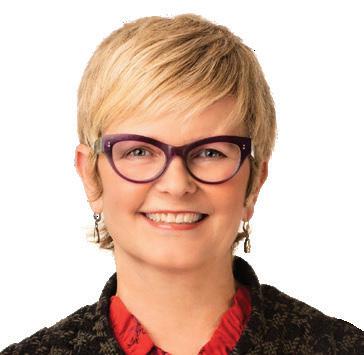
program for pregnant women and mothers of young children to enhance Momentum’s addiction treatment services for the community.
Additionally, she is an active board and audit committee member for public pharmaceutical company Vistagen Therapeutics Inc., which develops potential new-generation pharmaceutical treatments for depression and anxiety.
Rotunno is also board member for SaNOtize Research and Development Corporation, which is commercializing nitric oxide as an anti-infective and has developed a nasal spray to prevent and treat COVID-19.
Rotunno is able to bring her wide range of healthcare leadership experience and her patient-oriented perspective to the governance level through her diverse board service, where she has greater impact on advancing health and wellness.
“Through my board roles, I have the ability to influence healthcare more broadly in three different settings versus working in my executive role at one company and in one geographic location,” she says. AHL
“I would advise young professionals to be open to moving to a geographic area that you’re not particularly interested in, for the right opportunity, which is what happened to me in Arkansas. It was there that I transitioned my career from litigation to healthcare.”
As head of US data and analytics at Biogen, Erika Cerwin has her finger on the pulse of emerging trends. She knows that everything is moving towards enhancing the customer experience and creating a 360-degree view of the patient.
As technology, finance, and healthcare come together, Cerwin is in the perfect position to leverage her unique background to make an impact at the global biotech company known for its history of innovation and ongoing commitment to battling neurological diseases.
Cerwin didn’t begin her career in healthcare—a fact that she’s turned into an asset as she harnesses the power of AI
and machine learning to participate in an important digital transformation at one of the industry’s major players.
The North Carolina native first studied finance, investment banking, and private equity. She credits her father—a former IBM employee in semiconductors and networking, who also held senior roles in networking and computer science at North Carolina State University and University of North Carolina at Chapel Hill—with reminding her how big a role computer science and technology (and specifically analytics) would likely play in any career.
That thought stuck with Cerwin as she started her professional life as an
investment banking analyst and private equity associate. After advising founders as they started new companies and helping large clients find investment vehicles, she followed her father’s footsteps to IBM and made her way onto an analytics team.
As a senior business analytics and optimization consultant, Cerwin made her first foray into healthcare by serving GSK. She later joined the pharmaceutical manufacturing company full-time to deepen her skills in advanced medical analytics. After six years, Cerwin was ready to unite her interests in finance, technology, and start-ups to address a need she saw
in the marketplace. She codesigned and cofounded BeSpree, an app that helps chronically ill patients make healthy choices and find healthy activities. Users log in to find trusted and verified locationbased health and wellness groups in their communities.
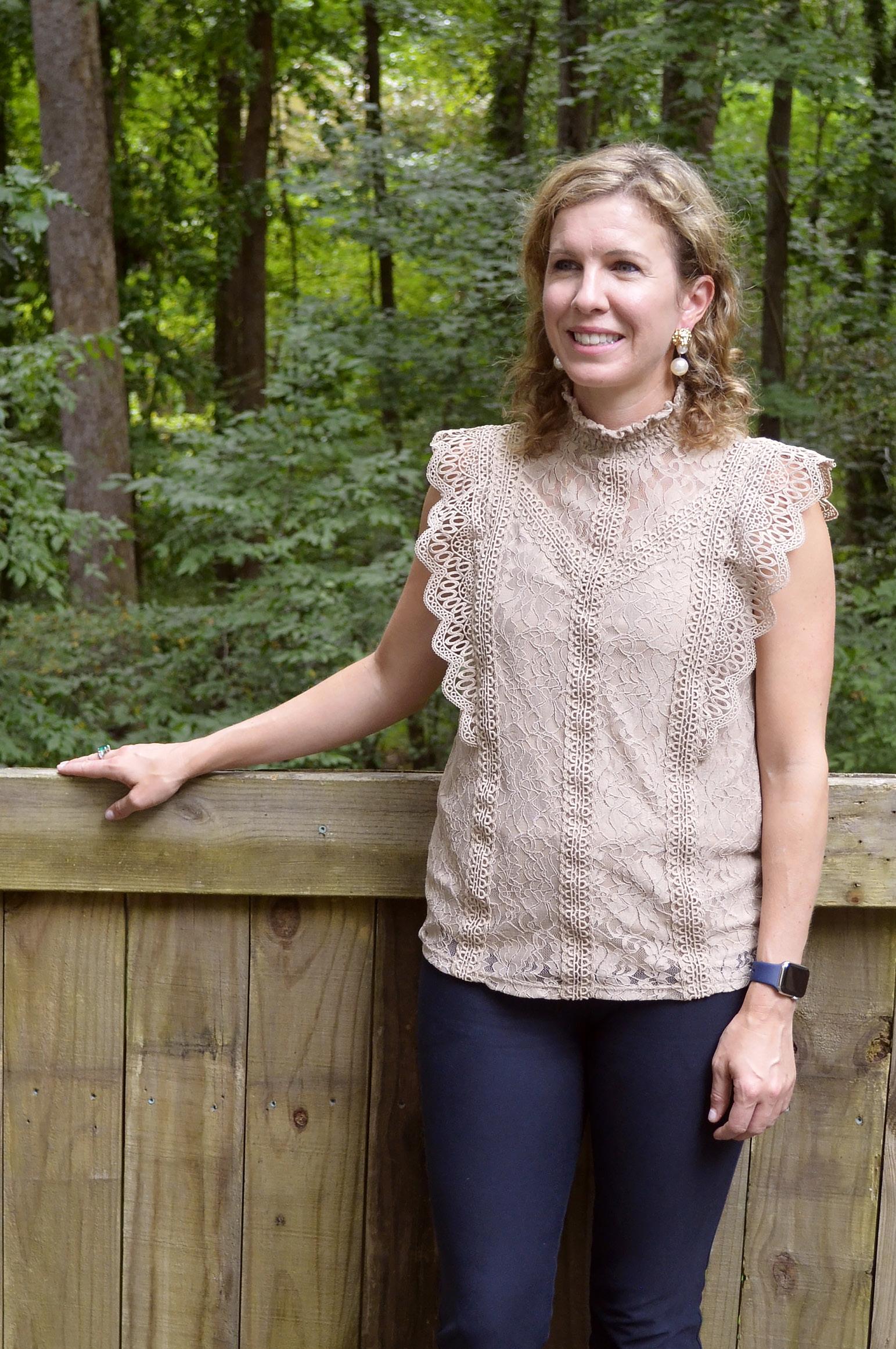
To launch BeSpree, Cerwin applied to incubator programs and partnered with nearby government agencies, prominent local physicians, and community groups like birth and wellness centers. “We really wanted to create a cross-platform mobile app that would connect patients to people and services and help users engage in healthy living with others,” she explains.
Building BeSpree and engaging various partners deepened Cerwin’s appreciation for what data, technology, and analytics can do in healthcare. “As I got more direct experience, I saw how everyone I was working with was more and more concerned about what the patient needs and how we can meet patients where they are,” she says, adding that she started thinking more about agile development and flexible thinking.
With this in mind, Cerwin joined Biogen in 2020 to lead the organization’s digital transformation. As the first person to hold the role, she was tasked with building and implementing a digital and data strategy for an entire function on the company’s pharmaceutical operations and technology side.
When Cerwin arrived, Biogen had just started the process of building a large state-of-the-art manufacturing facility in Solothurn, Switzerland. There, workers produce ten metric tons of antibodies per year. Cerwin and her team work behind the scenes to use data to analyze efficiencies in manufacturing to improve the process at Solothurn and Biogen’s
Erika Cerwin Head of US Data & Analytics Biogen1978
The company is established in Geneva, Switzerland.
1979 Biogen scientist Charles Weissmann clones active human leukocyte (alpha) interferon.
1980
The Nobel Prize in chemistry goes to founder Walter Gilbert for his work on DNA sequencing.
1986
Biogen opens manufacturing facilities in Cambridge, Massachusetts.
1993
Founder Phillip Sharp earns the Nobel Prize in medicine for discovering split genes.
1996
The FDA approves Biogen’s interferon beta-1a for the treatment of relapsing forms of multiple sclerosis.
2002
The company’s new manufacturing facility opens in North Carolina.
2007 Biogen acquires Syntonix Pharmaceuticals
and develops two new hemophilia therapies.
2010
The FDA gives Biogen approval for rituximab with chemotherapy for the treatment of chronic lymphocytic leukemia.
2014 Biogen announces FDA approval for two hemophilia A and B treatments, which represent the first significant hemophilia advancements in twenty years.
2018
Employees celebrate Biogen’s fortieth anniversary.
other facility, in North Carolina’s Research Triangle Park. It’s important work, because with each improvement, Biogen is able to accelerate the delivery of its therapies to the sick patients who rely on them.
These improvements are not confined to the operations side. On the commercial side, Cerwin uses data to track scripts, identify bottlenecks, deploy sales teams to physicians’ networks, and gain a holistic view of customers and patients. She’s empowering her colleagues to deliver actionable insights. They buy millions of dollars’ worth of data and find novel ways to apply standards, governance, and analysis so leaders can make informed strategic investments and business decisions.
Cerwin’s colleagues outside Biogen are excited to see the results of these efforts. “Erika’s passion for using data science to advance patient access to life-changing drugs and therapies, along with her commitment to data privacy and security, is helping drive digital transformation at Biogen,” says Gaurav Marya, vice president of life sciences at IT company Cognizant.
The experience at BeSpree helped Cerwin learn a few things that inform her work at Biogen. “Data ethics and
“We can understand and anticipate the needs and challenges our patients and customers face.”
privacy matter at companies both large and small,” she says. “We are stewards of the data we have, and we have to protect that data.”
While there is some inherent risk involved with accessing and using data, Cerwin knows the potential greatly outweighs the danger. “We can understand and anticipate the needs and challenges our patients and customers face,” she says. As the industry continues to think about how data and the patient experience can go hand in hand, she’s looking forward to a day where custom notifications automatically alert patients to financial assistance, transportation, refills, and other services.
Now, Cerwin is focused on supporting Biogen through a key transition. CEO Michel Vounatsos has stepped aside to make way for a new leader. The company is eliminating commercial plans for aduhelm and submitting a second Alzheimer’s therapy, lecanemab, for FDA approval. Biogen is facing a strategic refresh, and with Cerwin in place, it’s certain to be one centered on the power of data. AHL
Cognizant is of the world’s leading professional services companies with more than 75,000 employees focused on the healthcare and life sciences industries. Cognizant helps its clients advance science to improve patient outcomes, from helping to set the pace in clinical development and strengthen regulatory infrastructures, to modernizing manufacturing and enabling improved market competitiveness. The Cognizant life sciences team provides domain-aligned consulting, technology, and business process platforms and solutions globally, serving the world’s top 30 pharmaceutical companies, 9 of the top 10 biotech companies, and 14 of the top 15 medical device companies. For more information, visit Cognizant.com/LifeSciences. © Copyright 2022,

It’s somewhat unusual for a company to employ two general counsel, but that’s been a secret to success for the MetroHealth System, as attorneys Laura McBride and Sonja Rajki have found a great rhythm for working together.
Surprisingly, neither woman originally pursued a career in law.
McBride thought she was headed to medical school to follow in the footsteps of both her parents, who were physicians. Instead, she wound up getting a master’s in public health, enjoying the policy aspect much more than medicine. An early job with the Department of Health and Human Services in the Inspector General’s office taught McBride about administrative law and the regulatory system, and her interest led her to law school at the George Washington University Law School.
Meanwhile, Rajki, a religious studies major, had an early interest in biomedical ethics, and an adviser recommended she also get a public health degree. After looking into it, she decided a dual degree with law made the most sense for what she wanted to do with her life. She took jobs in public health while finishing her law degree.
Rajki had experience working in a hospital system in Iowa: when she moved to Cleveland, she practiced at a law firm before the MetroHealth System recruited her. “I saw that I could come here and be here when healthcare reform was happening. I thought I might just be here a couple of years, but here it is ten years later and I’m still here,” Rajki shares.
As soon as McBride got to Cleveland, she wanted to join MetroHealth. “My parents had trained here, and Metro was the perfect overlap for me with healthcare and public administrative law, because we’re a county hospital,” she explains. “From a legal perspective, it’s more interesting to be doing hospital things here because of the public overlay.” She approached a partner about the possibility, but nothing was available. It wasn’t until six years later that the organization hired McBride.
When MetroHealth learned the former general counsel would be retiring, leadership kicked the tires on the idea of creating a team for the position. “We were both not even yet deputy general counsel
together when we turned to each other at one point to look at the future,” Rajki says. “We had talked about what we wanted out of our careers and lives, and did quite a bit of research on how being co-general counsel could help our careers, the hospital system, and our team.”
Neither could conceive of someone else caring more about Metro than either of them, and both knew that no one would be more qualified, so they proposed the idea of working together to the higher-ups.
“One of the aspects we like the most is that we can continue to be practicing lawyers because we are able to share lead responsibilities and C-suite engagement,” McBride offers. “That gives us more time
“We get to help move the health system forward and work on cutting-edge projects that are mission-value based.”
—Sonja Rajki
to do legal work, which we both saw our previous boss wasn’t always able to do as much. We felt it was a great way to provide value to the system.”
The secret for making things work is communication, keeping egos in check, and being savvy collaborators. “We knew it was unusual and difficult, and we sought coaching and learned insights from others who have had successful partnerships,” Rajki notes.
Together, as co-general counsel, they prioritize the organization of their approach through the coordination of all things legal, recruitment, and retainment.
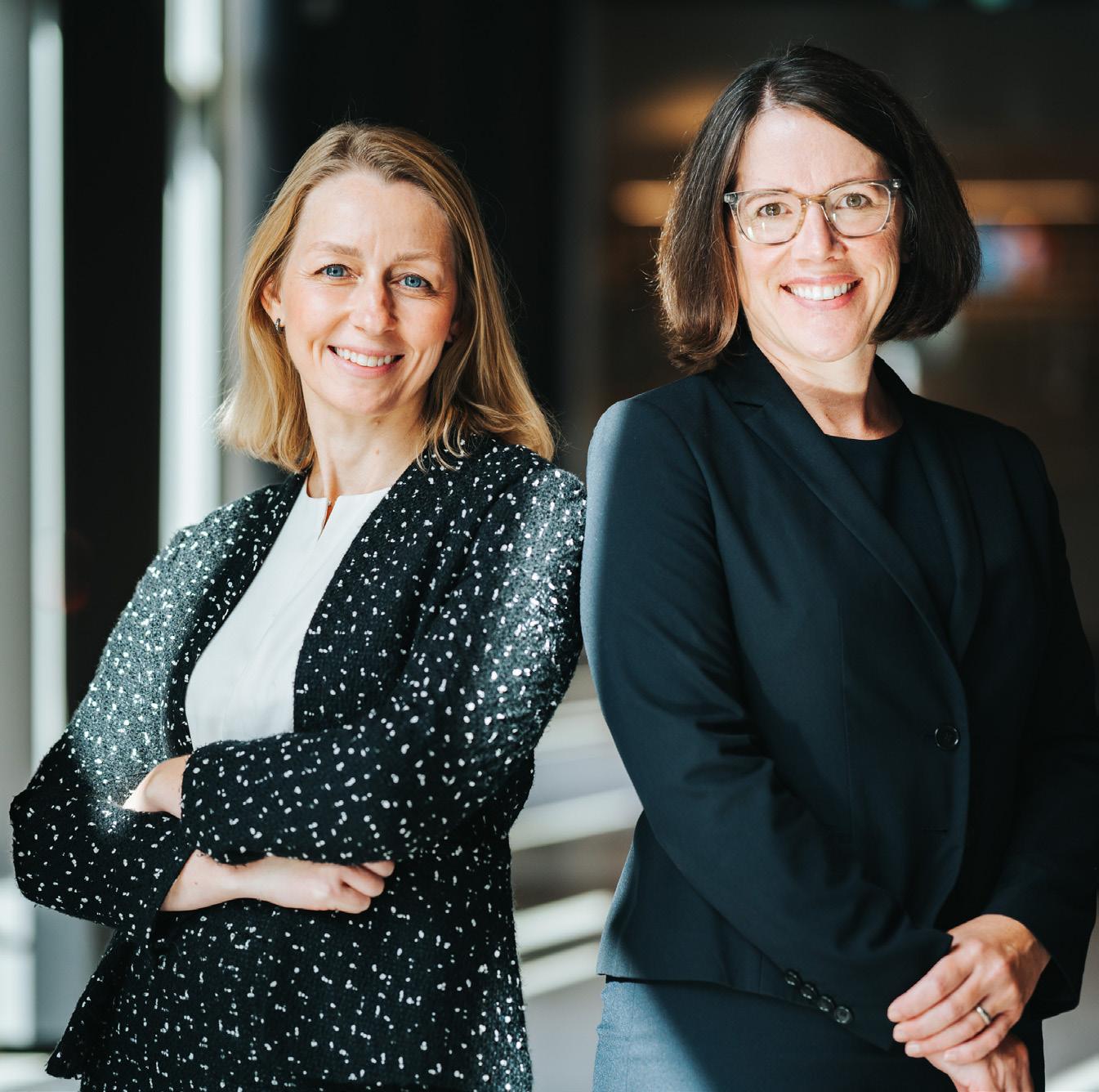
“One of the things we’ve always focused on is that we’ve been incredibly thoughtful in how we think about our team in terms of structuring their work scope and areas of responsibility,” McBride explains. “There’s always a little bit of fluctuation as our team’s interests change or our clients’ needs change, but we’ll always look to balance what Metro needs from a depth and breadth perspective.”
Today, they lead a team of sixteen legal experts as MetroHealth goes through a huge period of growth under Dr. Akram Boutros. This includes the expansion of the school-based health program, with clinicians and nurses deployed throughout the Cleveland school system.
“We’re pushing legal boundaries and navigating appropriate solutions that are best for the community in all sorts of areas, with lots of focus on social determinants of health and making sure that care is getting out to the community. We do our part from the legal perspective so our providers can provide innovative solutions for the community,” Rajki shares. “We get to
Laura McBride SVP, General Counsel The MetroHealth System Sonja Rajki SVP, General Counsel The MetroHealth Systemhelp move the health system forward and work on cutting-edge projects that are mission-value based.”
The dynamic duo also focuses on diversity issues throughout the company—both legal and otherwise— helping to push through initiatives and contracts championing women and minorities.
“Legal has a large role to play in this, in making sure terms of the contracts are going to be enforced for diversity,” Rajki says. “And making sure there are opportunities for diversity in all the vendors we are looking at.”
The two also initiated a compressed workweek for department staff, including attorneys, at MetroHealth, which has proved to be a big accomplishment. Staff can now have a day off every other week, or half a day every week.


“We’ve been in a pilot for about six months now, and it’s been very successful to our key stakeholders and our clients, many of whom didn’t even realize it was happening,” McBride states. “We’re looking for ways to keep the workforce engaged, while providing flexibility and dependability.” AHL
•
•
The attorneys of Calfee, Halter & Griswold LLP are proud to support innovative healthcare clients like Laura McBride and Sonja Rajki.For 120 years, Calfee attorneys have provided meaningful legal counsel in matters critical to the success and growth of health care clients like The MetroHealth System.
To keep an open mind, Hanna Yoon withholds assumptions and judgments but asks a lot of questions
By Frank DiMaria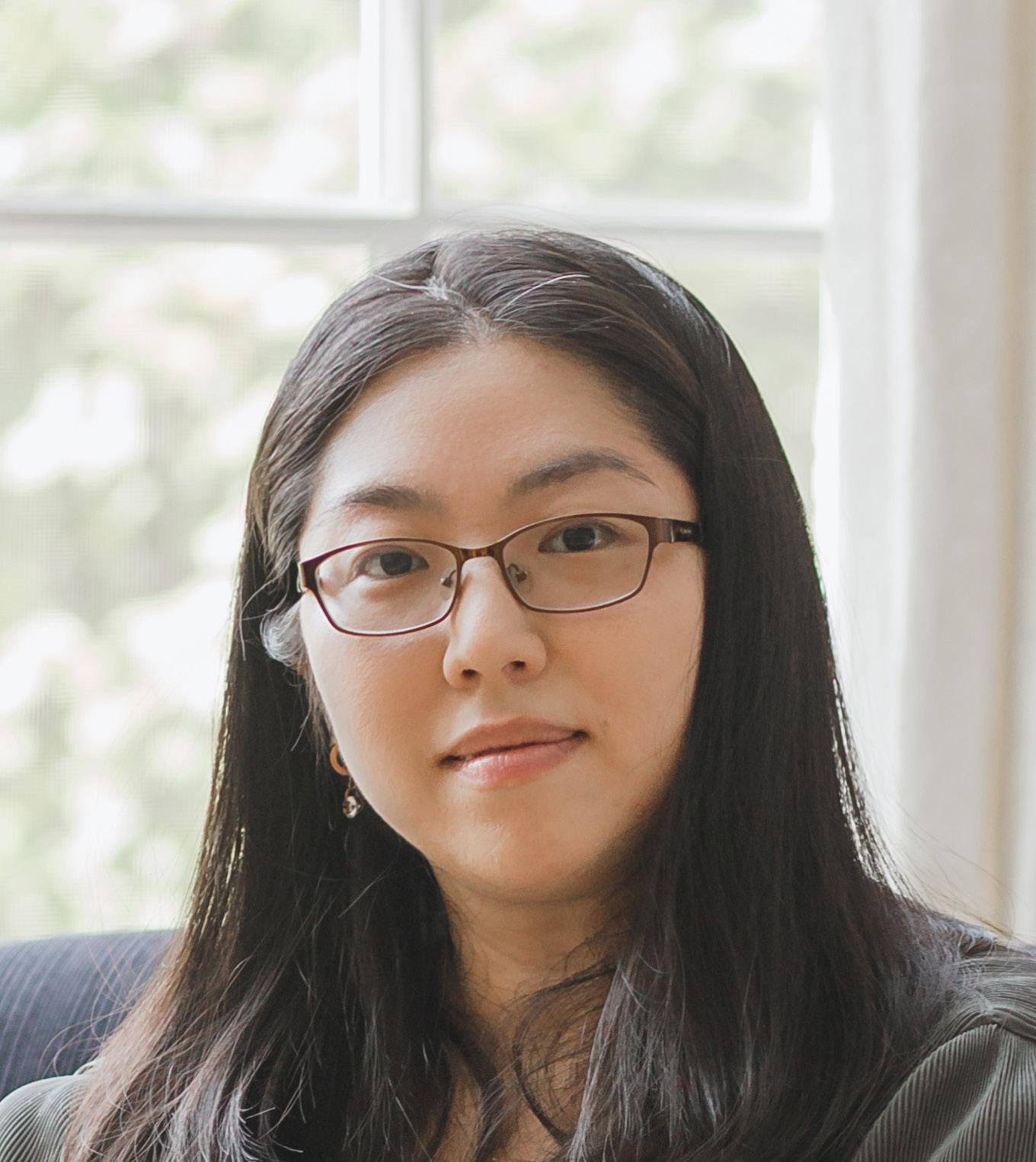
Although not a native of the US, Hanna Yoon had visited all fifty states by age twelve. Born in Seoul, South Korea, she emmigrated to the US at age four with her parents, only to return to Seoul eight years later. There, she attended an international school primarily composed of ethnically Korean students, the majority of whom were expatriates from a variety of countries.
At fourteen, Yoon returned to the US to attend boarding school in New Hampshire, throwing her into yet another multicultural environment. While most of her classmates hailed from the States, the school’s student body represented thirty-three foreign countries.
“I spent a lot of time with people who might have looked very American and sounded American, but were from a lot of different cultures,” says Yoon, senior counsel for IP at a major US healthcare company. Her classmates spoke perfect English, but their different backgrounds yielded diverse thought processes. “It was interesting to talk to people from different backgrounds, because that really puts into question assumptions you make in life and the things you take for granted,” she says.
Socializing with individuals from a variety of countries at an early age, along with her world travels, provided Yoon with her foundation for her life and career decisions. “That really set the stage for the rest of my decisionmaking,” Yoon reflects. “The priorities that I decided on still inform the way I think, and it’s the lens through which I assess all situations.”
“I spent a lot of time with people who might have looked very American and sounded American, but were from a lot of different cultures.”
This perspective motivates Yoon to withhold assumptions and keep an open mind, but it also leads her to ask questions with often obvious answers. To make decisions efficiently, she relies on human psychology, which naturally employs heuristics. Assumptions play a critical role in this process, and although her assumptions are often correct, they’re not correct often enough, giving her pause and prompting the need to ask an abundance of questions. “I’ve been burned too many times making assumptions from one culture to another,” she says.

Yoon started her twelve-year legal career at LG Electronics in South Korea but felt drawn back to America. “My formative years were spent in the US, and I guess my identity was quite solidified during that time,” she offers. Recognizing a great career opportunity, Yoon left South Korea and her family and accepted a job at Baker McKenzie in Chicago.
After two years, she moved to Fresenius Kabi, splitting her time between Illinois and Geneva, Switzerland, in the fields of biosimilars and medical devices. She remained there for eight years, becoming associate general counsel before moving to a major US healthcare company, where she continues to practice as a patent attorney.

When Yoon entered the field of biosimilars, it was a relatively new area of law, and she needed direction. “How do you learn unless you learn from someone who knows more than you do?” she asks. Yoon turned to outside counsel, which played a crucial role in her growth. “Everything that I’ve learned, everything




that I came to acknowledge as a skill I’ve obtained, it’s been with the help of really good outside counsel,” Yoon says. “It changes the outcome of the in-house attorney’s quality of experience.”
The counselor’s extensive international experience informs the persuasive strategies she employs as a lawyer. She says there’s a spectrum across cultures for three parameters: hierarchy, individual versus collective decision-making, and achieved status versus ascribed status.
For example, South Korea presents a very different business atmosphere than the US. Firstly, the Asian country remains more hierarchical, meaning at LG, Yoon had to subscribe to and respect that established hierarchy to exert her influence. Further, South Korean companies adopt collective decision-making more so than US companies. Respecting that parameter, Yoon aligned the necessary groups she was trying to persuade. She says, “You might be barking up the wrong tree if you’re trying to persuade just the main stakeholder.”
Finally, in South Korea, ascribed status—e.g., one’s hometown, family/ societal background, or lineage—proves surprisingly important in addition to achieved status. Yoon says, “When you’re trying to persuade in that kind of environment, issues have to be emphasized differently in Korea verses when you’re working in the US.”
Overall, she says, “It’s important to understand where your specific environment falls on that spectrum in order to make an impact effectively and persuade others.” AHL
Three years ago, Justin Witzmann went in-house at NuVasive, a medical device company highly committed to patient care. In the process, he found a home. By
P. Ellen LoseW
hen Justin Witzmann first joined NuVasive, a San Diego-based medical device company focused on spinal surgery, he wasn’t particularly familiar with that area of the medical world. Still, he was drawn to the company’s passion for patient care, and already had experience with some of the product liability, commercial litigation, and employment work he’d be performing in his new position as senior litigation counsel.
Before being hired at NuVasive in 2019, Witzmann practiced law at a firm doing general defense and civil litigation within California. He was on the track to make
partner, but he’d always wanted to go in-house. Three years and one promotion later, he’s now the director of legal affairs at NuVasive with a primary focus on global litigation and risk management.
In-house opportunities haven’t always been easy to find in San Diego, especially ones at a company as purpose driven as NuVasive. Witzmann is captivated by the company’s vision of changing a patient’s life every minute, and he applies this focus to his legal strategy. “Spine surgery carries risks. There are going to be lawsuits. We’re trying to defend the company, but we still do that with patients in mind,” he says.
Witzmann’s approach is emblematic of the culture at NuVasive, where innovation is a core value: not only as it relates to its products and technology, but to its cross-functional teamwork. He explains that the litigation team is not confined to its department alone, but is also involved in marketing and front-end dealings. “We provide guidance and support on a variety of marketing projects to help promote the company’s products in a legally compliant manner that aligns with the company’s vision,” he says. But because of the rigorous manufacturing testing processes required
for product approval, Witzmann and his colleagues find it easy to stand by NuVasive products.
The cross-functional nature of Witzmann’s work allows him to see the depth of commitment that everyone in the company has to the patient. “It is one thing to say we change a patient’s life every minute, but in dealing with and working with legal and cross-functional teams from executives to sales, marketing, regulatory, and quality, it is really embodied in what we do,” he says.
Witzmann also praises NuVasive’s partner law firms, which function like extensions of the legal department. “The lawyers we work with do a really good job of knowing our business and our employees—for instance, those who need to defend a deposition of a corporate representative,” he notes. “Often the same executives will be required for multiple cases, so they establish relationships and apply a consistent approach that is business focused.”

There is no one case that stands out to Witzmann from his tenure at NuVasive, which he believes is likely a good thing. He points out that a small percentage of cases go to trial, and litigation can take years. Sometimes cases will be resolved the day before trial.
Internally, Witzmann offers an open door to the case managers on the

NuVasive legal team. His approach to guiding the team is rooted in not only his legal expertise, but also his sports background. Witzmann played football in college at Charleston Southern University and describes how the coaches he appreciated most made themselves available but also gave him freedom.
“My leadership is indicative of how I thrived: autonomy but not micromanaging. I’m always available if issues come up,” he says. “From leadership you need guidance from those who have more or different experience. You don’t want to make folks hesitate before they reach out, but also want to empower them to grow on their own.”
Long-term, Witzmann aims to ensure that NuVasive can continue to develop innovative products and procedures to improve patient lives. On the legal and liability side, he explains, the goal is to stand in the way as little as possible (while still protecting the company).
People are at the center of everything Witzmann does, in both his personal and professional life. At home, he and his wife Breanne are raising a two-yearold son, Rhett (and a golden retriever, Ronan, who’s also two). But Witzmann has found another home at NuVasive, where he’s discovered his passion for working at a company that’s dedicated to helping people. AHL
“My leadership is indicative of how I thrived: autonomy but not micromanaging.”
You can point to a dozen differentiators that set Andrew Treaster apart. His graduating class comprised twenty-six people in his small farming town in Kansas. His family’s homestead dates back 150 years; he knows this because this year marks the sesquicentennial.
Treaster grew up with John Grisham books under his arm. Imagine seeing a fifth grader pulling out his copy of The Firm on free reading day. None of these are the standout details of the lawyer’s practice, though. Those are found in his first job.
Treaster, currently director and assistant general counsel for commercial litigation at DaVita Kidney Care, took his first job with the prestigious firm Arnold & Porter not because of the name, not because of the network it would plug him into, but a different reason entirely.
“I had applied to a number of different firms and had done so many interviews,” the lawyer remembers. “But the big reason I picked Arnold & Porter was its pro bono practice. The firm is well known for doing interesting and varied pro bono work, and that really appealed to me.”
That’s the through line of Treaster’s professional practice. Wherever he is, he finds time to do the kind of legal work that can help alter the lives of his clients. While in private practice, Treaster helped successfully try a case against Chipotle for pregnancy discrimination.
He worked on behalf of national parks and monument-designated land. He even argued in front of the DC Circuit Court of Appeals in a complex hostage-taking case. All pro bono. But why?
“Growing up in Kansas, both of my parents were educators [his father also served in the Kansas state legislature], and I think a lot of people in my family and in our area saw public service as a part of life,” Treaster explains. “I saw it with my parents, I saw it with people in my community, and it has become part
of my own life. Not everyone can pay one thousand dollars an hour for the best attorneys money can buy, but they deserve great representation as much as anyone else.”
That’s what makes DaVita Kidney Care such an obvious choice, Treaster says. The company provides life-sustaining dialysis services for approximately two hundred thousand patients in the US and in ten other countries. Treaster moved in-house in 2018, because he had seen the good the company does in the world, and he knew the company’s mission aligned with his own ethos.
The lawyer’s professional résumé isn’t just full of pro bono work. He’s worked on international trade and arbitration cases. He litigated against Canada under the NAFTA agreement and spent two weeks trying the case in front of an arbitration panel at the World Bank. The lawyer’s expertise includes commercial litigation, antitrust, and product liability.
At DaVita, Treaster says he was encouraged to find such a strong legal team already in place. “This was an opportunity to work with some incredible attorneys, not just on my team, but the
“There’s a variety at DaVita that has been interesting and refreshing.”
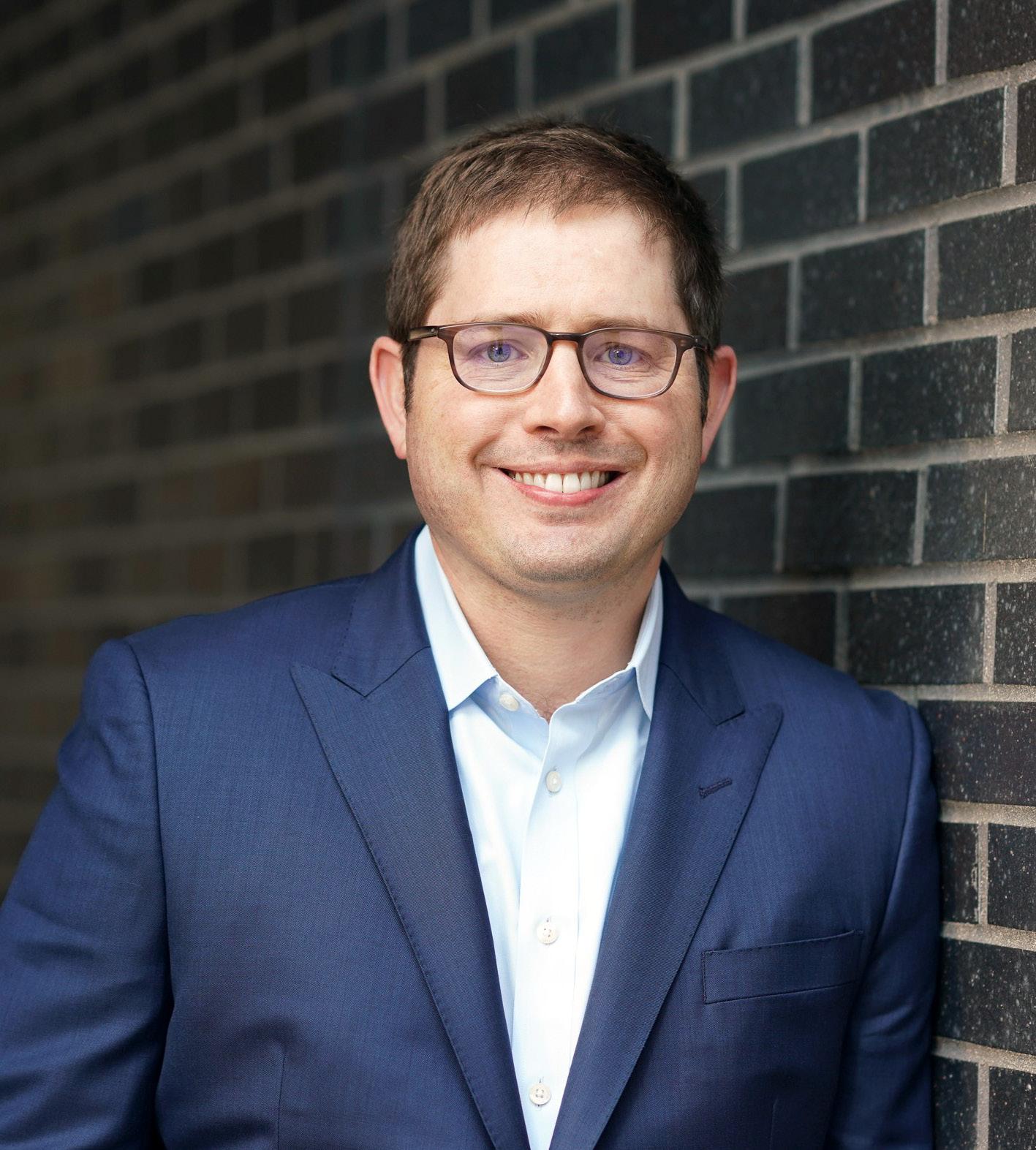 Andrew Treaster Assistant General Counsel, Commercial Litigation
Andrew Treaster Assistant General Counsel, Commercial Litigation
legal department as a whole is chock-full of really bright people,” the lawyer says.
DaVita also provides Treaster an opportunity to branch out and get to know a broader set of internal clients and team members. In private practice, he spent the bulk of his time working with the same small team. At DaVita, Treaster regularly works with new stakeholders throughout the company, consistently helping to solve problems for new parts of the business.
“There’s a variety at DaVita that has been interesting and refreshing,” Treaster explains. “On the legal side, there are so many lawyers trained to think about legal problems in different and unique ways. It’s collaborative and fast-paced. Everyone is just trying to figure out the best way to solve a problem, so that our business can function at its highest level.”
Treaster also has found a way to help outside his regular nine-to-five purview. With two educators as parents, the lawyer finds it hard not to give in to his DNA. He loves teaching new lawyers and hopes to lead a legal department in the future.
He’s also a board member and mentor for the AmeriCorps City Year members in
Denver. City Year Denver AmeriCorps members partner with teachers and schools to add more support and to help create learning environments where all students can build on their strengths and fully engage in their learning.
But right now, Treaster knows exactly what he wants.
“There’s another attorney here who’s been at DaVita probably twice as long as I have,” he explains. “I watched him standing in a hotel lobby a few weeks ago at a DaVita event, and he knew everyone’s name because he had helped them. That’s what I strive to be: a known and trusted partner for the entire business, who you can bring your toughest legal problem to.” AHL
We have the experience in the ever-changing health care regulatory legal landscape. To learn more, please scan below to contact Grahmn N. Morgan, Partner.
At Snell & Wilmer, we recognize one straightforward fact—our clients care about the degree to which we understand their business, their industry, and the trends and challenges that can affect their ability to minimize risk and maximize success. Snell & Wilmer provides creative yet practical client-specific solutions. Professional integrity and fast response to client needs guide our interactions.
ACCOMPLISH MORE
Dinsmore & Shohl Llp Cincinnati, OH / 255 E 5th St #1900 We are a national full-service law firm with offices coast to coast. Attorney Advertising. © 2022. All Rights Reserved.

“That’s what I strive to be: a known and trusted partner for the entire business, who you can bring your toughest legal problem to.”
A willingness to take risks and accept tough assignments provided Brittany Long with multiple opportunities at Eli Lilly & Company. Now, she’s helping Elanco chart its future as the animal health company’s executive director of HR operations.
By Zach Baliva
I f you’re comfortable, you’re not growing. A mentor gave that advice to Brittany Long early in her career. She’s since thought back to those words many times while navigating the complex world of pharmaceuticals and emerged as a respected HR leader and trusted business partner.
Elanco is a global leader in animal health dedicated to innovating and delivering products and services to prevent and treat diseases in farm animals and pets. As executive director of human resources operations and workforce services, Long additionally leads all HR systems and global payroll and manages an annual budget of $10 million. That puts nearly one hundred global employees under her charge, who together support about ten thousand employees in forty-six countries.
That’s enough to make anyone uncomfortable, but Long has grown accustomed to taking on big tasks and accomplishing new things. She attended Purdue University to study chemical engineering and later joined Eli Lilly & Company to help develop its innovative products.
But after she’d spent just two years in an engineering role, leaders gave her an unexpected assignment—they asked Long to lead campus recruitment so Lilly could hire hundreds of college graduates for its research and development and manufacturing teams.
At first, Long felt a bit daunted, but she soon realized she could leverage her chemical engineering training to
find success. “I was given an HR task as an engineer, so I decided to tackle it with an engineering mindset,” she says. Long saw a problem, developed a process for moving forward, and implemented her solution.
One assignment led to another, and before she knew it, Long became firmly entrenched in the world of human resources at Lilly. The career pivot may have been unexpected, but for Long, it was a welcome change. “My academic background gave me credibility with our scientists and engineers,” she
“There have been many challenges that have made me uncomfortable, but every one I’ve encountered has created a lot of opportunities for myself and others.”
explains. “I understood the business, and being in human resources gave me that ability to learn something new and intersect with the business in a new and changing way.”

Over her nineteen years with the organization, Long held a variety of roles in HR operations and employee relations, but always gravitated to assignments offering the opportunity to collaborate with other functions, like IT and finance.
The strategy helped her learn data, analytics, security, and other emerging disciplines. By 2014, Long was serving as an HR leader responsible for a global program supporting thirty thousand employees.
In 2017, Long comprised part of the HR team that helped Elanco, then a business unit of Lilly, acquire Novartis Animal Health. As she created a plan to onboard employees, she traveled the world visiting various Elanco facilities. In doing so, she fell in love with the smaller structure and entrepreneurial nature of the company.
Long started working more directly for Elanco, and in 2019 she began helping leaders evaluate their future. Ultimately, they decided to split from Lilly and become an independent company.
The newly formed Elanco needed Long to create all HR processes, structures, and systems from scratch. She also helped the organization make a key acquisition in a pandemic environment. Suddenly, Elanco was a sixty-five-yearold start-up. Long made employees her anchor and led the transition with a
commitment to communication, speed, and transparency. Today, Elanco is thriving as a publicly traded company and boasts over $4 billion in annual revenue.
As Long reflects on her career journey, she often recalls that advice she received back at the start. “There have been many challenges that have made me uncomfortable, but every one I’ve encountered has created a lot of opportunities for myself and others,” she says.
Now, the veteran leader focuses on taking Elanco into the next chapter of its history. The company has established a shared service center, and HR teams are working to find, hire, and support new and diverse talent from all parts of the world.

As a former engineer, Long created an operational excellence framework for the policies, programs, processes, and systems she manages. This helps her prioritize projects, find improvements, and maximize her impact. She will help the new and independent Elanco streamline its HR services, deliver on its commitments to employees, and continue to lead in the animal health space.
The last few years have taken Long and her team on a fast-paced adventure. And while they now have a strong foundation in place, she’s taking time to remind her coworkers that now is not the time to sit back and relax. There’s a lot they can accomplish together if they maintain a willingness to try new things—so they better get used to being uncomfortable. AHL

I f iron sharpens iron, then Sherill Kirksey’s iron will and work ethic were molded by her parents.
By Marcos ChisholmWhen she was growing up in Cambridge, Maryland, Kirksey’s mother and father held jobs at a book printing factory, where they took on extra shifts. They outperformed their colleagues, earning many promotions. But when it came to their daughter’s future, they encouraged her to forge a new path.
“I always remember my mother and father telling my brother and I that we were going to college,” Kirksey says, noting that her brother is a little older than her and would head to college first. “That we weren’t going to stay in this town, and we weren’t going to work in a factory.”

Make no mistake: Kirksey did follow in the footsteps of her parents. She pays homage to them by letting her actions speak louder than her words, just as they did. It’s also why she thrived on her journey to becoming a human resources and benefits leader.
How did Kirksey enter the world of benefits? Following her graduation from the University of Maryland at College Park, she started her career as an employment interviewer with the Maryland Department of Labor Licensing and Regulation. Because the government
Sherill Kirksey knows firsthand why benefits are important; she’s dedicated her career to becoming a leader who can ensure that employees have the best possible HR experience
agency hired her as a contractor, however, she did not enjoy the same perks as fulltime employees.
“I didn’t have any benefits,” Kirksey says. “I didn’t earn any leave. I didn’t have any health insurance, so I needed a job that would afford me those benefits.”
Paying for these expenses herself made Kirksey realize that benefits were more than just perks: Employees relied on them to survive. That’s when she joined the Catholic University of America as its benefits specialist, where she worked for seven years. She then built upon her expertise in advisor and supervisor roles at Children’s National Arlington County and the D.C. Department of Human Resources.
Two decades later, Kirksey geared up to take the next step in her career, pursuing benefits management opportunities. However, despite her experience in government departments and nonprofit organizations, she didn’t get so much as an interview.
Searching for other HR openings, she met with a VP at Howard University about an opening in retirement. What happened next seemed too good to be true.
“She said, ‘Why haven’t you ever been a director of benefits?’” Kirksey says.
“I said, ‘Well, people look at me. They think that I’m a lot younger than what I am, and no one is willing to give me the opportunity to showcase my skill set and the knowledge that I’ve acquired over my career—because I most definitely can be a benefits director.’”
Sure enough, Kirksey secured her first leadership role when Howard University named her its director of benefits. She managed the overall design, implementation, communication, and administration of health and welfare programs for the iconic historically Black university. In addition, she streamlined the benefits it offers to employees. By ensuring that eligibility rules for benefits plans supported previous packages and implementing a conversion process for life insurance plans, Kirksey led Howard through a series of changes.
Since her team relied on outdated tools, Kirksey knew they were not operating at their best. While performing simple HR tasks—such as dependent verifications—they experienced complications. So when Howard decided to implement Workday she led Howard’s benefits worklet implementation of Workday in just eighteen months,
“I didn’t have any benefits. I didn’t earn any leave. I didn’t have any health insurance, so I needed a job that would afford me those benefits.”
modernizing the university’s benefits digital infrastructure.

“Just ensuring that the best practices, the benefits plans, the actual language that’s in the system that links the data—we built all of it. I’m very proud of the work that we did with that actual module,” Kirksey says.

Beyond her successful Workday implementation, Kirksey also rolled out wellness initiatives for Howard’s faculty and staff. In collaboration with Cigna, she analyzed data from their health plans to build a wellness program. Not long after it was introduced, participation in other Howard lifestyle management programs skyrocketed by 47 percent.
Everything was running as planned for Kirksey. But once COVID-19 hit, the program she’d produced lost traction with its participants. Nevertheless, Kirksey and her team kept their calm and pivoted.
“We had to go back and restructure and rebrand the wellness program again,” Kirksey says. “We identified new Wellness Champions, incentives for them to help us boost awareness and participation, new vendors for specific outreach, and challenges based on our new data.”
Thanks to her rebranding efforts, the program is back.
“The last event that we put on—a virtual event—we had well over a hundred people attend the Building Resilience seminar through the new wellness program that we had put in place,” Kirksey says.
Kirksey recently moved on once again, and welcomes a new challenge ahead as the director of benefits and wellness at the New-York-based company National Debt Relief. “Eventually, I would like to become an executive,” Kirksey says. “It’s my ultimate goal. I just pray that the right path opens for me, and I am introduced to the right people to help that dream to come true for me in my next phase of my career.” AHL
MetLife is proud to partner with Howard University on its investment in designing progressive health and welfare programs for their faculty and sta .
We congratulate Sherill Sampson Kirksey for this well-deserved recognition and for her dedication to employee bene t solutions.
Given all the current concerns about the global supply chain, it’s easy to forget that similar chains exist, albeit on a much smaller scale.
Dealing with those channels is a daily challenge for Neil Stein, senior vice president of technology services, the PMO (project management office), and supply chain for OrthoCarolina, a physician-owned and physician-led independent academic orthopedic practice that provides operative and nonoperative care, diagnostic imaging, and rehabilitative therapy.
Decades ago, Stein was, as he puts it, a “bench-level scientist.” After earning
a BA in chemistry from the Ramapo College of New Jersey, he found a job at Warner-Lambert working on the thennew cholesterol medication Lipitor.
“The drug was on a fast-track for approval,” Stein recalls, “and I wanted to help speed the data analysis process with automation and computer tool sets.” He developed his own programs, entered the data, and let the system work around the clock.
Partly due to his efforts, the drug reached the market about six months earlier than anticipated; it generated a whopping $4.5 billion in sales during its first year of availability.
Stein soon transferred into full-time computer work at Warner-Lambert and joined Merck & Co. in 1999. During his tenure there, he assisted in the company’s global rollout of the open-source platform Apache Tomcat across more than three thousand servers. Stein followed his Merck tenure with several IT positions at Amerisource Bergen before joining OrthoCarolina in 2013.
Today, Stein’s chief concern centers on moving products from domestic warehouses into the hands of the 150 physicians and staff employed at OrthoCarolina. “I work with the director and the chain team to negotiate
partnership deals with various suppliers to ensure that our clinics and centers get the products and technology they need to do their jobs,” he says. “At the same time, I must be concerned with securing competitive pricing.”
OrthoCarolina doesn’t have the scale to leverage massive purchasing power, so it capitalizes on the next-best thing— membership in a group purchasing organization. Even then, there’s a certain ebb and flow. “It’s the difference between staying locked into a particular vendor and being flexible enough to attain better care and better costs,” the SVP explains.
On the technology side, Stein strives to keep things running smoothly. But he isn’t a fan of rushing to invest in latest-iteration hardware or software. “Having the latest and greatest isn’t always necessary,” he says. “It’s important that our investments make sense in the long run.
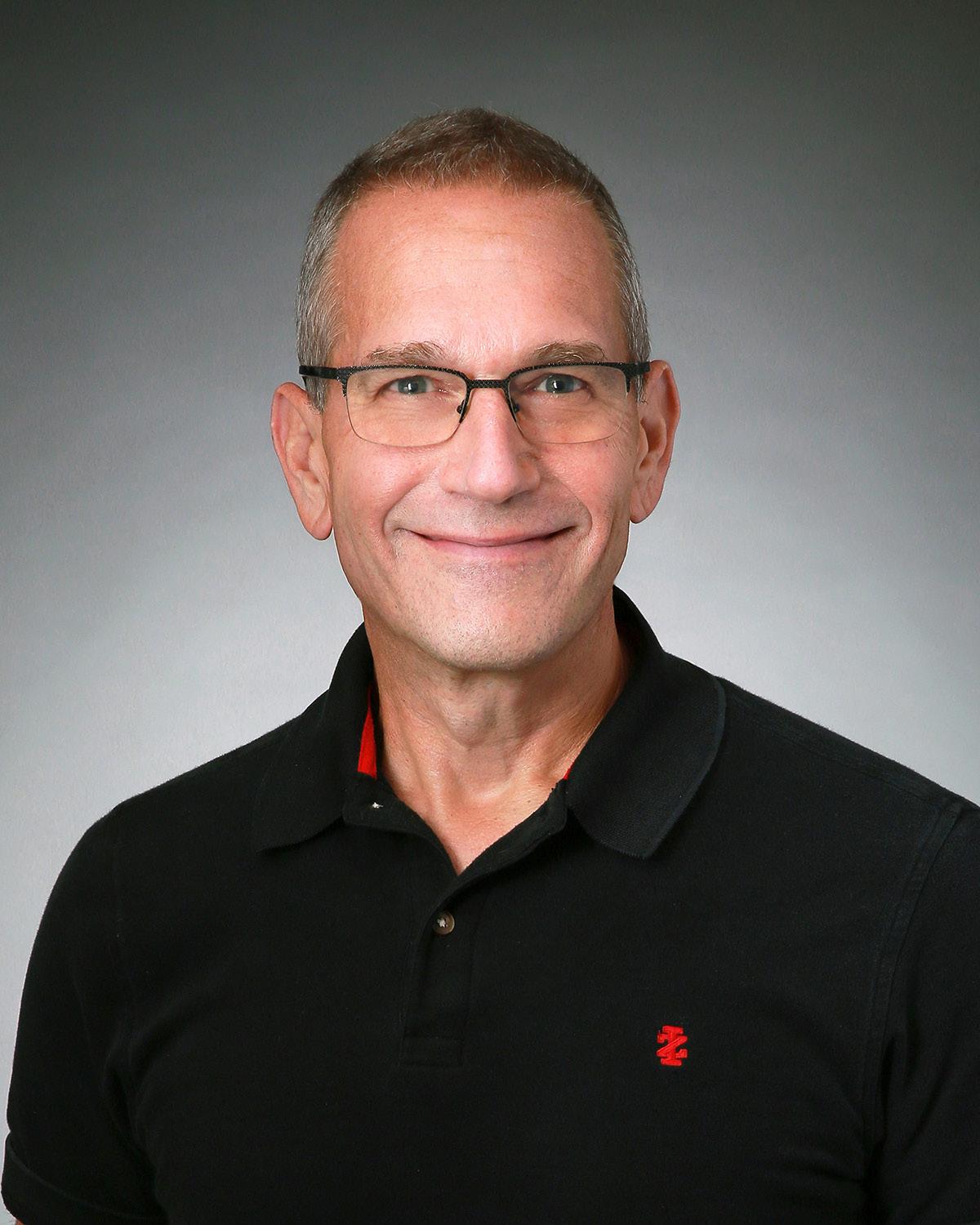
“Our goal is to take strategic market risks for the future, in areas such as cybersecurity and organizational controls, to ensure that the organization is optimized,” he adds. “For example, there’s been a bug push to move to the cloud, but we have to evaluate that in terms of our business model.”
Stein’s focus on flexibility extends to technology investments as well. “Right now, OrthoCarolina uses Office 365, which offers built-in cloud storage. We’re already paying the subscription fees, so it makes economic sense to use their cloud. But we’re also open to looking at smaller-sized partners,” Stein says.
He’s also a proponent of artificial intelligence and machine learning— but only as supplementary assets. “I’m in favor of automation for rote work,” he explains, “not to replace people but to make them more efficient.” He points out that assigning drudge work
Neil Stein SVP of Technology Services, Project Management Office & Supply Chain OrthoCarolinaAs a leader in DaaS, app delivery and security, and work solutions, we can help you:
Gain flexibility and control with easier management, no matter how complex your hybrid, multi-cloud infrastructure
Improve security and experience with the reliable experience employees want and the secure access they need
Enable individual and teamwork styles with streamlined workflows, collaboration tools, and the freedom to work how you want from anywhere
www.citrix.com/solutions/healthcare/
to machinery enables his team members to create added value by applying human insights and creativity where needed.
Stein’s efforts are driven not by a far-off board of directors but by the same people he sees every day: 112 of the 150 staff physicians at OrthoCarolina are also investors in the company. “In my view, the best tech is never noticed; it just does what it’s supposed to do,” he said. “It’s important that their days run smoothly, with no interruptions.”
His concerns include data security as well. “OrthoCarolina has about fifty clinics, and our physicians often travel among them. Because they carry HIPAA-regulated patient data and often e-prescribe narcotics, cybersecurity is essential to their jobs,” he says.
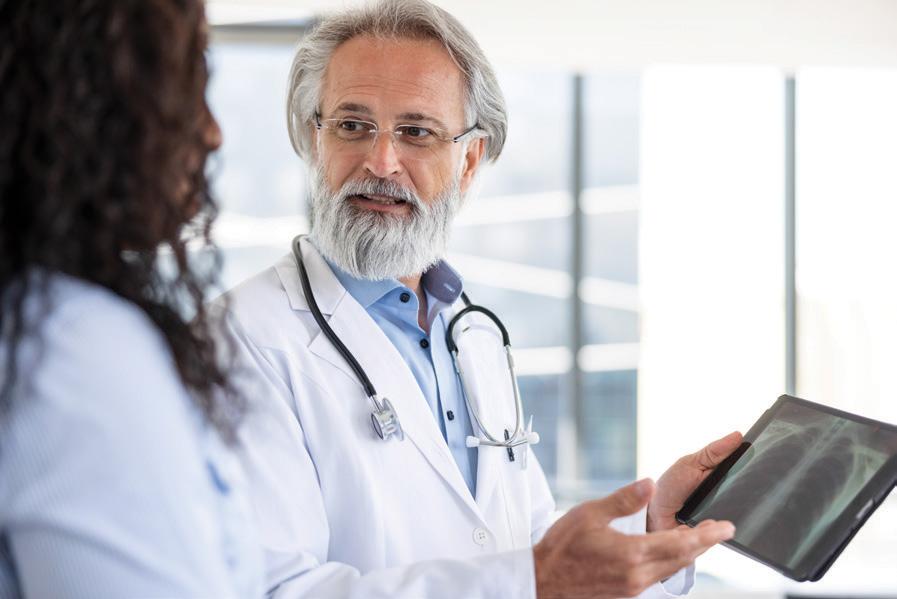
Regulatory compliance can be challenging, but Stein’s an old hand at folding it into the process. “When I was at Warner-Lambert, the company was
under a consent decree, and we had to document absolutely everything—we used to say that if it wasn’t documented, it never happened,” he says. “Now, I educate everyone on my team about the necessity of routinely maintaining accurate records. By integrating, downstream activities are often streamlined.”
Stein’s leadership style involves plenty of give-and-take, but there’s no doubt as to who is in charge.
“I’m certainly no micromanager,” he says. “I give my team the right tools and advise them of guardrails so they can make the proper decisions. I want to build an army of people that will continue to grow even after I leave the company.”
At the same time, though, the buck stops with Stein. “You can’t be wishywashy in the business,” he notes. “If my team can’t reach a decision, they know that I will. They also know the burdens of that decision rest with me, not them.” AHL
Citrix builds the secure digital workspace technology that enables hybrid work – no matter how complex or distributed your environment.
“Our goal is to take strategic market risks for the future, in areas such as cybersecurity and organizational controls, to ensure that the organization is optimized.”
National, and even global, forces have an unmistakable impact on an executive’s work. Whether it’s a legislative change or an industry-disrupting technological breakthrough, executives must constantly adapt their business strategies to keep their company thriving.
94. Michael Ricci Massachusetts Eye and Ear
98. Logan Zinser Element Biosciences
102. Cate Collings American College of Lifestyle Medicine
106. Marc Fishman Novo Nordisk Inc.
110. Lynn Gordon Alo Solutions
Michael Ricci spent the past three decades developing innovative tech solutions to healthcare problems. Leveraging these integrated technologies will provide major breakthroughs in qualitative care.
By Zach Baliva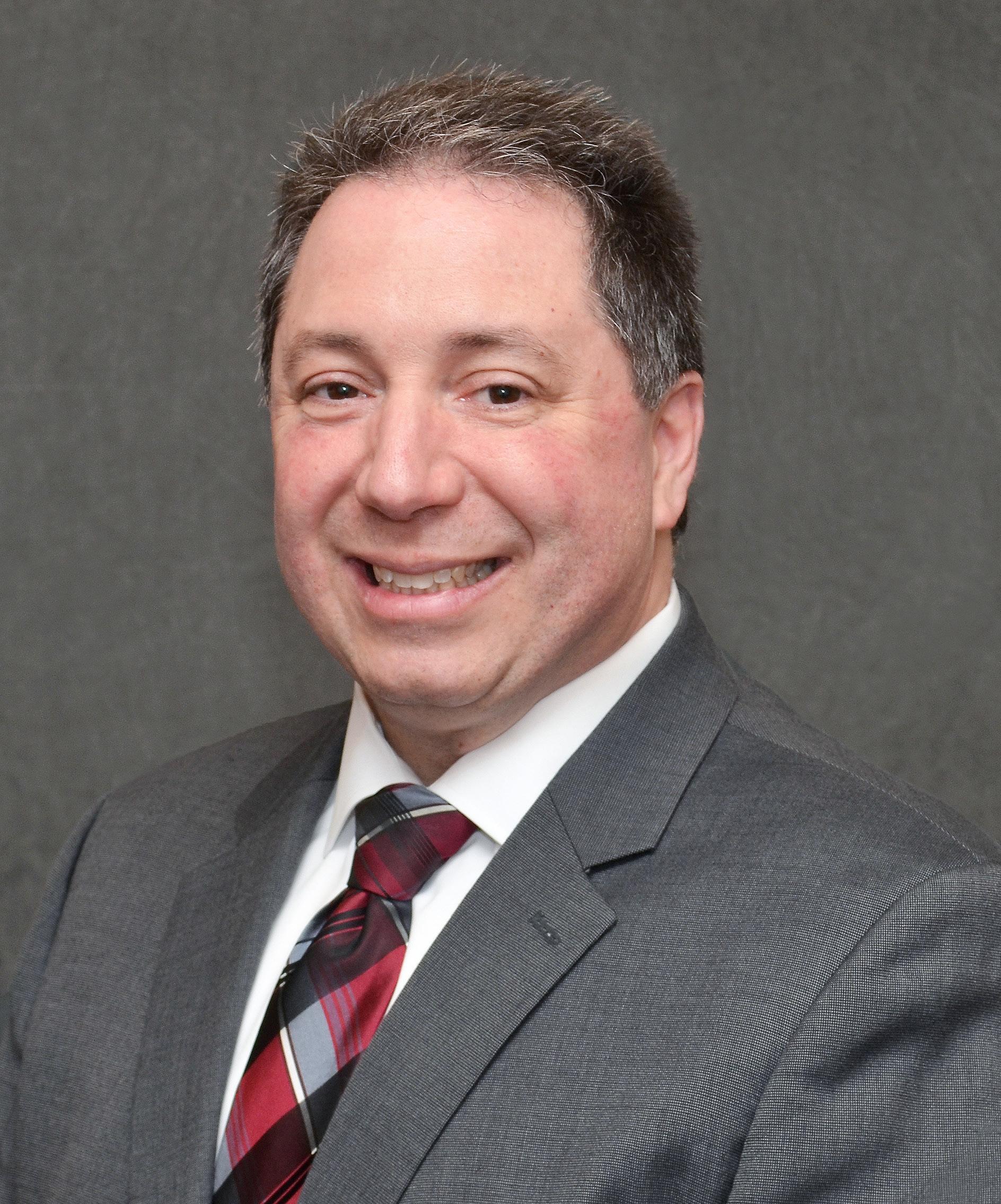 Michael Ricci
CIO and VP of Information Services
Massachusetts Eye and Ear
Michael Ricci
CIO and VP of Information Services
Massachusetts Eye and Ear
In February 2022, leaders at Massachusetts General Brigham (MGB) wanted to make available and track the distribution of COVID-19 antigen rapid self-test kits to over ninety thousand people across the healthcare system. MGB needed a solution that was fast, trackable, and inclusive, knowing that not all recipients had access to technology. And with the ongoing pandemic, they had to prevent any issues with cross-contamination when individuals picked up their kits.
Michael Ricci and his team of developers were asked to find a solution. They quickly built a new system that automatically distributed smart QR codes to all employees. Those employees were then able to use devices at distribution centers across the system’s numerous locations to scan their unique codes into a web portal and receive their kits while managers monitored progress via real-time dashboards. The touchless system went live in a week (from concept through design, build, and testing) and helped MGB successfully deliver more than forty-five thousand kits to participating recipients.
Ricci serves as chief information officer (CIO) and vice president (VP) of information services at Massachusetts Eye and Ear. The Boston-based specialty hospital houses the world’s largest research center for ophthalmology, otolaryngology, and head and neck services. Since joining the organization full-time in 2012, Ricci has been focused on doing all he can to deliver cutting-edge IT solutions to increase efficiencies and improve patient outcomes. MBG acquired Massachusetts Eye and Ear in 2018, giving Ricci the opportunity to bring impact to a world-renowned health system.
A veteran leader with over thirty years of experience, Ricci is demonstrating the true power of technology in the healthcare space, and each victory brings another assignment. “Leaders see what can happen when we think differently and push the limits, and then they start bringing new business problems for my team to solve,” the CIO and VP says.
The antigen test kit program led to a pilot project for eyewash stations. Ricci is building another portal to replace an outdated pencil-and-paper process with a digital dashboard. Clinicians will use their handheld digital device to scan one of two QR codes at each eyewash station, which will indicate pass or fail information. Upon failure, the portal will automatically generate maintenance requests as needed, and store the history to the cloud for compliance reporting.
No one who’s met Ricci is surprised that he’s finding creative ways to harness the power of technology—he’s been doing so since an early age. Ricci began working in a hospital’s IT department at age fifteen. The next year, he and a partner started his first corporation, Micro Systems Unlimited, Inc. The entrepreneur then launched and operated SaberTech Systems Inc., a consulting company providing full IT services to a variety of industries. The company specialized in desktops, servers, building networks, and creating electronic database systems to solve unique customer business problems. Before long, Partners Health Care, the state’s largest employer, became a key client, and SaberTech was the only company authorized to deploy their electronic medical records (EMR) system across their ambulatory practices.
“Leaders see what can happen when we think differently and push the limits, and then they start bringing new business problems for my team to solve.”
Just before Ricci stepped into his role with Massachusetts Eye and Ear, the hospital had suffered a data security breach and was placed under a corrective action plan. He came in to right the ship, take over IT, lead health information management, and manage all aspects of a three-year audit with Price Waterhouse Coopers.
During the process, Ricci analyzed operations, formulated a plan, developed solutions, and put processes in place to address a variety of needs. When the audit finished with no additional findings, he was free to further enhance his tech program.
He improved the support center customer service model by replacing call operators with a rotation system that splits each technician’s time between answering phones and working in the field. “Closer relationships between support people and end users helps everyone on my team better understand workflows and how to really solve problems,” Ricci says. In addition, users have their issues resolved faster. First-call resolutions went from 20 to 70 percent as employees started to receive immediate solutions from colleagues they knew. Additionally, Ricci created a new enterprise data architecture team to prioritize software development and business intelligence.
These solutions, combined, help protect patients and improve care. Ricci and the tech pros at Massachusetts Eye and Ear created their own internal tool called Enlighten MD, a browser-based solution that “bolts on” to an EMR system to manage videos and provide other additional features. The program whose IT was developed alongside nurses and physicians is now available to other health systems. “We’re using our
internal innovation to drive revenue and improve patient care,” Ricci says.
The innovations don’t stop. Today, the team is also working with pediatricians and engineers to create an accessory that can turn a smartphone into an otoscope to take a picture of a child’s ear drum. The device then performs a machine-learning analysis to detect ear infections in less than a second. Human doctors using standard otoscopes are around 50 to 60 percent accurate in their diagnosis; this system is over 92 percent accurate.
There are gains to be made on the operations side as well. When it comes to scheduling operation rooms (ORs)— the most expensive real estate in any hospital—machine learning models can predict how long a surgeon will need for a case based on many factors, including the patient, which staff members are involved, the day of the week, and the time of day. The process saves money, reduces physician burnout, and improves the patient experience. This internally developed solution is currently being optimized at Massachusetts Eye and Ear today.
One of Ricci’s biggest challenges lies in prioritizing his work, as there is a seemingly endless number of problems he could attack. What has him most excited? “The expansion of AI and machine learning, and what data can do in research and across the continuum of care,” he answers. His organization has among the world’s largest ophthalmic image archives. By applying predictive analytics, care providers will soon be able to anticipate whether patients will develop disease. That means they’ll provide better care for the patient before a problem even emerges. “That’s the power of technology,” Ricci says. “What an exciting time to be alive!” AHL
• Reduce item search time
• Gain full visibility into operations and processes
• Boost asset utilization –Do more with less
• Improve the safety and security of hospital sta and patients with real-time sta duress solutions

1. One tech fits all - one technology for all use cases. From room level separation and up to 1-ft accuracy
2. Ease of deploymentsparse infrastructure
3. Best performance at a fraction of the cost
4. Positioning as a service. Minimal capital investment
empowers hospitals and medical centers to optimize operations and increase sta safety through accurate tracking
Logan Zinser works to transform life sciences
startup Element Biosciences into an industry leader by leaning into data management
By Marcos ChisholmF
inancial officers are often thought of as left-brained human calculators who always keep their cool. They’re expected to just crunch numbers and invest time and money into what makes sense on a spreadsheet. But Logan Zinser isn’t afraid to show that he’s a human being.
“I’ve always struggled with imposter syndrome throughout my career,” he admits. “And, from what I understand, that’s not unique.”
Zinser is so humble that you would never peg him as a top executive for a biotech company valued at over $1.5 billion. However, he’s senior vice president (SVP) of finance and administration at Element Biosciences, a San Diego-based startup that develops DNA sequencing. “I’m the finance knucklehead, so a lot of what we’re doing isn’t rocket science,” he says.
Despite downplaying his role, Zinser is a master of his craft and wears a lot of hats. Not only does he oversee all finance and accounting matters, but he also performs a wide variety of functions that rarely show up in the job description of a CFO. Whether he’s managing relationships with vendors or running IT and facilities operations, he welcomes the twists and turns of transforming a life sciences startup into an industry leader.
When Zinser arrived at Element Biosciences in 2020, he made it his first order of business to develop a data stack that supported the company as it grew. “It’s a bit of a hill that I’m willing to die on,” the SVP says of his steadfast commitment to ensuring a strong information infrastructure.
Why did Zinser bet big on a bold data strategy? After struggling to collaborate with siloed teams on disconnected
platforms at previous career stops, he learned that forming a structured data management plan would make it easier for his coworkers to collaborate—especially if the tools he invested in could integrate with solutions that Element Biosciences already had. So instead of auditing the books or sharing a new budget with leadership right away, he went for it. And it worked.
The new data stack also paved the way for Element Biosciences to ramp up its global production efforts: the startup is choosing locations in Europe to open manufacturing sites. For Zinser, this means evaluating which countries present tax-driven obstacles for conducting business there. It calls for him to keep gauging the needs of each department.
“We have tapped into various resources, including some of the big four accounting firms, to help us navigate through some of those things,” Zinser says. “We’re kind of in the early throes of it right now and trying to figure out what is our transfer pricing approach.”
Beyond changing how Element Biosciences handles its bookkeeping,
“I’m the finance knucklehead, so a lot of what we’re doing isn’t rocket science.”
Element Biosciences
 Logan Zinser
SVP of Finance and Administration
Logan Zinser
SVP of Finance and Administration
Zinser plans to help fulfill its long-term vision of going public. The company will only be ready to pursue an IPO, he says, when it meets one condition that never appears in a spreadsheet.
“I want to make sure that when we make the decision to go public—and it’s usually a six-month exercise to do that— the culture of the company is such that it accommodates being a public company and the business can reasonably predict the future,” he explains.
It’s generally the job of the CEO and HR to build a foundation that ensures employees stick around and that operations last. However, Zinser is equally invested—and it shows in his approach to hiring.
“This might expose my lack of experience in some cases,but I want to hire really good, really decent human beings and really smart human beings,” Zinser says. “My belief is if the employee fundamentally can check those two boxes, they’re going to be wildly successful under me and at the business.”
There are, however, certain types of talent he avoids. “What I’m not looking
for—and there are obviously a few exceptions to this—are deep, deep technical experts in whatever their trained field is,” he explains. As a leader in his department, Zinser prefers to contract third-party specialists so his staff can focus on the big picture. By hiring dynamic talent, he empowers his teams to solve more problems and shape long-term strategies.
No matter how much Zinser accomplishes, though, that imposter syndrome never completely goes away.
“We have all-hands [meetings] every single month, and I’m out there presenting about something. I still get butterflies,” Zinser admits. “I still wonder to myself, ‘Do I really need to be up here?’ And the answer is an unequivocal yes.” AHL
Marsh McLennan Agency (MMA) is proud to partner with Element Biosciences. We provide tailored business insurance, employee health and benefits, retirement, and private client services to businesses and individuals seeking limitless opportunities. MarshMMA.com.“I want to hire really good, really decent human beings and really smart human beings. My belief is if the employee fundamentally can check those two boxes, they’re going to be wildly successful under me and at the business.”
Cate Collings, president of the American College of Lifestyle Medicine, is seeking a better way for patients and caregivers
By Keith LoriaCate Collings
President
American College of Lifestyle Medicine
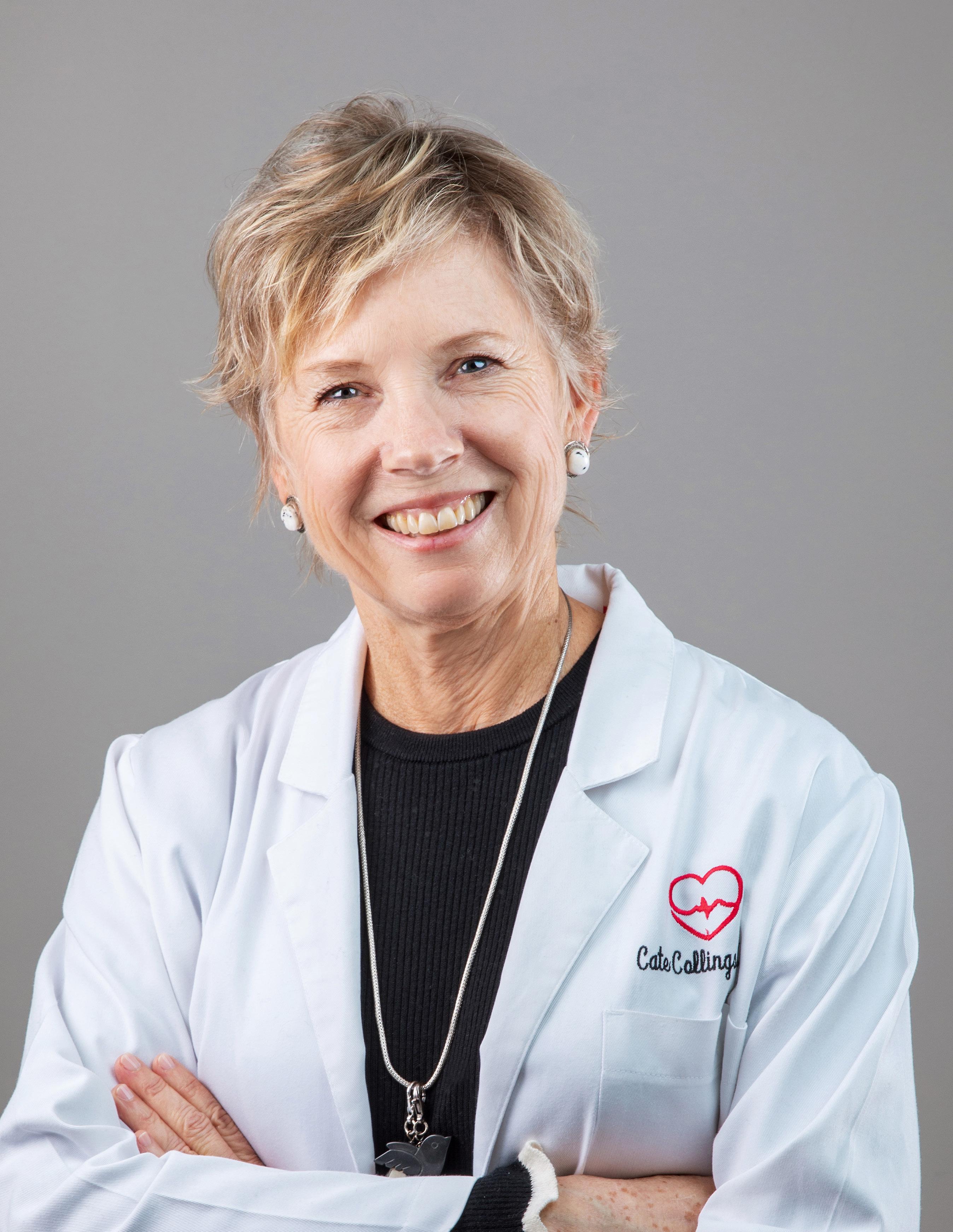
Early in her career, Cate Collings studied and worked in exercise physiology in a lab, testing Olympic athletes one day and cardiac patients the next. Between the two, the remarkable recovery of cardiac patients through exercise fascinated her the most. At age twenty-eight, she began medical school and eventually specialized in cardiology.
“My day-to-day practice was, of course, prescribing and titrating medications, seeing patients in the hospital, ordering tests, and so forth,” Collings recalls. “I realized at the time that even though I walked the walk and talked the talk and my patients knew me to be an advocate for lifestyle, there was very little I could get across in a clinical encounter in the office. Just providing patients with lifestyle counseling or education was insufficient. There needed to be healthcare system change to provide patients with the resources to be successful, because otherwise they often fail after resorting to fad nonevidence-based programs outside the walls of their healthcare.”
While attending her first American College of Lifestyle Medicine (ACLM) conference, she met health professionals seeking the kind of solutions she was never exposed to in her medical school training or in her primary field of cardiology. “I really felt very optimistic that the people who convened in this membership organization were providing care the right way, and for the right reasons,” she reveals.
Collings’ journey led her to the position of president of ACLM, a medical professional society of some nine thousand healthcare professionals committed to lifestyle medicine as the foundation of a transformed and sustainable healthcare system. And she brings her knowledge and experience to every aspect of her role.
“When I first began engaging in the field in 2015, lifestyle medicine was still an alternative way to
“We have to look at multiple paths and to numerous partners to move lifestyle from the margins into the mainstream. It’s life or death for both patients and our healthcare resources.”
manage a patient, but over time, I saw this as misguided,” she says. “Lifestyle medicine needed to be the first and primary way to treat most conditions, with medications and procedures as adjunctive treatment. In other words, lifestyle medicine should be the center of medicine, as opposed to being on the margins of medicine.”
Addressing lifestyle is the first item in most chronic care clinical guidelines. And patient and provider satisfaction often result from a lifestyle medicine approach, which aligns the Quintuple Aim of better health outcomes, lower cost, improved patient satisfaction, improved provider satisfaction and advancement of health equity.
“To get lifestyle medicine into the center of medicine, we need to understand the US healthcare system thoroughly. It’s fractionated into many stakeholders, all interested in their economic slice of the healthcare sector,” she says. “Each stakeholder may be thinking their solution is what will fix a lifestyle-borne medical condition with a pharmaceutical or procedural solution, but bypassing the lifestyle root cause needlessly perpetuates the condition at a substantial cost to the patient and payor alike.”
Collings worked alongside ACLM to establish partnerships on the national level, with such key organizations as the American College of Sports Medicine, the Partnership to Fight Chronic Disease, and Population Health Alliance. ACLM also engaged with seventy healthcare systems to join a Health Systems Council, navigating barriers to integration of substantive lifestyle medicine certified providers and services within systems. “We have to look at multiple paths and to numerous partners to move lifestyle from the margins into the mainstream,” she says. “It’s life or death for both patients and our healthcare resources.”
Collings also applies her knowledge of lifestyle medicine through her role as chief medical officer of HealthFleet, a digital health technology company using coaching as a behavioral change tool, educating people on lifestyle medicine. An important element of her work comprises taking on the challenge of spreading evidence-based information to individuals in a huge population.
“We can’t do this one by one,” she observes. “We can do it in a clinical setting in groups of ten to twelve, but there’s a great need for more than that. So, in the role I have with HealthFleet, I oversee content, bringing the most credible, evidence-based and updated lifestyle medicine content to their platform, which is integrated with expert coaching and behavior change techniques. Then, we provide this solution to employers to meet any number of their goals.”
She continues, “One goal may be helping employees with high-risk health conditions, stress and emotional health, or another goal may be reducing healthcare claim costs. A healthier employee has fewer sick days, out-ofpocket costs, and costs incurred by their employer.”
For example, for an individual with type 2 diabates, the first course of treatment, in the absence of critical blood levels, shouldn’t be a medication, but an intensive lifestyle program that’s supported by insurance carriers and employers. If the type 2 diabetes condition can be eliminated all together, there is an upside to both the patient and the payor.
Collings remains optimistic about the future of lifestyle medicine. “As the pandemic has waxed and waned, attention has been given to the excess risks of lifestyle-related chronic conditions,” she observes. “We are seeing recognition in health systems. We are seeing it at the national policy level. Patients need this. The nation needs this. The time for lifestyle medicine is now.” AHL
“W hen the president of the company asks you to step up and lead, you don’t say no.”
Marc Fishman had been with Novo Nordisk Inc., the US subsidiary of the Danish pharmaceutical leader, for six years when the unexpected request came his way. The expert litigator and in-house attorney was asked by his company’s president to step in for the departing general counsel. It was February 2020, and Fishman was prepared and excited to serve in the role of interim general counsel. Little did he know what would happen within a month’s time.
When American Healthcare Leader last caught up with Fishman in 2018, he was helping the US affiliate of the Danish healthcare company navigate a complex maze of litigation and investigation matters. Fishman had made the transition to Novo Nordisk in 2014 after nearly a decade of managing litigation for pharmaceutical giant Roche, which itself followed the untimely passing of both of his parents in 2000 and 2005, respectively.
At Novo, Fishman had seen a series of different general counsel and a period of change within the legal department: he accepted the interim role with an
awareness that he needed to address concerns and inject a measure of stability. “I wanted to stay close to my colleagues, work as a strong advocate for them, and try to ease the fear of the unknown,” he explains. Fishman spent four weeks learning about people in the department more deeply and helping the executive team manage through existing organizational change. Then, in March 2020, the COVID-19 pandemic hit.
Suddenly, Fishman found himself taking on a very different type of leadership role. While balancing the responsibility of leading both the
legal department and the litigation team, he took on responsibility for the establishment and oversight of the company’s Covid Response Team (CRT), a cross-functional team composed of leaders from various functions across the organization.
As it became apparent that the novel coronavirus would remain an ongoing medical concern, Fishman acknowledged the importance of shifting responsibility for the CRT to the most senior medical expert at the company, with whom Fishman and others partnered closely. The team’s remit was simple, yet extraordinarily complex—oversee the company’s response to a global pandemic. This involved navigating issues of first impression, including such things as contact tracing, masking requirements, stay-at-home orders, vaccine mandates, and OSHA regulations.

Collectively, the team made recommendations about the health, safety, and employment issues surrounding the pandemic. They moved quickly to put patients’ needs and employee safety first. They tracked the virus, monitored employees, assessed product supply, and kept the business moving forward while limiting exposure and minimizing risk. Importantly, Fishman and his counterparts worked to ensure that the patients and physicians relying on Novo for medicines to treat diabetes and rare diseases had uninterrupted access to critical, life-saving therapies. Concurrently, he managed an organizational restructure, oversaw a robust litigation portfolio, and attempted to bring stability to the legal department.
As the global pandemic persisted, Fishman quickly realized that an effective crisis leadership strategy required
Marc Fishman VP and Chief Litigation & Employment Counsel Novo Nordisk Inc.an emphasis on empathy. “When people are struggling, they want leaders who are human, understand what they are going through, and are willing to ease their struggle,” he says. “So that’s what I tried to do.”
strong culture, a collaborative spirit, and a diverse and inclusive environment.
Although he has been in-house for more than sixteen years, Fishman remains passionate about litigation and the skills he sharpened as a firm attorney at McCarter & English. Recently, he helped Novo win a landmark victory that ended a ten-year mass tort litigation relating to the company’s diabetes medication, Victoza.
Litigation is just one of Fishman’s many professional passions. He also cares about helping junior lawyers and other employees grow in their roles. “I want to empower people to work autonomously and understand that their contributions matter, and I want them to see a clear path forward to where they want to go,” he says.
Fishman is proud of what he saw from leaders and individual contributors alike. While employees often volunteered to perform tasks outside of their traditional job duties, members of the crisis response team worked nights and weekends to guide the company. The whole experience gave Fishman a deeper appreciation for the importance of people. “We have important, lifesaving work to do, but it only gets done if the people doing it are being supported and taking care of themselves,” he says.
By August 2020, Novo Nordisk had hired a new full-time general counsel and Fishman went back to his job as vice president and chief litigation and employment counsel. Now in a critical supporting role, he helps ensure Novo maintains a
That’s important as Novo Nordisk charts its own path. The company recently launched next-generation products to treat both diabetes and obesity and has a clear vision for the future. Fishman is excited about that future and is prepared to support the company as it emerges from the pandemic. AHL
DLA Piper has worked with Marc over many years. His deep understanding of litigation issues permits him to partner with his outside counsel in balancing the needs of the litigation with the requirements of the business. In this regard, Marc has proven to have a steady hand.
Arnold & Porter congratulates Marc Fishman on his accomplishments as a leader in the life sciences field. We are proud to partner with clients like Marc in delivering sophisticated regulatory, transactional, IP, and litigation legal strategies that innovators need to bring advanced products to patients.
“I wanted to stay close to my colleagues, work as a strong advocate for them, and try to ease the fear of the unknown.”



Lawyer, compliance officer, and lifelong learner Lynn Gordon welcomes a challenge as head of legal and compliance at Alo Solutions
By Marcos Chisholmynn Gordon may not lay down the law. But with more than two decades of legal and compliance experience under her belt, she is adept in helping healthcare organizations understand and follow it.
“I was ready for the complexity and hyperregulation of the industry that often skews and detracts from the core mission and focus of healthcare providers,” the veteran attorney says.
After the former chief legal officer of New Hanover Regional Medical Center and Health System helped negotiate its nearly $2 billion sale to Novant Health, Gordon knew it was time to seek new opportunities. “I essentially worked my way out of a job that I loved because transitioning away from a county-owned healthcare system model—restricted in both geographic growth and innovative change—was what the community and my organization needed to be able to truly serve southeastern North Carolina,” she explains.
When Alo Solutions reached out about its head of legal and compliance position, she welcomed the opportunity to join its leadership. “We’re all seasoned executives from different environments, but together we’re a think tank,” Gordon says.
Moving from a larger health system, Gordon left behind some of the red tape. Larger systems are layered and entail levels of bureaucracy; however, her nimble team at Alo is able to “think outside of the box” simply because that is one of its primary charges.
Its timing could not be better for North Carolina and the southeastern US, where a value-based care (VBC) delivery model is still evolving. Under VBC, physicians and other providers will be compensated for and better able to focus on keeping communities healthy. “Our healthcare spend is enormous, but our results do not align,” she says. “This is a time for
innovation, input and close attention from the front lines.”
Gordon evaluates the consequences of laws and regulations, builds relationships with both regulators and community leaders, and helps explore alternative models as legal and compliance requirements change. “We are going to be trial and error, with some initiatives,” she says. But this is how innovation occurs.
Alo’s first endeavor—acquiring and bolstering Avance Care and its unique model of supporting physicians across twenty-five clinics—is focused on expanding practice options as healthcare delivery continues to transition to VBC delivery. Alo is also investing in capabilities and new services.
“Keeping up with professional and leadership development in the ever-evolving healthcare industry is a challenge for physicians whose primary desire and focus is to care for patients,” says Debbie Ritchie, managing director at Huron. “We collaborate with Alo Solutions to provide independent clinicians with evidence-based leadership practices that will help them build their skills and guide their teams into the future. When training is more effective and efficient, it creates a better environment and experience for providers and ultimately patients.”
Independent physicians face an uphill battle. According to the American Medical Association, fewer than half of patient care physicians work for independent practices.
The kicker? Hospitals and health systems are buying them out. Whether they hire independent physicians away from or purchase their practices outright, the landscape for medical practitioners is uneven.
While ideal for some, not every physician wants to work for a hospital or health
 Lynn Gordon Head of Legal and Compliance Alo Solutions
Lynn Gordon Head of Legal and Compliance Alo Solutions
system. But different practice models can coexist. When Avance Care was founded in 2008, it provided management tools to independent physicians who ran their practices, and it grew into a thriving hybrid model of independent practices.
“Avance’s practice model doesn’t have that health system nexus or affiliation,” Gordon says. “We’re agnostic in that our physicians can then really focus on what’s best for the patient.”
Gordon champions the patient-provider relationship as if she were a part of it. She collaborates with doctors to gauge health trends in local communities and support VBC delivery. “Part of what we are looking at are social determinants of health [SDOH]: how do we assess needs, manage outcomes, and bolster equity so that wellness becomes more the norm across diverse communities?” she elaborates.
As defined by the American Medical Association, SDOH are “the underlying community-wide social, economic, and physical conditions in which people
are born, grow, live, work and age . . . not experienced equally by people and are often inextricably linked to each other.” This is especially important due to the growing number of Medicare and Medicaid beneficiaries who often present with needs that, while not directly medical, have a significant impact on health and wellbeing.
Gordon references the NC Healthy Opportunities Pilot, as an example of pulling SDOH into establishing individualized care plans. Recently, her organization began more focused nutrition screening for its Medicare chronic care management patients and identified notable food scarcity, which will inform continued program development within Avance Care.
Before Gordon entered the corporate world, she spent twenty years as a healthcare attorney representing a wide range of providers. In 2012, she advised the Cook County Health and Hospitals System (CCHHS) in Chicago when it developed CountyCare, a no-cost
“Avance’s practice model doesn’t have that health system nexus or affiliation. We’re agnostic in that our physicians can then really focus on what’s best for the patient.”
Join us as we rise. Be here as we realize our vision. Cone Health leaders, nurses, physicians and team members have set their sights on creating a tradition where health and well-being are woven into the fabric of our communities. Our growing national reputation and expanding network are key to that aspiration. Personal and professional fulfillment—without one taking a backseat to the other—is not what we say about our culture, it is the culture. For career-defining opportunities, visit conehealth.com/careers
Medicaid health plan that currently serves over 380,000 members. She, then, represented CCHHS in restructuring the waiver network into the requisite managed care community network in 2014. Cook County is the second most populous county in the nation, with more than five million residents, and CCHHS is one of the largest and most comprehensive public health and hospital systems in the country.
Because Alo is based in North Carolina, a state transitioning its Medicaid program from a fee-for-service model into a managed care system, Gordon leverages her expertise so her employer and providers can embrace the new economics at play. “We are now able to measure health data, run data analytics, and demonstrate we have made these positive changes,” she says. “It’s about documenting through data how we’re changing health . . . and that’s a tall order, especially with the Medicaid population.” What motivates Gordon is the same thing she believes aspiring healthcare attorneys and compliance officers need to excel. “You have to be a lifelong learner because this is the most fluid and evolving area of law,” she says. “You will be following the industry daily. It’s fascinating, it’s wonderful, it’s complex. But if that doesn’t appeal to you, it’s not the area of law for you.” AHL
Poyner Spruill values our working relationship with Lynn. She is one of the most dynamic, practical general counsel we’ve ever had the pleasure to work with.
The breadth of Lynn’s knowledge in the healthcare space is so impressive, but more significant is her pragmatic approach to analyzing risk and identifying solutions. Alo Solutions is lucky to have Lynn!
Healthcare is a constantly evolving industry that demands executives to plan ahead. Often, this means business leaders need to address department- or companywide issues to remain focused on driving innovation and devising strategies to maintain a high level of care.
116. Jason Whitehair Argon Medical Devices
120. Lisa Ledoux Asurion
124. Mike Melo LifeLabs
128. LeeAnn Miller Yale New Haven Health
134.
138. Shiva Noorchashm Medica Communications, LLC
142. Bryan Fuerst Propel
148.
At Argon Medical Devices, Jason Whitehair aligns his HR initiatives with the company’s ambitious expansion plans
By Natalie Kochanov
Jason Whitehair has spent over three decades in human resources, including in his current capacity as senior vice president of global HR at Argon Medical Devices. However, before finding his way to the field, he cut his teeth as an internal auditor at manufacturing conglomerate Rockwell International.
“The best thing that came out of my job as an internal auditor was that it made me realize what I didn’t want to do for the rest of my life,” Whitehair says. The other major upside was his exposure to an alternative profession.
“Rockwell would place their auditors in a variety of different jobs in plants or divisional offices throughout the country, and I chose to go into the personnel department, now known as HR,” he continues.
Whitehair’s passion for HR only grew in the years since first discovering it. His work at Argon combined this passion with his desire to help others, whether the company’s global network of employees or the patients benefiting from its lifesaving medical devices.
Whitehair joined Argon in April 2018 after several years in the hospital business. “It’s very rewarding to work in the healthcare space, because you indirectly improve the lives of patients and caregivers through the innovation, manufacturing, and delivery of best-in-class medical devices,” he says.
“Argon has a huge growth trajectory I wanted to be a part of,” he continues. “Our headcount has grown 40 percent, and revenue has increased 53 percent, over the four years that I’ve been here.
We also expanded globally, increasing our operations in Europe and China.”
To keep pace with Argon’s growth, Whitehair focused on bringing greater discipline to the HR function, especially as it relates to headcount planning. He began by standardizing the company’s processes for documenting the employee lifecycle. The next phase of this project includes transitioning all aspects of the involved workflows from paper to electronic.
“The goal is always to be aware of where we stand relative to the headcount plan. We’re now tracking and monitoring on an ongoing basis as opposed to ad hoc reporting on the fly,” Whitehair says.
Other recent initiatives include implementing a comprehensive leadership development program, developing set job descriptions and job families,
and establishing a common pay band structure for each region where Argon operates. “Before, we had no effective metrics to manage the HR business. We implanted several key metrics to assist in guiding our strategy and decision making,” Whitehair explains.
Ensuring competitive employee pay within each local market is just one of the challenges Argon faces. Whitehair cites the unknown long-term impact of the COVID-19 pandemic as another major obstacle to recruiting and retaining top talent. “With the exception of our manufacturing and field sales and clinical personnel, Argon’s corporate office maintains a hybrid schedule, which means that we’re not going to attract people who want to work in the office 100 percent of the time, and we’re not
Argon Medical is a global manufacturer of specialty medical products, headquartered in Plano, Texas. Argon offers a broad line of medical devices for interventional radiology, vascular surgery, interventional cardiology, and oncology. Argon’s brand is recognized for best-in-class products that improve patient outcomes via percutaneous, image-guided procedures. By utilizing a wellestablished sales and marketing infrastructure, Argon serves its global customers through a direct sales organization and through long-standing relationships with medical device distributors, strategic partners, and original equipment manufacturers.
going to attract people who want to work from home 100 percent of the time,” he elaborates. “Making the candidate pool significantly smaller than pre-COVID.”
Accordingly, Whitehair ramped up Argon’s benefit programs and started leveraging technology to attract qualified candidates. “We’ve implemented an applicant tracking system and optimized our use of social media to enhance our recruiting efforts,” the SVP says.
With every change in process or procedure, Whitehair puts in the time to bring both Argon’s leadership team and his own HR team on board. He also keeps the company’s broader corporate objectives front of mind as he weighs possible new HR strategies.
“We have three primary, overarching goals for the organization: to expand our geographic presence, to expand our product portfolio, and to attract and retain the best and the brightest,” he says. “I don’t implement a goal or strategy in
HR unless it ties, directly to one of those three overarching goals.”
With additional company growth on the horizon, there’s no chance of an HR slowdown at Argon any time soon. But that’s exactly how Whitehair likes it. “The fun thing about HR is that you never know what a day is going to bring. Being in a growth or build mode is infinitely more exciting than maintenance mode,” he says. “The variety and diversity of the work is what first drew me to HR and what has kept me passionately hooked for the past thirty-some years.” AHL
Lockton is the world's largest, privately owned global insurance brokerage. We provide customized, innovative people solutions to meet organization's risk, health and welfare benefits, and retirement needs. Part of our overall offerings includes designing powerful Total Rewards programs; well-being initiatives; employee engagement experiences; and diversity, equity, and inclusion platforms.
As a trusted broker and consultant in health, welfare and retirement programs, Lockton has been changing the conversation and helping clients view their objectives through a new lens. Businesses that want an adviser to help them exceed their expectations can benefit from Lockton’s vast experience in people solutions, benefits and risk management consulting.

“We have three primary, overarching goals for the organization: to expand our geographic presence, to expand our product portfolio, and to attract and retain the best and the brightest.”
Our job is simple –to make our clients’ businesses better.
Keep it simple.
That’s Lisa Ledoux’s mantra. Asurion’s senior director of benefits knows that complex processes can keep employees from using features in their compensation packages, and her number one goal is to ensure employees understand their plan options, benefits resources, and how to use them. “We want employees to know, understand, and use the benefits that they have access to,” she says.
The Nashville-based company offers insurance coverage for smartphones, tablets, appliances, and other consumer electronics. The company’s fifteen thousand employees work in fourteen countries and serve nearly three hundred million customers. Ledoux is responsible for the strategy, creation, and implementation of health, welfare, well-being, mobility, and retirement benefits.
Ledoux leads a “small but mighty team of employee benefits professionals constantly striving for continuous improvement,” she says. “The business, and employees, know they can come to us and vent about whatever is not working or serving them, and we will huddle together to find a way to fix it.”
Originally from Massachusetts, Ledoux graduated from Wheaton College and started as a consultant in employee benefits, specializing in small employers. The experience gave her a solid foundation and set the stage for the rest of her career.
“Small employers help HR professionals learn quirky rules because they are always looking to challenge the rules to help someone’s specific situation or save some money,” she says, adding that she’s been able to take those lessons learned to bigger companies like Ricoh Corporation and Wendy’s International. At Wendy’s,
Ledoux designed benefits plans and executed changes related to the Affordable Care Act. She joined Asurion in 2015.
At the time, Asurion was in the midst of a growth phase and needed to compete to attract talent. The company, however, was only offering standard benefits and wanted something predictable and scalable for future growth. Ledoux embarked on a journey to scale benefits options to give employees more choice while ensuring the predictability
of costs. “There are only a few appreciable ways to attract employees. One is to pay them a bunch of money and another is to offer them flexible benefits options. Flexibility and choice help companies stand out,” she says.
The HR team worked quickly to revamp Asurion’s benefits program, and before Ledoux’s second year was over they had transitioned to a private
“The business, and employees, know they can come to us and vent about whatever is not working or serving them, and we will huddle together to find a way to fix it.”
healthcare exchange that includes eleven different medical plans as well as multiple dental and vision plans.
The new system not only keeps costs transparent and predictable but also brought savings that Ledoux tagged to fund enhanced well-being programs. As HR introduced these changes, they partnered with their communications colleagues to ensure all employees were aware of the changes and knew how to choose the best benefits for their situation and access all features.
As employees leaned on these wellbeing programs in wake of the COVID19 pandemic, Asurion removed barriers to care by adding (and paying for) online therapy options. Employees appreciate
the benefit that helped them manage personal, family, and work challenges while locked down.
Ledoux, like other benefits professionals, is now facing three big headwinds in remote work, inflation, and women’s rights. She is exploring adjustments to benefits offerings in the exchange and analyzing external options, as well. “We have to make sure we provide equal access, we have to think about costs, and with employees working in different states, we have to make sure everything we do is legal,” she says, adding that the uncertainty makes the perfect solution elusive.
As trends and details emerge, Ledoux is talking to her peers and polling her
colleagues to find out what they want and need. “You can’t just react and react when designing benefits plans. The best long-term strategy involves a lot of listening,” she says.
Asurion recently completed an employee survey that yielded some valuable and surprising intel regarding the most popular benefits. Life insurance was in the top five. Tuition reimbursement and day care benefits were not. Medical insurance, 401(k)s, and choice of plans were the most important to Asurion’s workforce.
When it comes to communicating benefits to employees and empowering them to use their plan, Ledoux is blunt about her approach. “We emphasize a
“You can’t just react and react when designing benefits plans. The best long-term strategy involves a lot of listening.”
multichannel communications approach, and we constantly adjust what we do based on employee usage and feedback. We have learned the value of personalized communications and strive to use those as appropriate,” she says.

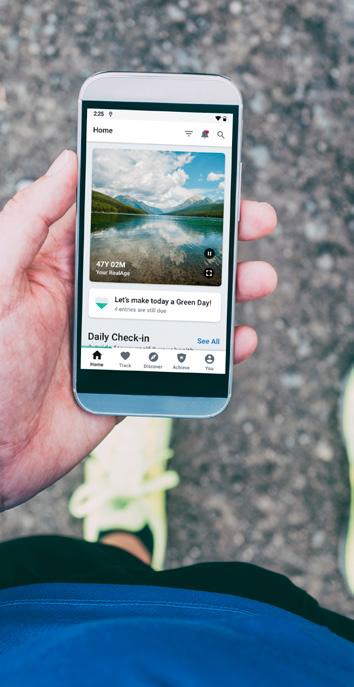

“Asurion’s employees don’t spend their days reading emails from HR or poring over benefits brochures—they’re helping customers,” she continues. “HR reaches them through a mixture of direct mailings, emails, digital signage, fliers, and targeted communications. Special keynote speakers at certain employee resource groups deliver the most important messages in person.”
Today, the US benefits team numbers less than ten, and Ledoux is doing her best to make sure they are empowered, as well. She views herself as a servant leader and encourages each person on her team to talk to their business partners and Asurion’s business leaders as much as possible. “I’m here to help the people working directly with me so we can help the business solve problems and help people who work here thrive,” she says.
Asurion continues to expand. The company is rebranding its popular UBreakiFix retail shops as Asurion Tech Repair & Solutions and is now offering an Asurion Tech Unlimited protection and support plan to online shoppers on Amazon. Organic and inorganic growth will fuel the company, and as it adds more employees, the benefits team will make sure they are ready to take advantage of all the perks Asurion makes available. AHL
Sharecare (Nasdaq: SHCR) is the digital health company that helps people—no matter where they are in their health journey—unify and manage all their health in one place. Its comprehensive, virtual health platform helps people, employers, health plans, providers, and other organizations optimize well-being population-wide by driving positive behavior change.
Helping large employers attract and retain talent with custom non-medical programs
We collaborate with large employers with one goal in mind: providing independent, evidence-based advice and specialized knowledge to significantly reduce overall costs and enhance your non-medical benefit programs.

After assignments around the US and the UK, Mike Melo's role at LifeLabs is a welcome return home. Based in Ontario, Canada, LifeLabs provides laboratory testing and management services, operates Canada's largest community medical laboratory network, and supports healthcare providers in transforming laboratory organizations. Melo, who serves as chief information security officer and vice president of Technology Shared Services, is grateful to work among care-oriented people close to home.
During his education, he focused on software development and network engineering, reasoning that he
would then have a comprehensive foundation to specialize in cybersecurity. However, Melo wanted to understand more than “just” cybersecurity.
“I wanted to learn all the different elements that I would then need to secure,” he explains. “Like how data moves throughout a network, how data interacts with applications, how the internet works.” Soon after, he served in security and leadership roles in the US and UK. On returning home to the province of Ontario, he helped build LifeLabs' cybersecurity program, and in December 2019 assumed the role of chief information security officer.
LifeLabs CISO Mike Melo leads two tech groups toward one goal By Joseph KayMelo calls LifeLabs the most rewarding workplace he's ever experienced. “We have tremendous values and culture at this company, because we are deeply passionate about what we do and about contributing to our community,” he says. “We have a one-team methodology we really try to live every day.”
In the technology team, consisting of both cybersecurity and IT operations, he's found and promoted a service orientation that centers the needs of the workforce. The intention is to make the tech work seamlessly, reliably, affording the teams focus on their goals.
When Melo describes the “CIA” security triad, he takes care to emphasize that “A.” “A lot of times we see security leadership focusing too much on confidentiality and integrity, forgetting about availability,” he says. “If you're not focusing heavily on it that customer experience is going to be terrible. Adoption isn’t going to happen successfully. This is where you get frustration and failure, fostering a negative security culture in a company.”
Operational clarity remains especially crucial in the health data field, where threats become more numerous by the day; leaders across the organization must understand what they're doing and why. Melo's job focuses on creating those “aha moments” that bring security principles to light.
After a breach incident in 2019, Melo's mandate centered on rebuilding trust and implementing a strategic vision for IT operations and security. One key initiative comprises integrating the IT operations teams and cybersecurity teams—about fifty and eighteen people, respectively, working in hybrid and distributed environments. In June, Melo held an in-person leadership summit to start developing trust at that next level. Over the course of two days, they held professional and social activities to build bonds and align on major priorities.
“The ultimate goal was to understand how to work together, and how to be social to build that level of trust,” Melo says. “During the day, our leading and learning events were 100-100 modeled—not 20 percent of people
“I want people to feel appreciated. I want them to feel that they have opportunities, whether that's moving up at LifeLabs or out into the industry. I want them to be the best version of themselves; anybody who comes through my security program is advancing the cybersecurity industry, both here and beyond.”
talking 80 percent of the time, everyone learning, everyone fully engaged, 100 percent of the time.”
“Ultimately, it was extremely successful,” he adds. “The two teams are working harmoniously, better than ever.” To support those initial gains, the teams hold daily stand-up meetings, weekly leadership meetings, and team surveys.
Melo prioritizes openness and healthy rapport; everyone has a unique and valuable perspective, and there's room for improvement, as well as space to celebrate success. “We've established a great working rapport and trust,” says Melo. "I'm quite transparent—I want to know how things are going, I want to hear how I can improve, I want the feedback on what we can be doing differently, or what we can continue to do well."
“Mike Melo is a change agent within LifeLabs, who has a vision to drive customer-centricity in his organization, for both his internal and external customers,” says Jeffrey Wong, industry managing partner at Kyndryl Canada. “He leads LifeLabs’ partnership with Kyndryl, and the companies have established a unique partnership, where Kyndryl provides technical expertise aligned with LifeLabs’ strategic transformation. It is a pleasure working with Mike, and we look forward to continuing our partnership throughout LifeLabs’ growth and transformation journey.”
Melo also encourages his teammates to get involved in the tech community to promote their work and develop their perspectives. Both teams at LifeLabs maintains a healthy training budget so that colleagues can visit conferences, learn new skills through certifications and training, promote their work in a public space, and stay up to date on platforms and practices.
Professional development opportunities maintain part of a valuable cultural balance on both teams: the workforce should be empowered to grow and eventually move on to new organizations, yet happy and fulfilled enough to stay and advance with LifeLabs, if they choose.
“I want people to feel appreciated,” he says. “I want them to feel that they have opportunities, whether that's moving up at LifeLabs or out into the industry. I want them to be the best version of themselves; anybody who comes through my security program is advancing the cybersecurity industry, both here and beyond.” AHL
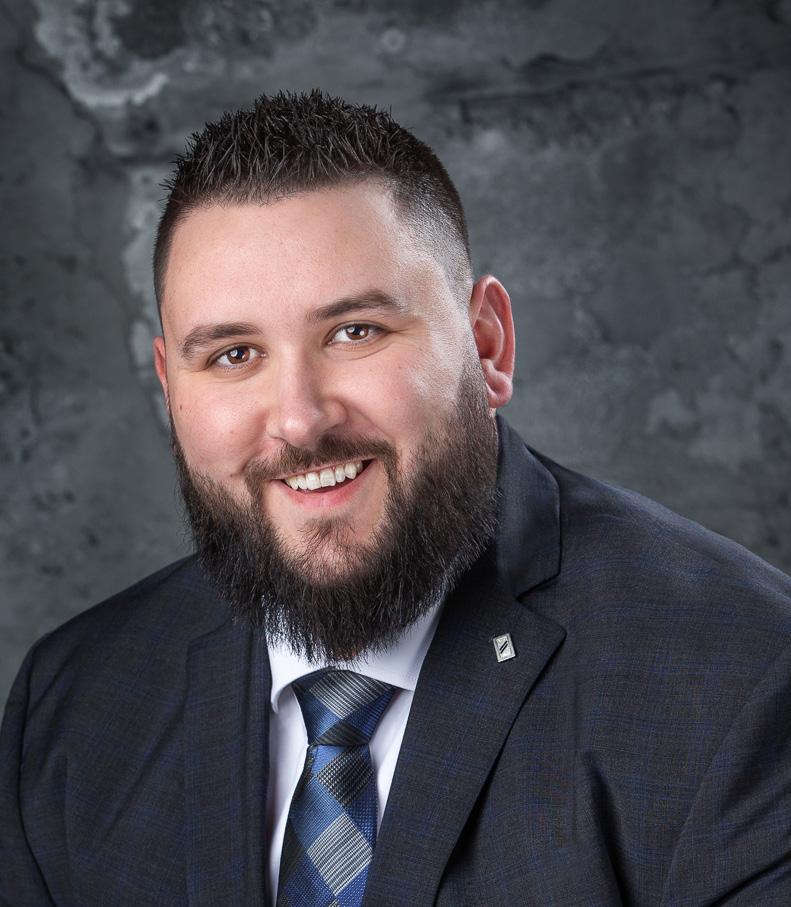
At Kyndryl, we stand up for progress, relentlessly transforming businesses in ways that move the world forward.

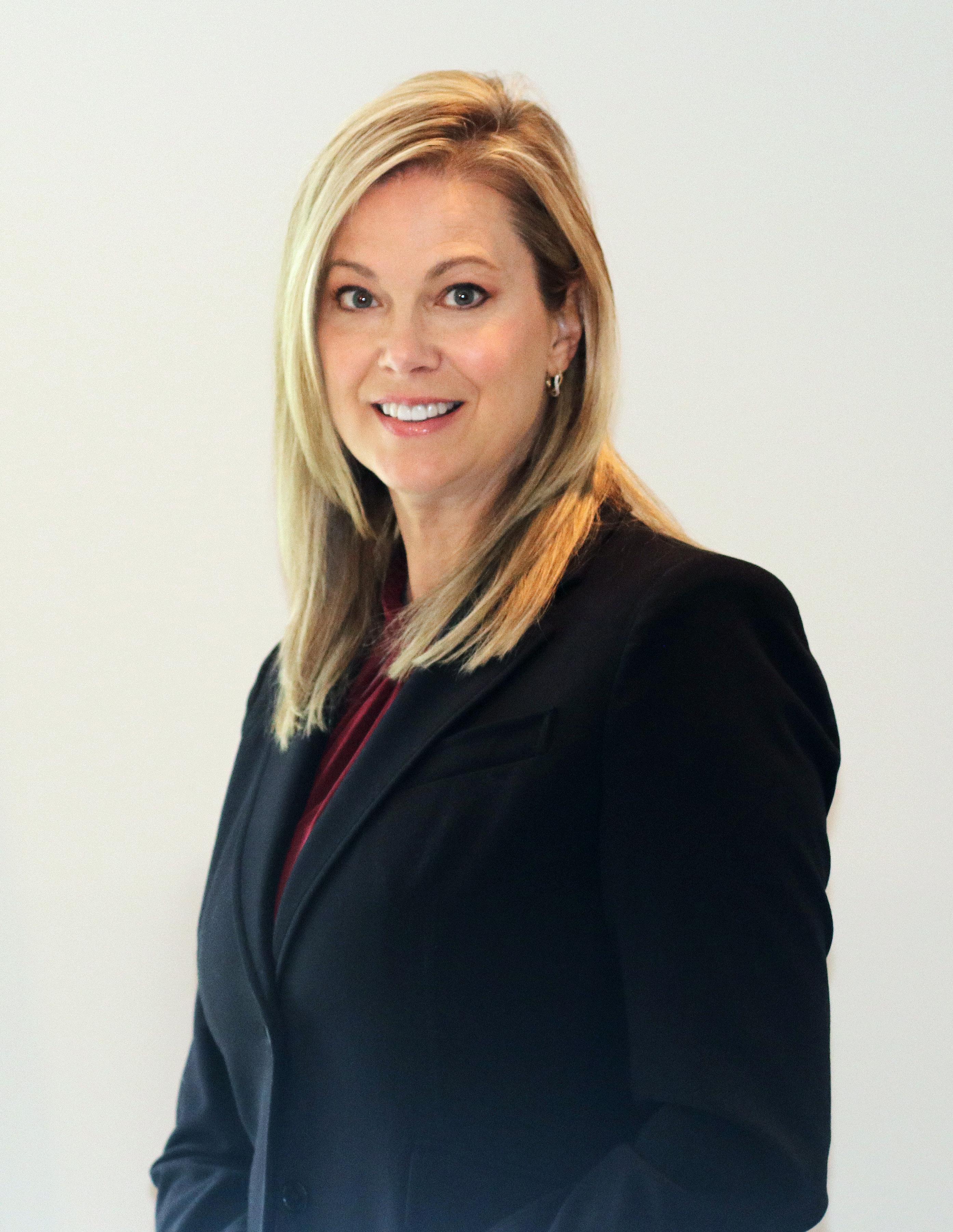 LeeAnn Miller
VP and Chief Pharmacy Officer Yale New Haven Health
LeeAnn Miller
VP and Chief Pharmacy Officer Yale New Haven Health
LeeAnn Miller wants to put pharmacists at the center of patient care. She’s not looking to oust other clinicians. To the contrary, she hopes to build fully integrated teams that generate the best possible outcomes—together.
At some hospitals or health systems, pharmacy remains an unseen department lurking below the surface—sometimes quite literally in the basement. Its professionals are summoned only if and when unexpected problems arise. But that’s not the case at Yale New Haven Health System (YNHH).
As vice president and chief pharmacy officer, Miller embeds her teams at every stage of the care continuum. “Pharmacists can make a huge difference, and we need to participate anytime medication is involved,” she says. The approach gives patients at Connecticut's largest healthcare system the best path toward healing and wellness.
Miller’s crusade to get pharmacists on the front lines of care hits close to home. The doctor of pharmacy (who also has a master’s of science in pharmaceutical systems and policy) was still early in her academic career at West Virginia University when her mother was diagnosed with diabetes. Unfortunately, disjointed care and poor support contributed to complications. Miller’s mother had a massive heart attack and passed away in a hospital setting. “A more team-based care approach in helping my own mother likely would have prevented her death,” Miller reflects.
Yale New Haven Health provides Miller the opportunity, freedom, and support to develop and implement her unique approach. “I’ve been able to get involved across the entire health system organization, and in doing so, my eyes were opened to the full potential of what we can accomplish as a pharmacy profession,” Miller says.
With more than twenty years at the system, and experience in several senior roles, Miller has influenced formulary policies, managed procurement, built relationships with physician and nurse leaders, and led
various teams. She also helped create repeatable structures and standardize governance models as YNHH opened new facilities and acquired others over the years.
Today, the health system encompasses five hospitals inclusive of Yale New Haven—the academic medical center, which has two main campuses—and boasts multiple specialties in cancer, children’s and women’s health, and psychiatry, to name a few. Its staff of nearly thirteen thousand treats over seventy-five thousand patients per year, and Yale’s comprehensive, multidisciplinary team has earned a stellar reputation for top programs in endocrinology, neurology, and cardiovascular surgery.
Bringing new hospitals, teams, and systems online helped Miller discover and hone new strategies for integrating services, optimizing best practices, eliminating redundancies, and efficiently delivering the best service
“Pharmacists can make a huge difference, and we need to participate anytime medication is involved.”


possible, all with the goal of creating an initiative called Pharmacy Care Signature. In her current role, Miller identifies new ways for pharmacy to drive the strategic priorities of YNHH forward. Those priorities include continuing to provide high-value patient-centered care focused on quality, safety, and optimal patient outcomes, not to mention growing clinical services, ensuring financial strength, and maintaining employer of choice status.
Care teams with embedded pharmacists and pharmacy technicians create a culture where pharmacists, doctors, nurses, and the entire care team want to stay and work. “Our model allows each person on the care team to practice at the top of their license,” Miller says. Administrative tasks, such as insurance authorizations, can be transferred to the pharmacy technicians so the physicians can see more patients and so decisions regarding medications, and the responsibilities around educating patients on medication complexities, are left in the hands of an expert.
“Protenus is proud to partner with LeeAnn and Yale New Haven Hospital, supporting their proactive efforts with drug diversion surveillance and empowering pharmacists to eliminate risk and generate the best possible outcomes," says Michelle Del Guercio, chief marketing officer at Protenus.
Other steps help YNHH attract and retain employees in the midst of the Great Resignation. Miller and her peers are continuing to grow services in unique areas, like establishing the first health system-integrated home infusion service in Connecticut. They are increasing work flexibility by offering remote and work-fromhome options for certain roles and have maintained a very robust career ladder for both technicians and pharmacists to provide sequenced opportunities for career growth.
Those who make their way onto Miller’s teams are certain to have access to strong mentors. The pharmacy team is developing robust mentoring programs
for employees at all levels—something Miller takes seriously. “We have to network to do our jobs well. That means being a mentor, finding a mentor, and creating relationships across the entire organization,” she says.
According to CarepathRx Chief Strategy Officer Keith Crawford, “CarepathRx is excited to partner with LeeAnn to expand Yale New Haven’s pharmacy capabilities to provide home infusion to the communities they serve. This infusion program will enhance patient care and positively impact patients’ lives through expanded services from a provider they know and trust. Home infusion creates significant community value, while improving hospital financial performance.”
Strong relationships yield creative solutions in times of crisis. At the onset of the COVID-19 pandemic, leaders across YNHH came together to form an incident management structure to best serve their community, patients, and staff. Miller formed an incident command structure in the pharmacy to enable fast, system-wide decisions and strengthen communication.
All leaders took on new roles outside of their traditional functional areas. Administrators held employee town hall meetings and press conferences, clinicians opened drive-through testing sites and mobile testing units, new telehealth options expanded care, and HR increased access to mental health and other support benefits. YNHH even opened, staffed, and operated a COVID-19 call center that once handled 4,426 calls in a single day and 494,785 in its first year.
Employees have volunteered to cover extra shifts, work at other facilities, and assume new roles and duties. They’ve administered hundreds of thousands of COVID-19 tests and vaccine doses, all while continuing to care for patients like they have since the General Hospital Society of Connecticut first opened its doors in 1826. Then, YNHH was the first hospital in the state. Nearly one hundred years later, it still provides worldclass care, with pharmacists and pharmacy technicians on the front lines. AHL
treatment space. CarepathRx takes a systematic approach that has been proven to improve patient access to care and create a sustainable pharmacy outpatient book of business, driving brand recognition and increasing hospital ROI.
More than 20 leading health systems have partnered with CarepathRx to build their infusion program. Hospital home infusion provides a low-risk, high-margin revenue stream that leveragethe hospital’s unique patient flow, ecosystem, and competitive advantages. contactus@carepathrxllc.com

The chief information officer is leading a digital transformation to engage patients
By Donald LiebensonThe COVID-19 pandemic hit few industries harder than healthcare, as Shakeeb Akhter, senior vice president and chief information officer at Children's Hospital of Philadelphia (CHOP), can attest. Now, technology and data analytics are playing key roles in not only helping CHOP to achieve its mission—“to provide the best care to children,” Akhter says— but also in addressing today’s challenges impacting the industry.
In response to those challenges, Akhter remains laser focused on one question: “How do we transform all of
our operations and care delivery models and use technology and data analytics to create efficiency and a seamless patient experience?”
Born in Pakistan, Akhter lived in Saudi Arabia until his family moved to the United States and settled in Lansing, Michigan when he was nine years old. He then relocated to Chicago, where he remained for more than twenty years until he moved to Philadelphia. His parents came here to provide their children better educational opportunities.
However, Akhter’s family found the first years in the country “humbling.” Before moving to the United States, his father, an electrical engineer, worked on some of the largest construction projects in the world. Here, he contributed to much smaller projects, and had to take a second job at a retail store. His mother, who had a masters in biochemistry and was a lab technologist and teacher in Saudi Arabia, worked at Burger King before she earned her phlebotomy license.
“My father’s attitude was ‘If it needs to get done, I will find a way to get it
done,’” Akter notes, adding that he always aspired for more impact and guided them to be successful.
This went a long way toward shaping Akhter’s work ethic. Being the middle child meant “understanding everybody’s perspectives, and the people and communication skills I developed as a kid made me a facilitator,” he says.
Akhter’s background is in economics and the financial services industry. “Data came easy to me, ever since high school and college,” he says. “My first exposure to analytics was during the 2008 financial crisis. I was at Bank of America. I oversaw the PIGS report—as in Portugal, Ireland, Greece, and Spain. As an intern, I was there at six in the morning to calculate how much risk the bank had on its balance sheet and how much cash we had to pay out to mitigate that risk.”
“I realized for the first time the power of data and analytics,” he continues. “I did a complete career shift to healthcare, because I wanted to do something more meaningful.”
Akhter saw data come to the forefront in healthcare during the height of the pandemic. “From determining how many beds we had available to ensuring there were employees to cover shifts, monitoring our supply levels, ramping down, then ramping up our services, data was at the root of all decisions being made at CHOP. I can’t imagine how we could have gone through COVID without the data and analytics infrastructure we had developed.
“Our team was involved in practically all aspects of decision-making during the pandemic,” he continues. “The tools we developed were used daily by practically all leaders in the system. Many senior leaders mentioned that, without the tools we developed, it would have been much more difficult to run the health system for the last two years.”
In partnership with Physician and Strategy leadership, Akhter also leads digital transformation at CHOP, which he describes as a way to use technology to reimagine healthcare, reduce burnout for clinicians, create a seamless patient experience, and advance operations using automation. “My role is to be an enabler,” he says, “to find areas where there are operational, clinical, or business problems that can be solved by technology or data. Then bringing cross-functional teams to bear to support our leaders.”
Data analytics, he says, allows for a holistic, 360-degree view of the patient. “When you book a flight with an airline, they know who you are,” he says. “They have your frequent flier number; they know your typical routes, your seat preference. We’re trying to do the same thing with healthcare. Data analytics takes into consideration socioeconomic and other factors that will allow us to best engage our patients and build loyalty.”
One of Akhter’s proudest achievements over the last two years is creating
a COVID executive dashboard. This represented the first time CHOP integrated data across its entire system and allowed the hospital to track overall COVID trends, including clinical and supply chain-related issues.
“Our advanced data analytics models determined whether the hospital would deplete its PPE supply when employees were brought back into work,” he says. “We placed our testing sites based on geo-location of our employees. We refreshed our visitation policies by looking at the data and we monitored the number of respiratory infections by geography, which served as an early indicator on which sites may begin seeing a larger number of COVID positive patients.”
Another innovation the Information Services team created was an employee symptom screening app, which allowed them to jump on a chat bot if they thought they had symptoms and report them to the contact tracing center as needed. The information services team also launched a patient telehealth program in a few weeks.
“People don’t care what you know; they care how you make them feel.”
 Shakeeb Akhter
SVP and CIO Children's Hospital of Philadelphia
Shakeeb Akhter
SVP and CIO Children's Hospital of Philadelphia
“We went from essentially no virtual telehealth visits to thousands of visits a week, because there was no other way to see your patient,” he says. “We had to build a platform resilient enough for all physicians to use, and then train them on it.”
Among the best compliments Akhter says he’s received are from clinicians and operational leaders telling him, “You and your teams are providing us tools and insights that make our lives easier,” and from clinicians connecting his team’s work to better patient outcomes.

“Because of data analytics,” he says, “we have been able to identify an issue earlier and respond to it quicker.”

His successes, both qualifiable and quantifiable, might stem from two pieces of advice Akhter received over his career that stay with him. One came from his father, who told him, “People don’t care what you know; they care how you make them feel.” The other he credits to a mentor, who told him, “Healthcare IT is people, people, people.”
“That really resonated with me,” he says, “because everything we’re doing from a technology perspective is impacting somebody on the front lines.” AHL
Turn data into insights, and those insights into action so you can improve patient outcomes, reduce costs, and optimize processes. Qlik.com

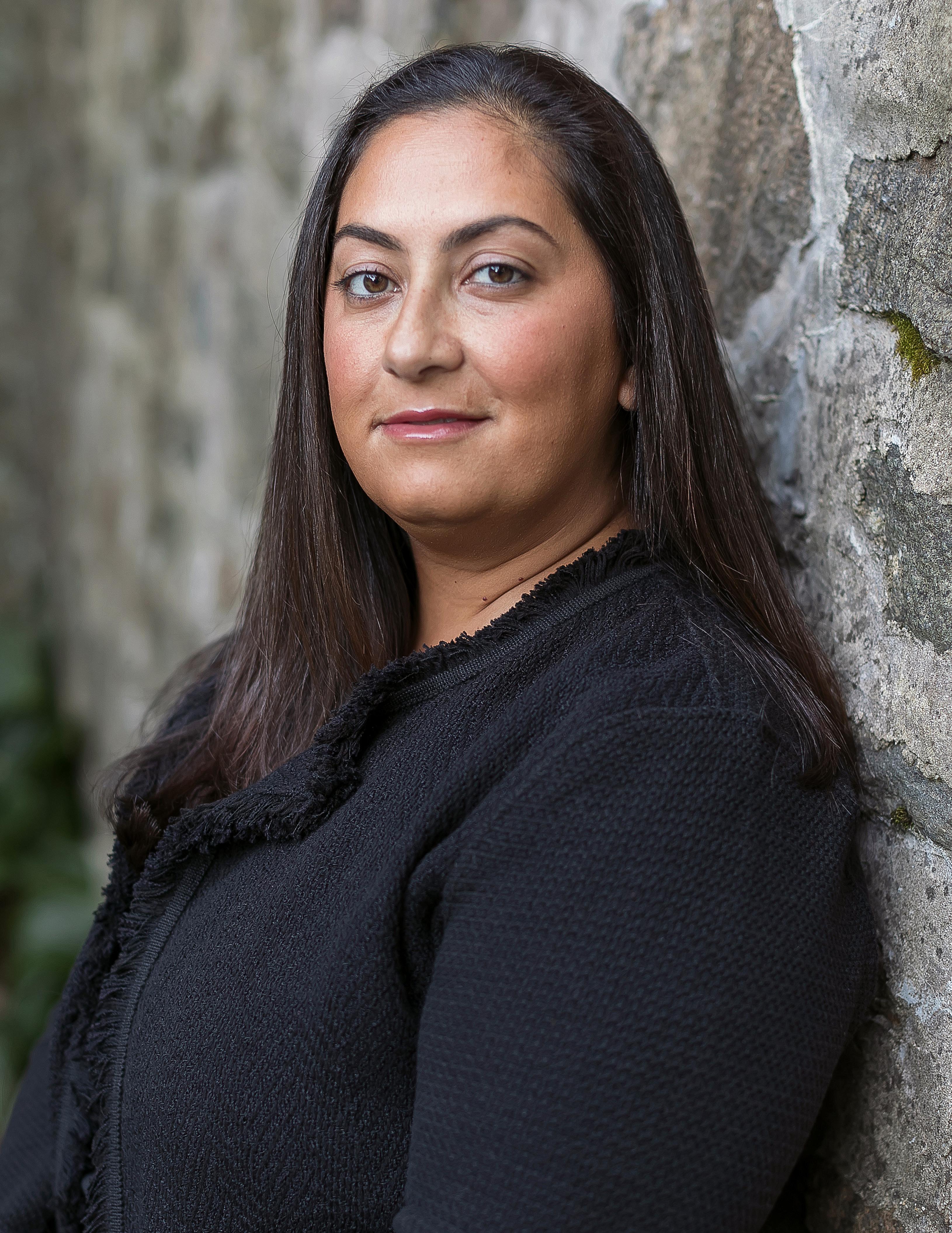
Shiva Noorchashm started Medica Communications, LLC sixteen years ago, creating the medical marketing firm from her track record in the pharmaceutical industry—on the service side and industry side launching different products and devices.
“We help with strategy development, doing anything and everything basically to help a company,” she explains. “I consider myself a risk taker. I feel with bigger risks come bigger rewards at the end of the day. And I like the challenge of encouraging clients to think differently. One of our biggest assets is our network of global medical, clinical, and regulatory cadre steeped in years of experience working in the different environments. This make us the experts we are in this niche.”
Today, the boutique firm collaborates with pharmaceutical, biotechnology, and medical device companies, developing quality strategic initiatives and providing the necessary relationships with key global medical, clinical, and regulatory experts to provide feedback on their messaging, tactics and product positioning.
“When I was on the firm side, I worked for a large firm. I felt like the mindset was to get from A-Z step by step, and I wanted to find unique routes,” Noorchashm recalls. “That made me want to start my own thing, because I’m an outside-the-box thinker. We want to do things differently here, and clients love that, because it sets them apart, too.”
Experience taught her that medical thinks differently than clinical, which thinks differently than regulatory,
“As the outside party, we act as the cohesive element that unites everyone, helps align perspectives, ensures things work, and builds a successful strategy.”
which thinks differently than commercial. “As the outside party, we act as the cohesive element that unites everyone, helps align perspectives, ensures things work, and builds a successful strategy,” she offers. Additionally, Noorchashm continues, their seasoned experience in numerous therapeutic areas globally informs each product, allowing the organization to develop key strategies for differentiating their clients from the competition.
In high school, Noorchashm interned at AstraZeneca, a pharma company in Pennsylvania, eventually becoming involved in the research and development process. She started on the medical/clinical side, but later transitioned to regulatory, then commercial.
“I became really interested in the drug development, regulatory and product launch process,” she recounts. “I studied pre-med in college and thought about going to med school, but I didn’t, wanting to get into the business side of things, which is what brought me to pharma.”
After leaving pharma, Noorchashm transitioned to the service side and launched a wide variety of products and devices. This provided her greater insight into the field, a significant advantage she now leverages for her own business. Medica’s boutique platform allows for the personalization and dedication to clients’ needs, with innovation and AI top of mind.
“We have been working on innovations for years now and partnered with a pretty high-end developer out in Silicon Valley to develop technology; we built a team around tech,” Noorchashm explains. “We are doing
more virtual clinical trials for clients and developing AI technology for patient care, healthcare professional, and patient education apps. With the way the world is moving so quickly in technology, that’s something a lot of our clients are hesitant about, but it’s something we really bring to the table and push the envelope with. There’s a lot of opportunity out there.”
The pandemic created some challenges, but Noorchashm notes that without knowing it, her team was already ready for it. “We work with world-renowned experts globally, so we already had a virtual platform setup that we had been using for years,” she explains. “With launching products and working on so many different therapeutic areas, we travelled a lot, so that had to stop, but the work became even more. We showed that we were prepared.”
She credits those who work for Medica with that, as she has fifty-two team members across the globe. “Our team is phenomenal,” Noorchashm enthuses. “We regularly consult with global medical experts and ex-FDA experts in different/various therapeutic areas. Few firms do. I think that says a lot about us, especially considering the reputation we cultivated over the years. It’s a huge achievement.”
Looking ahead, Noorchashm wants to remain a specialized boutique firm, rather than getting too large. “I want us to continue growing within by thinking ahead and being prepared for what the future outlook looks like in healthcare. I do see us becoming stronger and more scientifically and innovatively robust.” AHL
CFO Bryan Fuerst makes a case for clients to rely on Propel Health’s trio of subsidiaries––Centron, Fusion, and Elevate Strategic Engagements––for all of their pharmaceutical marketing needs
By Natalie Kochanov Portraits by Paul QuitorianoIt’s never easy stepping into a new role, but for Bryan Fuerst, the transition from senior vice president of finance to CFO went about as smoothly as it could have gone. Of course, it helped he already knew a thing or two about Propel Health, the medical communications network he now leads with CEO Mark Fleischer.
“I’ve been with the company pretty much since we started, about twenty-one years ago,” Fuerst says. “It wasn’t like I was coming into it new and cold.”
The deliberateness of his elevation to CFO prepared Fuerst to act just as intentionally in setting Propel’s forward-looking strategy. With a major rebrand of the company already under their belts, he and Fleischer are ready to leverage the resulting publicity to make a new name for Propel—one as a full-service provider with the power to position and reposition drugs in the market on behalf of its pharmaceutical and biotech clients.
Until February 2022, Propel was known as HealthSTAR Communications.
As Fuerst explains, the rebrand stemmed from a desire to place equal attention on all three of the company’s subsidiaries: Centron, an advertising agency; Fusion, a medical communications company; and Elevate Strategic Engagements, the pharma meetings business now synonymous with HealthSTAR as a whole.
“HealthSTAR was known as primarily a meetings company because that’s the biggest piece of our business,” Fuerst says. “What Mark and I, and the entire operating committee, want to do is change
 Bryan Fuerst
Bryan Fuerst
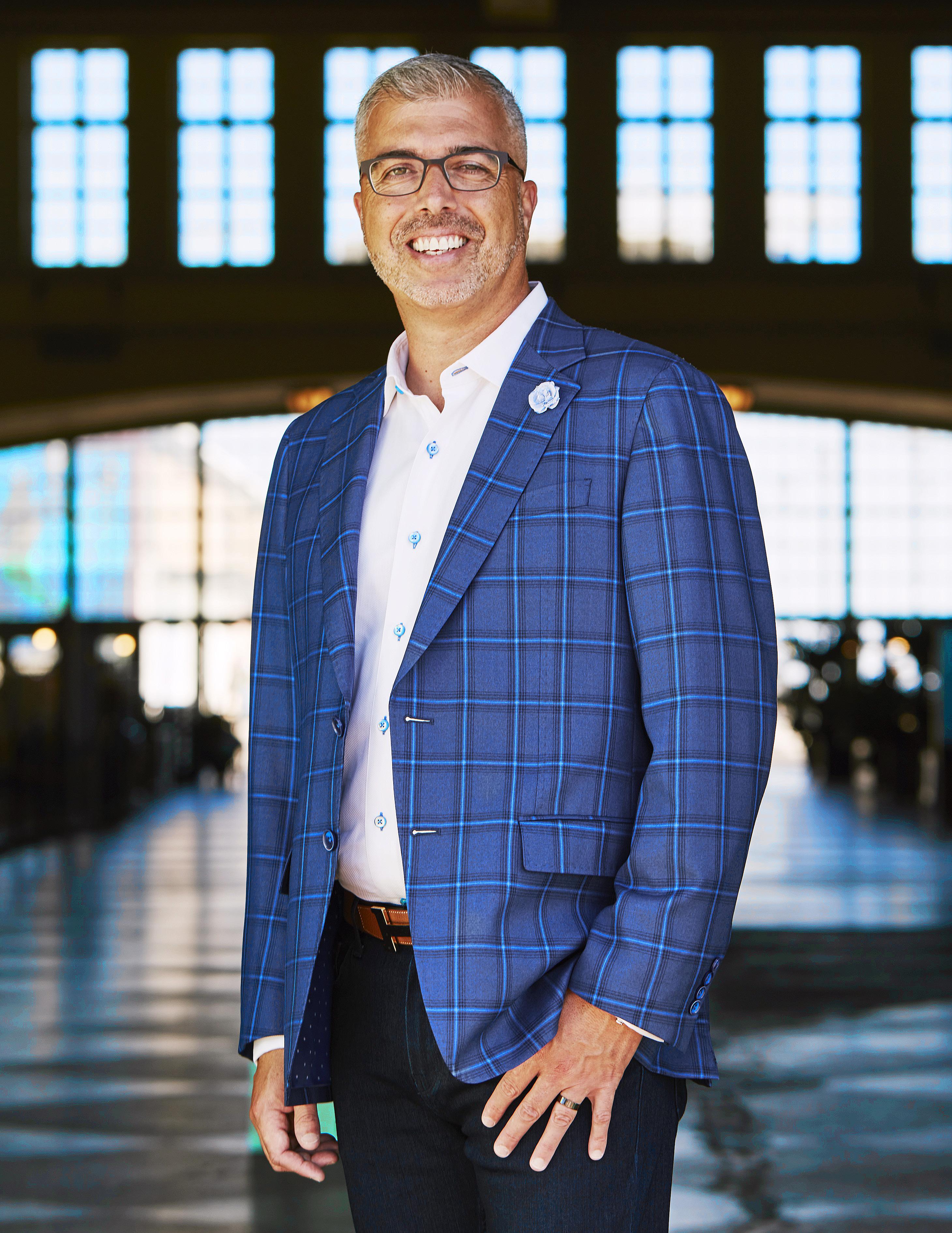
that marketplace perspective or assumption. Relaunching our brand allows us to talk about the company in its full-service scope, meaning that we get to tell our clients not only how the whole company works but also how it integrates.”
Indeed, each subsidiary plays a part in achieving Fuerst’s holistic vision for Propel. “Our mission is to partner with our clients to help them bring their product to life and to the marketplace,” he says. “With all of our offerings, we can assist in promoting that drug throughout its lifecycle.”
Ideally, Propel begins working with a client years before the drug is approved. At that point, Centron assists the client in developing and executing a marketing plan comprising all branding and advertising elements.
Fusion, on the other hand, handles the preparation of technical materials. “While Fusion might look like an advertising company from twenty thousand feet, they are much more highly scientific. We have PhDs and MDs on staff, and the reason why is that they write the content for communications with the doctors,” Fuerst elaborates.
The final piece of the puzzle and one that builds on the work already completed by Centron and Fusion––is Elevate. “We arrange very focused, compliant meetings that bring peers together to help push forward the issue being described, whether it’s how to use the drug or what the patient response looks like six to eight months later.”
An increasingly important element of organizing pharma meetings is compliance. “We built a proprietary system called MER360 that allows us to run a compliant meeting from end to end,” Fuerst notes. “We’re the partner between the pharma company and the physician,
and both sides know that we can keep them compliant.”
Beyond compliance, Fuerst oversees all finance, legal, and human resources (HR) matters at Propel. The latter may be a relatively recent addition to his plate, but it is an area of significant focus nonetheless. “Over the past two years, we have migrated to being a virtual company, which has been great, but the role of HR needs to change,” he says. “One of the things I’m tackling this year is how to have a more dynamic HR department in the virtual world.”
Fuerst also emphasizes the necessity of adapting to the employee-driven market that has sprung up in the wake of COVID-19. He hopes to attract new bestin-class talent by expanding recruiting efforts nationwide and inspire existing employees to stay at the company by combining the right benefits with a positive culture.
“We’re a service organization, so we are only as good as our people,” he says. “How
“Our mission is to partner with our clients to help them bring their product to life and to the marketplace. With all of our different offerings, we can assist in promoting that drug throughout its lifecycle.”
At Campbell Petrie, our philosophy is to listen, plan, and implement employee benefits strategies while providing valuable services and transparent business practices. Our mission is to help our clients:

• E ectively manage healthcare and benefits COST;
• Protect our clients by keeping them COMPLIANT;
• Build a COMMUNICATION strategy that clearly and concisely communicates the value and worth of your employee benefits plans;
• Align your benefits with your company’s unique CULTURE.
We want to manage your 4C’s by demonstrating integrity, competency, and professionalism in the marketing, sales, and service of employee benefits. Our belief is that the key to ensuring a lasting relationship is transparency in all our processes. We believe that our Company’s commitment to transparency with our clients has built a level of trust that is unmatched in our industry.
campbellpetrie.com
973.813.1153
do we give our clients the best value? Well, it’s getting the best employees and giving them the tools and the opportunity to work to their potential.”
Alexander J. Narcise, CPA and partner at Wiss, has worked with Fuerst for several years. He offers, “I first met Bryan in 2007 when my firm was engaged to audit the company. Bryan and I are of similar ages, and we grew up together; our relationship was more than the auditor-client relationship. We often met outside the office, and our conversations were always about helping each other. Bryan and Healthstar came to me at a sound stage in my career as they helped me develop into the professional I am today. Congratulations to Bryan on this well-deserved achievement.”
Fuerst believes he found a great partner in his CEO. The two share a flexible leadership style and encourage employees to strike a healthy balance between their professional and personal obligations. Moreover, they’re

both committed to finding the best way to manage in a virtual environment.
“We’re taking a bit of a two-pronged approach,” Fuerst says. “We’re letting our different subsidiaries––Elevate, Fusion, and Centron permeate their culture down to their people, but we are also highly vested in ensuring our employees know they are part of the Propel Health family by hosting company-wide townhall meetings and sending out communications and high-level surveys to our employees.”
Fuerst and Fleischer also maintain open lines of communication with the board to ensure people at all levels understand the direction in which Propel is headed. That’s particularly important to Fuerst, who believes that the company’s future victories will mean the most when the team gets to share in them together.
Fuerst says, “If you get to a goal, and your team is there with you, high fiving each other and feeling accomplished, that’s success.” AHL


After starting as a regional practice in Pennsylvania, strong leadership and steady growth have made the Rothman Orthopaedic Institute into the world’s biggest full-service orthopaedic practice
By Zachary BrownIn the 1970s, Richard Rothman served as part of the surgical faculty at Pennsylvania Hospital when he made an ambitious dream known—he wanted to build a new orthopaedic center of excellence to bring leading musculoskeletal care to his communities. Soon, something fortuitous happened. Rothman operated on Walter Annenberg, who owned the media company that published The Philadelphia Inquirer, TV Guide, and Seventeen. He donated the funds Rothman needed to start his orthopaedic center.
Today, with dozens of offices in four states, the Rothman Orthopaedic Institute is the world’s largest full-service orthopaedic practice. Its specialists complete 17,000 hip and knee replacements, perform 6,100 surgical spine procedures, and evaluate 75,000 sports injuries per year. They are the team physicians for the Philadelphia Eagles, Philadelphia Phillies, Philadelphia 76ers, The Radio City Rockettes, and many local high schools and colleges.
A strong financial team has anchored the Rothman Orthopaedic Institute’s growth over the years. Sean Porrini serves as chief financial officer. The CPA joined the organization in 2019 after earning a degree in accounting from Saint Joseph’s University and a master’s of Taxation from Villanova. He started his career at firms serving hospitals and other healthcare facilities, before becoming CFO for IFIDA Healthcare, Continuum Health Alliance, and Mid-Atlantic Dental Partners.
“In 2019 I was introduced to Sean as newly appointed CFO at Rothman, shortly before the world shut down,” says Nicholas Jennings, Partner, Private Client Services at BDO USA, LLP. “Looking back, his leadership and ability to inspire change was instrumental in navigating challenges presented by the pandemic. Sean’s focus on building infrastructure will continue to pay dividends in the future.”
With a passion for his industry and as a financial leader, Porrini focuses on areas like population health, patient navigation, and cost of care financial modelling. He created his own patient interaction tool and designed an accounting system his peers use to reduce manual entry and bring automation and speed to the process of financial reporting.
These efforts, combined with a clear vision from new leaders, enable the Rothman Orthopaedic Institute to continue its legacy of growth and expansion. In April of 2021, the center announced Dr. Christopher T. Olivia as its new CEO.
Olivia, a board-certified ophthalmologist, brings expertise in medical school affiliations research enterprise management, strategic planning, and business development. He’s led turnarounds, completed mergers, and served as CEO of Visiting Nurse Service of New York, and many other health-related organizations.
“Dr. Olivia is the right leader for our practice, and we are extremely excited to welcome someone of his calibre to the Rothman family. He brings over 25 years of diversified accomplishments in physician practice, health insurance, healthcare services, and health information technology. His experience on the local and national level, his understanding of the evolving landscape of healthcare and his strategic initiatives will significantly contribute to taking Rothman to the next level,” said Alexander R. Vaccaro, MD, PhD, MBA, President of Rothman Orthopaedic Institute.
Rothman Orthopaedic Institute had already partnered with AdventHealth to move deeper into Florida. Soon after Olivia’s arrival, the group announced plans to open in California and pursue national expansion. According to its website, Rothman Orthopaedics “strives to be the global standard for the provision of musculoskeletal care by achieving excellence in patient outcomes, research, teaching, and innovative healthcare technology.”
They do this not only by caring for major sports teams and their athletes, but by providing everyday care for patients like Anita. Anita’s knee pain took her to a local orthopaedist for a knee replacement, but the procedure made her symptoms worse. In fact, she couldn’t walk. Anita met with a Rothman doctor, and after he performed a revision of her total knee replacement, she was able to stand and walk again just hours after her surgery. Today, Anita is doing more than walking. Because of the care she found at Rothman, she is pursuing her hobbies, playing with her grandchildren, and living a full life. AHL
People who know Private Client Services, know BDO.

Whether we’re helping clients with day-to-day financial concerns or advising on long-term tax complexities, our Private Client Services professionals start by listening to understand our clients’ goals — for themselves and for their families. Our services are designed to address our clients’ most pressing concerns, from income, trust, gift and estate tax planning, to financial issues they may face in order to protect, preserve and pass on wealth to the next generation.
 Nicholas Jennings, Tax Partner, Private Client Services njennings@bdo.com
Nicholas Jennings, Tax Partner, Private Client Services njennings@bdo.com
@BDO_USA_Tax
Accountants and Advisors www.bdo.com/PrivateClientServices

“It’s not just about me. It’s about my family’s future.”
Daniel Shockley explains how he juggles multiple roles at Alliance Physical Therapy Partners and how strategic investments in the company have led to positive changes
By Billy YostWhen it comes to private equity entering the health space, Daniel Shockley understands the trepidation. The chief financial officer at Alliance Physical Therapy Partners has read the same headlines as the rest of us: large private equity funds go in, buy a private company, load them with debt, and file for bankruptcy a year later.
“It gets a lot of news, and it should,” Shockley explains. “But I’d like to think that is an incredibly small number of the broader PE population.”
Shockley has seen firsthand the value that can be created when private equity does its homework. When BPOC, a well-established healthcare investor, made a strategic investment in Alliance in 2021, positive changes quickly ensued.
“Along with fantastic customer service scores, which we’ve always maintained, we expanded our footprint significantly in nine months,” the CFO says. “That’s just indicative of where we want to continue to grow over the next four or five years.”
It’s not just about new clinics—it’s about the kinds of services Alliance will be able to offer. They opened their first pediatric therapy clinic in 2022, as well as their first women’s health clinic. There
“Our partners and toptier clinicians allow us to provide home exercise programs, analyze different musculoskeletal movements and pain that the patient is incurring, and allow the therapist to diagnose and help the patient.”
are more specialty services on the way, and many of these changes are made possible by a strategic investment from a private equity firm that understands its goals.
“At this level, I don’t really use the term ‘private equity,’” Shockley explains. “I think it’s ‘growth equity.’ BPOC is committed to seeing us grow. It’s a real partnership that will make returns for their investors while helping us grow the right way.”
Shockley is no stranger to the conservative approach. He entered the job market just as Enron and Arthur Andersen collapsed. A top-five accounting firm suddenly no longer existed, and Shockley saw friends who had offers rescinded at a shocking clip. There was another significant change that, fortunately, outlasted the hard times.
“Corporate governance suddenly became a significant part of the finance function,” the CFO remembers. “Right off the bat, I learned the lesson that, hey, the numbers cannot be wrong.”
After Enron, it was the economic collapse of 2008. The housing market collapsed, banks were going bust, and Shockley, for better or worse, was front row for another educational moment.
“Even on a personal basis, getting an approval letter for a house loan didn’t mean you should buy that house,” Shockley says. “At the same time, I had moved into private equity, where so much of the external market was impacting what we were doing on a day-to-day basis. Maybe that’s why I tend to act a little more conservatively.”
Alliance isn’t Shockley’s first job in healthcare, and he says he was thrilled to come back to the space because of the direct impact he can make on patient health. The pandemic, of course, meant that the company has had to adapt to challenging conditions. For example, Alliance was able to significantly enhance its teletherapy program through a partnership with sophisticated technology partners.
“Our partners and top-tier clinicians allow us to provide home exercise programs, analyze different musculoskeletal movements and pain that the patient is incurring, and allow the therapist to diagnose and help the patient,” the CFO explains. “It’s not a Zoom call. It’s a viable alternative for people who may not be near a clinic or may be near the end of their treatment, and right now it’s a growing part of our total visits across the business.”
 Daniel Shockley
CFO
Alliance Physical Therapy Partners
Daniel Shockley
CFO
Alliance Physical Therapy Partners

We’re advisors and consultants with a passion for helping you look beyond what others see and get to the proactive side of insurance.
The perfect combination of insurance, benefits, safety, and compliance exists for your business and is just waiting to be found. That’s your edge –the piece that covers your bases, helps you grow, and sets you apart from other companies in the eyes of talent.



Founded nearly 100 years ago, we’re employee-owned and self-motivated. Why does that matter? It completely changes the way we approach your business.



thegibsonedge.com
Shockley admits that when one thinks of physical therapy, they think of being right next to a trained therapist. But the CFO also says that often, those who are prescribed physical therapy don’t follow through. Whether it’s about the distance they must travel or schedule conflicts, a majority of those prescribed don’t go.

“I think the numbers are between 75 and 90 percent that don’t seek prescribed treatments, but even if they’re 50 percent, think of how much good this can do. I’m incredibly proud of what our Agile Physical Therapy Team has been able to accomplish.”
Shockley is well-informed about Alliance’s IT efforts because he wears a lot of hats at the company; he’s as invested in cybersecurity as he is in revenue cycle or other financial matters. How is he able to able to manage such a wide charge?
“You just have to have good people in place and great leadership. Our CEO, Richard Leaver, sets the tone for the entire organization and alignment across the platform,” Shockley says. “We’ve made able to make some fantastic internal promotions, like our controller Matt Potter, and it also happens with clinicians being promoted to clinic directors.” AHL
“Along with fantastic customer service scores, which we’ve always maintained, we expanded our footprint significantly in nine months.”
How System VP for Revenue Cycle and Health Information Management Stephanie Wells brings strong financial outcomes to Ochsner Health System
By Zachary BrownHospital administrators know the game all too well.
Every few years, newly elected leaders pass legislation that has a major impact on their work. New regulations and changing rules alter payment rates and reimbursement schedules. A fluctuating landscape means health systems and medical facilities need top-notch revenue cycle management leaders that can optimize efforts and drive performance to maximize results.
That’s especially true at organizations like Ochsner Health that have ambitious service-related missions.
Ochsner, Louisiana’s integrated healthcare system founded in 1942, exists to “Serve, heal, lead, educate, and innovate.” It can’t fulfil that mission and operate its forty hospitals, 300 health centers, and a robust digital health system to serve patients in the region unless its revenue cycle is sound and sustainable.
Stephanie Wells is the system vice president for Revenue Cycle and Health Information Management for Ochsner Health System. The CPA and former Deloitte auditor joined the system eleven years ago as assistant vice president and was soon promoted to VP. Wells
studied accounting at the University of New Orleans and is an adjunct instructor at Tulane’s Master of Health Administration program.
According to Brad Rennick, chief customer officer, at FinThrive, “We at FinThrive are honored to have two decades of partnership with Ochsner Health. Stephanie Wells’ has a collaborative leadership style, which encourages innovation. Oschner also shares business insights industry-wide to encourage others to take an innovative and data-driven approach to their revenue management.”
Recent developments have forced leaders like Wells to prioritize innovation more than ever before. In April of 2022, Ochsner Health announced its use of a new tool designed to improve workflow.
The medical coding engine for automation comes from Nym Health, a New York City company. Together, its technologists, engineers, and physicians are “transforming clinical language into actionable information that brings greater accuracy and efficiency to medical billing.”
Nym is doing exactly that for Ochsner Health’s emergency departments. “We’re focused on simplifying complexity and building the capacity and scalability to meet future needs, such as those associated with resourcing, dynamic workflows, and rapidly growing visit volumes across the continuum of care,” Vicki Kaplan, vice president, coding and HIM said in a press release.
The company’s powerful engine removes the need for human intervention as it codes charts. According to a company website, “For each chart it fully understands, Nym’s engine instantly and accurately assigns ICD-10 and CPT codes for billing.” Any charts left unhanded are then flagged for humans to code.
This area is one Ochsner has prioritized for some time. The health system has offered a revenue cycle fellowship program since 2015. The intensive, two-year program helps candidates meet certain objectives and emerge as potential leaders.
First, candidates are paired with mentors and encouraged to form strong bonds with peers. However, not all candidates have mentors from their concentration. They may be paired with mentors from other areas like finance, which managers say brings a broad view of issues and challenges that will likely arise throughout one’s career.
In the first year, candidates visit facilities to encounter leaders and executives before starting rotations in numerous operational areas. A hands-on tour through the entire revenue cycle provides a detailed experience.
Next, in year two, candidates identify and complete projects in partnership with others in their growing professional networks. All Ochsner revenue cycle fellows become Lean Six Sigma Green Belts.
A strong revenue cycle operations team ensures Ochsner can serve its patients on a daily basis and also step up in unexpected times of crisis. By the end of 2021, health system employees had completed more than two million COVID-19 tests, treated and discharged 17,710 COVID patients, and administered 65,045 vaccines. In the same year, they supported Hurricane Ida storm recovery and served as essential personnel in the field.
Heavy rain and 150 mile-an-hour winds flooded an ICU and tested all parts of Ochsner. While CFO Pete November and Executive Vice President and Chief Risk and Human Resources Officer Tracey Schiro worked to make fuel available to employees on site, clinical leaders put COVID patients in the ER and non-COVID patients in the lobby. Neurosurgery resident Dr. Joseph Lockwood recalls treating a patient with two blood clots on the brain as he watched water seep in the main campus facility, which briefly lost power moments before the lifesaving procedure. He and Dr. Roger Smith completed a successful craniotomy.
In the 2021 annual report, Smith says, “Ochsner is full of heroes—no doubt about it. If a storm happens, we are prepared to take care of it. That’s what we are here for.” Effective revenue cycle management helps make it all possible to normal and unprecedented times alike. AHL
FinThrive delivers a frictionless end-to-end revenue experience—where healthcare meets software meets finance—to transform revenue management.
Welcome to a smarter, smoother endto-end revenue management platform that empowers the providers, payers and patients who make the healthcare economy work. Intelligent automation drives workflow seamlessly, freeing up the teams you trust to tackle tasks in need of human touch.
FinThrive is breaking the cycle of inefficiency. We envision a healthcare economy where finance can flow freely, without complication.
Less friction in your revenue management shifts your organization from playing catch-up to building a future resilient to change. And that’s a transformative force in healthcare.
Learn more about our end-to-end platform at finthrive.com
Some executives feel the importance of their work because they have experienced its impact firsthand. Shaped by their mission to help others or by their personal experiences with healthcare, many executives are drawn to the industry from a sense of empathy and a desire to make a difference for others.
160. Mika Taylor
John Muir Health
164. Inbal Hasbani
Cigna
168. Keith Hovey
Capital Health
172. Denise Sims James
Trinity Health
178. Frank Cavanagh
Teva Pharmaceuticals
184. Elizabeth Chappelear
Tyson Foods
188. Yi Zhou, Adaptive Biotechnologies
Mika Taylor’s passion for growth has led her into six positions over seventeen years at John Muir Health as she’s worked to create new opportunities for herself and others
By Billy Yost Mika Taylor VP of Finance & Optum Performance John Muir Health
Mika Taylor VP of Finance & Optum Performance John Muir Health
When Mika Taylor first accepted a position at John Muir Health in 2005, it came with a gentle warning. “The recruiter told me that it’s a great organization, but that there wasn’t a lot of change here,” Taylor remembers. “It seems funny now considering the past seventeen years.”
That’s because since 2005, Taylor has grown into six positions—some that didn’t exist until she built them out— the most recent being her January 2022 promotion to vice president of finance and Optum performance for the healthcare system. Change has been not only constant, but important for both Taylor and her forward-thinking financial team.
Colleagues of Taylor have taken notice and praise her adaptability. “Mika is a leader that never loses sight of the importance of personal connections in healthcare,” says Christine Nation, WFM Analytics senior manager at Accenture. “Her ability to balance the financial stewardship of the organization with the importance of optimal patient outcomes and the well-being of frontline caregivers truly sets her apart.”
While Taylor got her foot in the door with an accounting position, her passion for growth drove her into new areas, such as the building of the organization’s analytics structure. She applied for a management position, got the job, and found that while the area was invigorating, it wasn’t her end goal.
What stands out most in talking with Taylor is the executive’s drive to find work that interests her. Not every promotion was a resounding success in finding that fulfillment, she says, but everyone was necessary in helping her find her way.
“I’ve never been the person who’s always trying to get that next job,” Taylor says. “I’m just grateful that I work for
an organization that has recognized the need to change. As business needs have changed, sometimes that meant building a job that didn’t exist until I moved there.”
Taylor’s current VP role, for example, didn’t exist until leadership realized it was an area that needed to be built out and placed their faith in Taylor to develop it. The same also is true of her previous roles as director of financial planning and budget and as executive finance director.
Taylor is now tasked with overseeing numerous partnerships within John Muir Health, expanding her presence outside of the financial space, and better understanding critical back-end administrative areas. That perspective also is helping the finance team to be more proactive in their approach.
“Managing these partnerships offers the chance for finance to have some insight into these processes and projects before they happen,” Taylor explains.
“Being able to bring information to the team as it’s happening is so much more effective and validating than seeing it after the fact.”
Personal growth is just as critical. The VP says that as her roles have changed, she’s found her own voice and improved her self-advocacy. She wasn’t sure that she was ready for this new role, but had the backing of her boss who knew the executive wanted to continue to build out her skill set. Taylor says she encourages others can take their own leaps of faith.
“I just hope people can understand that it’s important for people to let those around them know that they’re looking to grow,” Taylor says. “If people know that you’re looking for a challenge, your name is much likelier to come up in conversations, even if that job doesn’t exist yet.”
Despite Taylor’s rise at John Muir, the executive hasn’t let her life outside of her day job suffer. The mother of two has
As her leadership responsibilities have increased, Mika Taylor has found inspiration in Brené Brown’s Dare to Lead: Brave Work. Tough Conversations. Whole Hearts. Taylor quotes a passage that fundamentally shifted the way she thought about leadership.
Stop kicking the rock and move it instead. If a person is not the right person for the position, there is no amount of pushing that’s going to change it. They need to be reassigned to a position where they can make a contribution.
“That really challenged me to step back and realize we all have different interactions with people that might frustrate us at times,” Taylor says. “You have to learn to have different expectations for different people, learn to support them, and not set them up for failure.”
made her two sons a priority and says that being present for them is nonnegotiable. The executive credits her husband in helping achieve that balance, acting as an ideal partner in helping navigate the “new normal” that many families have grappled with since COVID-19 redefined the nature of work.

Even before the world was turned upside down by the pandemic, Taylor’s husband was her rock—not just a coparent, but a consultant for issues large or small. “I could not have progressed as I have without decisions we made together to support one another and our family,” she says.
While the challenges and heartbreaks of the pandemic echo long after the lockdown of 2020, the executive says a silver lining was the new focus on workplace flexibility exhibited by many organizations. It’s especially meaningful for Taylor, as John Muir’s Northern California location also is where she grew up. She’s surrounded by family and friends in a community that has helped shape her.
“Balance means something different for every single person, and I think it’s important to keep that in mind,” Taylor says. “But, whatever your approach, I
just think you need to put your best foot forward after understanding what is right for you. Take that time to understand what is important to you, and I think you can make it happen.” AHL
Accenture is a global professional services company with leading capabilities in digital, cloud, and security. Combining unmatched experience and specialized skills across more than 40 industries, we offer strategy and consulting, technology and operations services and Accenture Song—all powered by the world’s largest network of Advanced Technology and Intelligent Operations centers. Our 710,000 people deliver on the promise of technology and human ingenuity every day, serving clients in more than 120 countries. We embrace the power of change to create value and shared success for our clients, people, shareholders, partners, and communities. To learn more about Accenture’s healthcare workforce management services and UKG partnership visit accenture.com/ukg.
Advancing the mission to improve the health of the communities we serve, John Muir Health and Optum are focused on advancing delivery of high-quality, convenient, and affordable healthcare to the Bay Area. The exceptional skills and knowledge of the John Muir Health team, together with Optum’s extensive set of capabilities, advance this mission.

www.optum.com



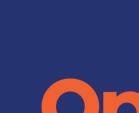





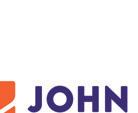


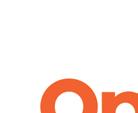
“If people know that you’re looking for a challenge, your name is much likelier to come up in conversations, even if that job doesn’t exist yet.”
Optum is a leading information and technology-enabled health services business dedicated to helping make the health system work better for everyone.
Optum joins in recognizing Mika Taylor and John Muir Health
Even after studying for the LSAT and applying to law school, Inbal Hasbani wasn’t sold on the idea of a legal career. In fact, it wasn’t until she actually began her coursework that she recognized law as the perfect fit for both her personality and desire to make a tangible impact on people.
“I went into law school still not really sure,” Hasbani admits. “But I was amazed to find that I loved the law. It’s a fascinating space that applies intellectual reasoning to real issues that affect people.”
Hasbani’s real-world impact is clearer than ever in her latest role counseling the business at Cigna, a leader in the health services industry. She prides herself on looking out for the company’s best interests, while navigating the healthcare space and staying true to herself.
Before discovering her passion for the law, Hasbani had considered pursuing academia. However, the more she explored that possibility, the less she saw it aligned with her goals. She set her sights instead on law school and went on to join international law firm Kirkland & Ellis LLP. She spent nearly ten years litigating a range of cases at the firm, including a few large matters, where she served on the plaintiff’s side.
“I tried one case while I was there that ended up being a huge win for the firm,” she says. “We were representing
“There’s a lot of value in chasing the opportunities that come to you. I was not actually looking for this new role, but I’ve realized that when those opportunities come, you should take them—even if they weren’t originally on your radar.”
 Inbal Hasbani
Senior Counsel, Business Law Cigna
Inbal Hasbani
Senior Counsel, Business Law Cigna
David against Goliath, and we won a lot of money on behalf of David. That was a major career highlight for me.”
Following that victory, Hasbani took the leap of faith that landed her at Cigna. “I had done some pharmaceutical cases, but I’d never done classic healthcare litigation, so it was all very new to me,” she says, reflecting on the move in-house. “Just learning the language and how things work was a huge challenge for me—and I’m still learning, truly, every day.”
Hasbani started out handling primarily commercial litigation, which eased her into the healthcare business. As she adapted to the dynamics of in-house work, she found herself increasingly mindful of the relationships she was building within Cigna and more invested in the outcomes of her cases.

In April 2022, Hasbani transitioned out of litigation and into business law. “I had never done anything other than litigation,” she explains. “Now I’m doing a lot more contractual work, day-to-day counseling, and supporting business teams to enable sustainable growth, which is very different because I’m not just advocating one position. I have to apply my understanding of the law, facts, and business goals to provide sound, pragmatic guidance, which is often trickier than simply taking one side of a case.”






Like initially joining Cigna, accepting her current role pushed Hasbani outside her comfort zone. Fortunately, she sees that as a good thing.

“There’s a lot of value in chasing the opportunities that come to you,” she confirms. “I was not actually looking for this new role, but I’ve realized that when those opportunities come, you should take them—even if they weren’t originally on your radar.”



Hasbani believes in the power of being authentic, too. “It’s a lot easier for me to build relationships if I’m being true to myself,” she says. “As soon as I’m posturing or not representing myself authentically, people feel that on the other end.”
Her ability to foster and maintain strong relationships remains critical as Hasbani looks to continue advancing Cigna’s Evernorth platform. “We are often cutting-edge,” she says. “I have to think about all of the supporting arguments and counterarguments, and then come up with a recommendation for the business.”


It may not always be easy, but Hasbani certainly is up for the challenge. AHL
Inbal's unique combined ability to work well in a complex corporate structure, along with her selfless commitment to helping the underserved in her Pro Bono practice is what makes her a standout in her field.
Lowey Dannenberg is the nation’s premier pharmaceutical recovery law firm, known for its depth of experience and consistent results. The firm’s advice is valued by the largest health benefits companies in the United States, including Aetna CVS, Anthem, the Blue Cross and Blue Shield Association, Cigna, HCSC, and Humana.It has been a pleasure to work through the very complex issues we’ve faced in evaluating legal claims for Cigna.
her
recognition.
By uniting a passion for nursing with the study of law, Capital Health’s Keith Hovey is improving patient outcomes and helping people become the best possible versions of themselves
By Zach Baliva Keith Hovey
Associate General Counsel
Capital Health
Keith Hovey
Associate General Counsel
Capital Health
Call it a personal mission statement, a guiding principle, or simply a purpose. Keith Hovey calls it his “why.”
“My ‘why,’ personally and professionally, focuses on helping everyone I encounter live their best possible life. From a professional standpoint, I accomplish that by ensuring access to quality healthcare,” he says.
Hovey serves as the associate general counsel (AGC) at Capital Health, a New Jersey-based healthcare system with two hospitals, a flagship outpatient facility, and a network of primary and specialty practices. But before graduating with a law degree from Seton Hall, the New England native spent years providing bedside care for critically ill patients in the cardiothoracic ICU at Tufts-New England Medical Center.
In fact, the Jersey transplant hails from a long line of nurses on his mother’s side. He’s also half of the first fatherson duo to graduate from the Frances Payne Bolton School of Nursing at Case Western Reserve University.
As the first new graduate in the demanding cardiothoracic ICU, traditionally reserved for more seasoned nurses, he reviewed and revised outdated policies and instruction manuals.
Doing so convinced him that other young nurses could thrive in the demanding clinical environment—provided they had access to evidenced-based educational materials and a robust training program. As a result of Hovey’s work, the nurse manager began hiring additional newer nurses.
This success sparked a culture shift within the organization—but also something within Hovey.
“I realized I could have a greater impact on patient outcomes and quality of care, were I in a position to drive change and influence policy,” Hovey explains. He found that opportunity in the law.
After graduating from Seton Hall’s law school, the Pirate alum first worked in the business litigation department at a large New Jersey-based firm. There, he argued multimillion dollar cases in federal and state trial and appellate courts. His successes earned him inclusion on New Jersey’s list of SuperLawyers and Best Lawyers.
Hovey later moved to a midsize firm and represented healthcare clients and providers, including nurses and physicians (before various licensing boards) and nursing home abuse victims. Years of such work taught Hovey that his dual experience as a nurse and a litigator could help improve delivery and patient outcomes from within a medical organization. From there, he joined Capital Health in 2019, uniting his skills and passions in law and healthcare.
As AGC, Hovey provides legal advice to administration. His nursing background earns him credibility with clinicians and increases his efficacy in drafting policies and contracts, not to mention helping solve problems.
“I cannot live out my ‘why’ of helping every human being live the best possible version of themselves, like my father did, unless I can help them receive the healthcare they need.”
“My time working in the ICU gives me a unique perspective as to how the legal advice I provide has a practical application to the providers responsible for patient care. And it allows me to really understand the impact my advice will have on the patients themselves,” he says.
Hovey’s ‘why,’ particularly personal, sits top of mind after living with a chronically ill father. Despite extensive medical ailments before passing at age fifty-seven, Hovey’s father obtained a master’s degree in nursing, taught nursing students, served as president of the New England Chapter of the Psychiatric Nurses Association, and even taught martial arts.
These accomplishments, however, were only made possible because Hovey’s mother, a highly qualified nurse, provided her husband the necessary care he needed.
Today, Hovey works to ensure others have equal access to such care. “I cannot live out my ‘why’ of helping every human being live the best possible version of themselves, like my father did, unless I can help them receive the healthcare they need,” he says.
At Capital Health, Hovey started a program designed to change the evaluation process for noncompliant patients by identifying and removing social and economic barriers. Now, embedded social workers work with patients to help them identify the sometimeshidden financial, emotional, and mental challenges they may face. Then, those social workers can help patients access
the available community services and additional specialists needed to improve their outcomes.
When not advocating for patients at Capital Health, Hovey champions the voices of patients and his fellow nurses at the Statehouse. He chairs the political action committee for the New Jersey State Nurses Association and works to provide education to nurses about the legal and legislative process, enabling them to advocate for themselves, colleagues, and patients.
“The only time you ever truly fail is when you stop moving forward,” Hovey says—a well-known truth he learned competing in triathlons. While training for Half Ironman races, he recognizes overlap with his work at Capital Health. Both endeavors require a good team, a plan, proper execution, the expectation of the unexpected, and the willingness to seek the input of others.
“I have to rely on and trust in my preparation. No matter how well prepared I feel, I know I’m going to face adversity,” he says. “The goal is to just keep moving forward.”
Hovey’s training program emphasizes the need for athletes to have an evolutionary mindset, to be the best versions of themselves. The AGC brings this same focus to every area of his life. Intellectually, that means getting a master’s in public health. Physically, that means completing another Half Ironman. Professionally, that means helping Capital Health fulfill its mission to improve the health and well-being of the populations it serves. AHL
New Jersey State Nurses Association promotes the profession of nursing by advancing the practice of nursing and advocating for nurses. NJSNA achieves our mission through the activities of its members in: Education, Policy development, Leadership, and Workplace advocacy.
www.njsna.org

Creating the future through advocacy, leadership and public policy.
Denise Sims James was drawn to healthcare because it allowed her to impact vulnerable communities; at Trinity Health she’s doing just that
By Billy YostDenise Sims James, national director of engagement, talent, and career enrichment at Trinity Health, feels like she has finally fulfilled her promise to her brother David. Having spent more than fifteen years in increasingly senior HR roles in other industries, Sims James transitioned to healthcare because she wanted to work for an organization that supports vulnerable communities.
Through her brother’s eyes, Sims James was able to see what the most vulnerable often experience. David, who was battling HIV/AIDS at the height of the worldwide epidemic, wound up in a hospital waiting room with his sister. David didn’t have insurance, and he waited for hours to be seen.
“The way they treated him was disrespectful with no focus on care,” Sims James remembers. “We ended up sitting in a corner of the waiting room. He cried, I cried, and he passed away just a few weeks later, on June 11, 1991. I dedicated my degree to him, and I promised him that at some point in my life, I would influence those in need from a career standpoint.”
That journey would take longer than she expected: Sims James began her career at Ford, where she progressed significantly during her tenure. She built great relationships, memories, and positive experiences. Though it was challenging to leave, Denise accepted a senior organizational role at Trinity Health, a faithbased healthcare organization with 115,000 employees, 88 hospitals, 131 continuing care locations, and many other health and well-being services caring for diverse communities across 25 states.
Since coming to Trinity Health in 2020, Sims James has helped the organization reimagine its talent and career enrichment experiences with an intentional connection to culture, engagement, and diversity, equity, and inclusion (DEI). DEI is especially close to the director’s heart because of her personal and professional journeys.
“I’ve spent my career creating spaces where you can be your true self and feel good about it.”
 Denise Sims James National Director of Engagement, Talent & Career Enrichment Trinity Health
Denise Sims James National Director of Engagement, Talent & Career Enrichment Trinity Health
Born on an Air Force base in Austin, Texas, she lived in Madrid, Spain, and Louisiana before returning to Austin. “I personally did not see my family experience racism when we lived in Europe,” she says. “When we came back to the United States, it was a really eye-opening experience for me.” Even while attending an all-Black school, Sims James was judged for speaking and acting differently than her peers.
“I was just being me,” she explains. “When it comes to inclusion, equity, and belonging, I’ve spent my career creating spaces where you can be your true self and feel good about it. Being open to sharing and learning from challenging stories supports people to advance together for change.”
At Trinity Health, Sims James has further employed one of her strong suits: building and creating strategy around the talent space. She aims a special focus on frontline employees, which in turn improves the care they’re able to give patients. It’s a strategy that works at all levels: promoting engagement, learning, mentoring, coaching, and employee development opportunities.
Sims James led the competency model design, a key Trinity Health project the organization had been working on for several years. “These competencies tie directly into the mission and culture here and are part of a candidate’s journey from their very first interview and throughout their entire experience,” Sims James explains. “In coming here, there was a lot on my plate, and I knew this needed to be taken on first given the impact.”
That work is bolstered by collaboration with numerous internal employee resource groups and internal and external stakeholders. At the time of our interview, Sims James was preparing for a large discussion with the Women’s Inclusion Network and allies to talk about culture, competencies, and personal journeys.
Trinity Health also has partnered with the The Marcus Buckingham Company, an ADP Company, using its technology platform to impact engagement. “It’s about
Denise Sims James experienced a great loss with the death of her brother David in 1991. His death also helped create significant change.
Because David was Black and gay in a military family, Sims James explains there were a lot of emotions and focus on what others would think. “It was a challenging time for us, but in his final days, my brother, dad, and others were able to come together to find healing,” she reflects. “For the rest of his years, my dad was the first person to say that you need to care and treat everyone with dignity and respect. David helped my dad and others find that empathy and compassion.”
learning how you celebrate people and leverage their strengths to achieve their full potential,” Sims James says. “Focusing on those instead of people’s shortcomings helps people connect with what they love, which has a direct influence on our mission, colleague well-being, business outcomes, and retaining our top talent.”
Sims James also has started to make an impact is how the organization engages in what she calls “real talk,” transparency, and a willingness to engage in difficult and challenging conversations. The director recently led the design and implementation of talent and succession planning to enhance and accelerate a diverse and inclusive talent pipeline.
Her colleagues outside the company have noticed her dedication. “What sets Denise apart is her ability to see how HR connects to the business and then very purposefully bring together stakeholders to support multiple initiatives aimed at delivering value through people and organization capabilities,” says Norm Smallwood, cofounder of The RBL Group.
Inspired by her parents’ example, Denise continues to find ways to make a difference in the lives of those around her. The director is part of Zeta Phi Beta Sorority, Incorporated, an international communityfocused organization.
“Whatever the organization, it is about the mission for me,” the director says. “At Trinity Health, it’s about serving together, in the spirit of the Gospel, as a compassionate and transforming healing presence within our communities. As I approach any project, initiative, or stakeholder, that is always on my mind.”
And it’s a mission she knows her brother David and her entire family are proud of. AHL
The Marcus Buckingham Company ®, an ADP® Company (TMBC), helps organizations break through performance boundaries with strengths-based solutions. Its award-winning StandOut© suite weaves engaging cloud-based applications with coaching and education to give individuals, leaders, and teams the tools, insights, and data they need to turn talent into outstanding performance. Based on decades of research from Marcus Buckingham, a renowned researcher on talent, engagement, and performance, StandOut is used by leading organizations around the world to create the highest-performing teams. TMBC is honored to provide healthcare clients the flexibility and visibility their people need to thrive, connect, and lead in their uniquely dynamic and challenging working environments. Visit TMBC.com to learn more about StandOut.
“Whatever the organization, it is about the mission for me.”


I f you’ve ever wanted more from your work, you need to read Frank Cavanagh’s story. If you’ve struggled with wanting to find the right balance between your career and your family, you need to read Frank Cavanagh’s story. If you have no built-in network to lean back on, no established role models out of the gate, and are unsure of just where you belong, you need to read Frank Cavanagh’s story.
By Billy YostIt took the senior director and counsel for government investigations and litigation at Teva Pharmaceuticals nearly ten roles and fifteen odd years to find it the mission, the fit, and the balance—but he’s finally there.
That isn’t to say his legal career, which includes prestigious firms like Skadden and Patterson Belknap and incredible governmental work for the
US Department of Justice (DOJ), the US Attorney’s Office, and the United States District Court, hasn’t been informative and exhilarating. It most certainly has.
But it isn’t the work he did on behalf of those organizations that left the biggest impact on Cavanagh. It was a conversation he overheard around Halloween, many years ago. A lawyer had asked another about what costume their child
would be wearing, as they were now at an age where they could understand and enjoy the holiday.
“This person said that they had bought a bunch of costumes and would just go with whatever the nanny picked out,” Cavanagh remembers. “I went home to my fiancée, now wife, and we talked about how there seems to be a checklist that a lot of lawyers seem bent on checking off, raising your family the same way you handle aspects of a case. I wanted to be doing interesting and meaningful work, but I also knew I needed to find some balance in my career to be happy.”
It was a crucial realization for the lawyer, who had thus far scraped and clawed his way to every opportunity. Cavanagh will list each of his mentors— including his current colleagues, his boss Norv McAndrew, and Chief Legal Officer David Stark—who all genuinely care about his development. However, that doesn’t take away from the fact that the attorney has come a long way under his own steam.
Born to a working-class family, Cavanagh was offered the best career guidance his parents could give: “It sucks to be poor.”
“I don’t want to paint the picture that we were starving,” the lawyer hedges. “But I do remember a lot of Fridays where the deal was we could either get a pizza with a topping, or we could get a
“Even if we feel like we didn’t cause this problem, we absolutely want to be part of the solution.”
pizza without a topping and rent a movie. That two or three dollars really meant something in our family. In most of the places I’ve worked, I think that perspective is a little unique.”
The first of his family to attend college, Cavanagh went big. Cornell, then St. John’s Law. His family actually discouraged him from law school—they knew exactly one lawyer among all of their acquaintances, and he had had difficulty
finding a job during the recession of the early nineties.
“It was their one data point,” Cavanagh explains. “I was clueless, and they were giving the best information they had. But after college, I had started reading case law and really got into it.”
It took the lawyer a little time to figure out what he wanted out of his career, and a long time to get there. During his clerkship for US District Judge Joanna Seybert
in the Eastern District of New York, Cavanagh realized he wanted to pursue purposeful, mission-driven work. “It’s so great to wake up every day and feel like my job today is to do the right thing.”
His search eventually took him to DOJ Antitrust, where he helped lead a team of twenty-five lawyers, and then to the US Attorney’s Office. But seven years into his government service (and after the COVID-19 pandemic hit), Cavanagh realized he needed to take a shot at his longest-term goal: going in-house for a mission in which he could believe.
Frank Cavanagh, in many cases, would rather not talk about work. At least, the work he does in the office.
The lawyer is happy to talk about his woodwork, though. He remembers his grandfather (who grew up during the Great Depression) making him straighten out nails to reuse. Cavanagh first started learning the woodworking craft out of necessity as a young boy, and remembers helping his mom and dad refinish a secondhand dining table gifted to his family.
Now, he does it all, albeit usually after 10:00 or 11:00 p.m. (by then, the kids are in bed, and he’s done with his day job). Cabinets, vanities, a deck, a breakfast table for his family, a walnut picture frame holding a map of where he and his family have traveled and where they want to go someday . . . every project produces tangible evidence of the work involved.
“I just like knowing that this used to be a chunk of nothing, and now it’s something beautiful,” Cavanagh says. “If you screw it up, you sand it down and start over.”
“From my prior years of experience, I had interviewed at so many places,” Cavanagh says. “Just interviewing at Teva was the best I ever felt. As I approached a year-and-a-half here, I told my wife that I always expected there would be some threshold of unhappiness that, as a lawyer, I would have to deal with. I just felt like I probably needed to adjust my expectations. But not here.”
Sheron Korpus, a partner at Kasowitz Benson Torres who represents Teva in complex litigation matters, says, “Frank is a very smart attorney and a great team player. His many years of government and prosecutorial experience have proved immensely useful in the private sector. He works productively with outside counsel and key corporate decision makers to resolve matters sensibly and efficiently.”
Cavanagh’s purview is considerable. Teva’s extensive litigation related to the broader opioid epidemic sits at a critical juncture, involving some 3,500
 Frank Cavanagh Senior Director and Counsel, Government Investigations & Litigation Teva Pharmaceuticals
Frank Cavanagh Senior Director and Counsel, Government Investigations & Litigation Teva Pharmaceuticals
cases with everyone from state attorneys general to local municipalities, Native American tribes, public and private schools, and hospitals.
“Teva didn’t cause the opioid crises, and that’s why I think this is meaningful work at a crucial moment,” he says. “We’re primarily a generics drug manufacturer. We make more affordable medicines for people who need them. So, while we are part of this broader litigation, I think our response says something about this company.”
Cavanagh makes particular note of the fact that as the only manufacturer of a generic form of Narcan (a drug that saves the lives of those overdosing on opioids), Teva has offered to provide over $1 billion of the generic to states, municipalities, and tribes needing it.
“Even if we feel like we didn’t cause this problem, we absolutely want to be part of the solution,” the counsel says.
It’s meaningful work, and what’s more, Cavanagh gets to have dinner with his wife and two young daughters. He’s found the balance. He’s found the mission. And his kids will be able to order a pizza with as many toppings as they’d like. AHL
Consilio : “Through our collaborative partnership with Frank Cavanagh and his innovative team at Teva, Consilio has implemented a variety of platforms in e-discovery, advisory, and flexible talent that offer efficiency, scalability, and predictability. We appreciate Frank’s partnership and vision, and that of his team.”
 —John Finlay, Vice President, US Sales
—John Finlay, Vice President, US Sales


lizabeth Chappelear fell into benefits.
“I was a single mother who needed stability,” she says. “It was a necessity to provide consistency and regular hours that would work for childcare. I worked nighttime hours at a utility company in their call center, but I was applying for jobs within the company that would get me on a Monday to Friday, 8:00 a.m. to 5:00 p.m. schedule.”
The benefits department didn’t have much turnover, but two positions opened when their occupants retired. “There were over 120 applicants,” Chappelear says, “but I got one of them. I was thinking it would be short-term, but I was taken under the mentorship of a woman who encouraged me, and I just stuck with it.”
Today, Chappelear acts as the senior director of benefits at Springfield, Arkansas-based Tyson Foods, a
position she has held for almost five years. She oversees the company’s health and welfare plans for just over one hundred thousand team members, not including dependents and spouses. “It keeps me pretty busy,” she says, laughing.
“Our mission is to become the employer of choice,” she says. “From a benefits perspective, that means providing a package that attracts and retains our team members. If that helps them to focus on doing their job to produce food and not worry about benefits, then I’ve done my job. If we can continue to enhance the offerings and make our team members’ lives simpler and better, we’re helping Tyson’s mission.”
Dennis Quist, senior advisor at Health Strategy LLC says, “Elizabeth is a true partner, who always looks for the best outcomes, not only for Tyson, but for Tyson’s
Tyson’s Elizabeth Chappelear provides employees with the same benefits that sustained her as a single mother starting a new career
 Elizabeth Chappelear
Senior Director, Benefits
Tyson Foods
Elizabeth Chappelear
Senior Director, Benefits
Tyson Foods
employees. She strives to look at everything she can and to be as informed as possible so she can make the best decisions.”
One benefits enhancement rolled out at the first of the year. “We will be offering eight weeks of paid parental leave for the primary or birthing parent, and two weeks of secondary leave for the secondary or non-birthing parent,” Chappelear says. “Tyson will be leading poultry companies in this particular area of benefit offerings.”
With paid parental leave four years in the making, she says, “To be able to cross that off the list is monumental.”
Knowing her work positively impacts employees tops the list of what Chappelear likes best about her job. “You don’t go into benefits for the fun of it,” she says. “Some days, it’s as simple as helping a team member understand their benefits, while other days, it’s the gratification of working hard to see new benefits come to fruition, putting them into place, and knowing someone will benefit from it.
Things were anything but simple during the pandemic. Tyson, designated an essential employer as a food producer, did not shut down. “Our company had to be nimble and agile,” Chappelear says. “We were tapping into [ideas about] how to keep operations running, and how to keep our team members healthy and at work. We had to get creative. What could we provide for coverage that was not being mandated by the government? Could we enhance short-term disability? What could we do for COVID testing? There are no handbooks for pandemics.”
Just as Chappelear remains passionate about benefits, so is she committed to benefiting her community. She serves as chairman at Interform, a nonprofit organization dedicated to fostering “greater levels of creativity and provid[ing] the right education and resources needed to support our designers and artists,” according to its website. “We uplift and center the creative works of those who are underrepresented by using our platform to encourage others to do the same.”
“I came across Interform through Tyson,” Chappelear says. “They sent out a list of organizations that needed assistance, and Interform immediately caught my attention. My daughter is deeply involved with the arts. I immediately signed up. Interform’s mission is very much a mirror of what I do: our board gives artists representing a cross-section of society a voice and a platform—a benefit, if you will.”
Chappelear also leads monthly socializing pack hikes on behalf of the Utah-based Best Friends Animal Society, which is dedicated to saving the lives of cats and dogs and finding them nurturing homes.
“I know not every team member will use all our benefits,” she continues, “but when they do need them, it is a wonderful feeling helping them navigate the multitude offerings Tyson provides. I interact with team members from all walks of life, and sometimes I talk to them at the happiest moment in their life or the saddest. We are literally there for every life phase, and it can be extremely rewarding.”
“We are proud to support and partner with leaders like Elizabeth, who champion health equity and whole-person care,” says Cal Kellogg, executive vice president and chief strategy officer at Arkansas Blue Cross and Blue Shield. “She is continuously focused on making sure that team members and their families become engaged in their own healthcare.”
Throughout her career, Chappelear has been guided by mentors. The most valuable advice she received was to ask questions. “I was taught early on to not be fearful of asking questions, even if it doesn’t pertain to my job. It can come full circle. Asking questions has built my confidence and empowered me. Once you’ve got that knowledge, you can do anything.”
While Chappelear fell, as she says, into benefits, she knows firsthand about the transformative impact they can have. “I’ve been a single mother from the day my daughter was born,” she says. “I put myself through school, worked my way up the ladder, and I’ve made it to where I’m at. You can do anything you put your mind to utilizing the same benefits that our team members use, whether it’s tuition reimbursement or childcare assistance. That’s why I’m so passionate about my work, because I’ve been the same end-user of those benefits.” AHL
“There are no handbooks for pandemics.”

People throughout America and the world rely on Tyson Foods to nourish their families and their communities.
And Tyson’s many team members depend on Elizabeth Chappelear for benefits that safeguard their health, enabling them to carry out Tyson’s vital mission.


As Senior Director of Benefits for Tyson, her leadership helps feed people around the globe.
We are pleased to work alongside Elizabeth in this noble pursuit.
Congratulations, Elizabeth, on being recognized as a health plan innovator!

Yi Zhou, CTO of Adaptive Biotechnologies, knows the importance of transformation and adaptation in both the business world and the natural world
By Joseph KayAfter more than twenty years working on medical diagnostics and technology (most recently at GE and Quest Diagnostics), Yi Zhou became highly selective about his work opportunities. “I define my success in life according to how well I live my purpose, passion, core values, and competencies,” he says.
With advanced degrees in computer science and microbiology, he needed a role that could both challenge him and empower him to make an impact on
people living today. He found it in 2021 at Adaptive Biotechnologies, where he was hired as senior vice president, head of engineering and IT; in August 2022, he was promoted to chief technology officer (CTO).
Adaptive integrates biotechnology with innovations in big data analytics and cloud computing. Focusing on the adaptive immune system, its main product analyzes immune responses against disease using advanced technologies like immunosequencing,
proprietary chemistry, computational biology, artificial intelligence (AI), and machine learning; its mission is to transform the ways that we diagnose and treat diseases.
“The human adaptive immune system has evolved into a nearly perfect natural diagnostic and therapeutic tool, and it can detect and treat almost any disease in the exact same way. Adaptive has developed an immune medicine platform integrating cutting-edge technologies, thereby translating the genetic language of the human adaptive immune system into clinical products and solutions to detect, monitor, and treat diseases. For example, cancer, autoimmune conditions, and infectious diseases,” Zhou explains.
Zhou grew up in Wuxi, China, about eighty miles from Shanghai. His father was the CEO of a department store; his mother was an accountant. They instilled in him an early, persistent love for reading and learning. His early interests were broad—astronomy, world history, board games—and eventually his educational journey brought him to the United States. “It’s been an adventure,” he says. “I’ve learned quite a lot being in
the USA; I’ve built a family here, so it’s been an exciting journey for me.”
Due to his interest in the life sciences, he spent the first stage of his career in research and teaching at a genetics lab. While the discoveries were thrilling, he began to realize that he could have a transformative impact on other stages of the process: the engineering and implementation that takes place between laboratory research and finalizing a marketable product.
“Like most people, I’ve personally experienced how medical technology can change people’s lives,” he says. “I saw my grandfather going through cancer treatments, and that’s why I felt very interested in how medicine works from an early age.” That mission has come to define his career goals and well-being; after working in the laboratory, he began pursuing work in the engineering and technology fields, where he could apply his knowledge. “I needed to push toward these fields in order to make a real impact on our lives and solve society’s needs and wants,” he explains.
That framework led Zhou to roles in the health technology industry, where he had opportunities to integrate
“Leadership success starts with authenticity. Authenticity means reflecting my own ethics, values, and personality when I lead and make decisions. People trust us when we are true to ourselves, and that trust makes it possible to create followers and get things done.”
 Yi Zhou CTO
Adaptive Biotechnologies
Yi Zhou CTO
Adaptive Biotechnologies
his interests in computer science, technology, and healthcare. At GE he worked on cloud-based healthcare data and analytics platforms; at Quest Diagnostics, he led their agile transformation. At both, he earned companywide recognition for his efforts.
In 2021, Zhou was recruited to Adaptive Biotechnologies with a mandate to develop new technology practices across the company. The technological transformation has three key components: agile, platform transformation, and IT. Taken together, these constitute a comprehensive overhaul of the company’s technology workflow and a turn toward systems-oriented thinking. Each piece integrates technology into all areas of the business, so Zhou and his team are advancing them all together.
The first—agile—introduces the eponymous development framework into Adaptive’s product workflow, shifting away from the traditional waterfall model. “This is a journey to transform the company to a nimble, responsive, iterative product development mode with continuous delivery,” Zhou explains. “Based on regular customer feedback, this enables the company to adapt to constant changes.” Already, the impact is apparent: team productivity is up 52 percent, product release cycles are 61 percent faster, and quality issues are down 72 percent.
Zhou’s second component, which he calls platform transformation, is an effort to move the organization from project-based thinking to platform-based thinking. This translates into strategic flexibility: instead of relying on delivering products for short-term success, the company can advance and commercialize entire platforms with differentiated product lines.
One example would be in diagnostic testing. “We developed a digital platform to support panel tests for detecting a variety of diseases—COVID-19, Lyme, Crohn’s, and others—from a single blood test,” he says. “A robust platform puts us in a unique position to evaluate the best path to commercialize.”
The final component is IT services. While businesses tend to treat this as a cost center, Zhou is working to treat it as a customer experience.
“We see a very positive change,” he says. “Now we can spend more time on cross-functional collaborations to support business initiatives; we’re becoming a main driver to accelerate revenue growth.”
Zhou’s colleagues outside the company have taken note of his work. “Yi is a forward-looking leader who is transforming Adaptive Biotechnologies by repositioning IT services from a cost of doing business to a strategic driver for growth and innovation,” says Joe Paxton, senior vice president of healthcare and life sciences at Persistent Systems.
As a leader spearheading major organizational change, Zhou points to a key lesson from evolutionary biology: it’s not the strongest who survive, nor the most intelligent, but the ones most adaptive to change. Transformational leadership has formed the foundation of his approach here; while he can list a number of leadership styles that have informed his work, he names authenticity as the crucial value.
“Leadership success starts with authenticity,” he says. “Authenticity means reflecting my own ethics, values, and personality when I lead and make decisions. People trust us when we are true to ourselves, and that trust makes it possible to create followers and get things done.” AHL
“I define my success in life according to how well I live my purpose, passion, core values, and competencies.”

Executives know there is an increasing need to help individuals manage their own health anywhere and anytime.
To do that, healthcare leaders are developing products and services and offering resources catered to different communities’ needs—all aimed at motivating them to stay engaged with their health and empowering them to be their best, at home or at work.
194. Ehab Goldstein LifeScan
198. David White Merit Medical Systems
204. Jason Morgan Splunk
208. Vishal Ganju Medline
212. Vince Goodwine Legacy Community Health
216. Lawrence Chew Varian
220. Rhona Fernandez Keck Medicine of University of Southern California
222. Kelley Gramolini Agios
Insulin was discovered and made available about a hundred years ago. Before that pivotal moment, diabetes patients faced high mortality rates. Since then, further scientific, medical, and technological breakthroughs have improved the outlook for people living with Type 1 and Type 2 diabetes.
LifeScan has emerged as a world leader in blood glucose monitoring and has a long history of introducing new products and solutions that advance glucose
management and diabetes care. Ehab Goldstein, the company’s global vice president of strategic insights and customer care, says the projects LifeScan has in the pipeline will continue to improve outcomes and change lives.
“We’re using the latest technology to create transformative solutions that live within the patient’s journey. This is a big contrast to the past, when diabetes management posed too many limits for patients,” he says.
Portable glucose monitors made their way into American homes in the 1980s. Then, through medical technology innovation, came insulin delivery systems including syringes, pumps, and pens designed to help keep blood sugar within healthy ranges. While these options brought more flexibility to patients’ lives, those patients still had to manually track blood sugar levels. Most people were left with inconvenient and inconsistent manual recordings of blood glucose
data, and had to try to interpret what they meant and how they should react. In short, diabetes management was inconvenient. Goldstein and the LifeScan team are looking to change that.
In many ways, they already have. Twenty million people worldwide now use the company’s efficient and intuitive monitors, test strips, and smartphone apps to monitor glucose levels, understand if results are in their own personal range, and seamlessly share the data with healthcare providers.
Additionally, LifeScan recently launched OneTouch Solutions, offering wellness programs from experts like Noom, Fitbit, Cecelia Health, and Welldoc that can be paired with glucose data from connected OneTouch meters, all accessible across one platform. For example, the OneTouch partnership with Fitbit gives users a more complete view of how lifestyle factors like daily activity, nutrition, and sleep can impact a user’s blood glucose levels. The collaboration with Noom gives users access to psychology-based nutrition education, tools, and coaching to help people with Type 2 diabetes adopt healthier habits, lose weight, and improve blood glucose control.
With these solutions in place, Goldstein is ready to help LifeScan take its offerings to the next level. “We are transforming from a company that provides great tools to one that builds ecosystems to deliver personalized care,” he explains. Goldstein pictures a day in the not-too-distant future in which advanced sensors, AI, 5G, and cloud technologies can simplify and personalize diabetes management significantly to drive better outcomes.
Goldstein’s colleagues outside the company are also excited about his
Ehab Goldstein Global VP of Strategic Insights & Customer Care LifeScan
vision. “We are so grateful for our longterm partnership with LifeScan and applaud Ehab for his vision and continued commitment to planning and implementing strategic transformations and enhancing the customer experience,” says Tina Paton, account management director for Sitel Group.
LifeScan is continuing its evolution, and Goldstein has been charged with leading a customer care and customer experience team that handles more than
one million customer contacts per year. He’s implemented new measures to turn a hub for troubleshooting device problems into a competitive advantage. How? By using AI to extract deep customer experience insights, then empowering marketing, product, shopping, and service teams so LifeScan health solutions work alongside patients for every step of their journey.
Goldstein aims to elevate the LifeScan customer experience to differentiate the
Our fundamental focus is developing people, from front-line customer facing teams to the senior leadership teams. Our expertise is based around developing blended learning experiences, from quick tactical solutions to longer, deeper, more reflective programs. Our solutions deliver impact, performance improvement and ultimately results. They can be designed and delivered at pace, anywhere in the world with both in-person, virtual or digital learning experiences.
brand and make it the preferred choice for all people with diabetes, inspired by success models from Zappos, Amazon, and others.
Goldstein also can relate to Apple’s famous “think different” slogan and has long been passionate about pursuing innovation and creating solutions that solve patient problems at scale. He was born and raised in the country of Jordan. After immigrating to the US, Goldstein studied biomedical engineering at Harvard before finishing a HarvardMIT joint PhD program in biomedical engineering and biosciences technology.
His graduation project involved creating voice replacement device prototypes. He codesigned and implemented an electromyographically controlled electrolarynx to give patients hands-free control with dynamic pitch modulation. Put simply, it’s a wearable device that transforms neck muscle activity into a more natural-sounding artificial voice.
The desire to move from small-scale experimentation to large-scale impact on patients’ quality of life led Goldstein from academia to industry. He spent two years in consulting before moving to Johnson & Johnson, where he developed and launched products for more than thirteen years. LifeScan operated as part of J&J until its divestiture in 2018.
Learning Experiences Learningexperiences@davies-group.comdavies-group.com/learning-experiences
Throughout its history, LifeScan has led in many areas of diabetes management. Over the years, its improved tools and solutions have cut testing and monitoring time from minutes to seconds, made it easier to understand test results through color, and streamlined the sharing of those results with care team members. In 2022, the company released study results that showed improved glycemic control in people with diabetes who
use smart blood glucose meters coupled with LifeScan’s mobile app. Using the OneTouch Verio Reflect meter along with the OneTouch Reveal app brought significant benefits. Patients who spent eleven to twenty minutes per week using the app improved glucose readings and reduced hyperglycemic events.
Goldstein looks forward to more progress for LifeScan and people with diabetes across the globe. “I’m excited for medtech in general,” he says. “With advances in cloud-based technologies, artificial intelligence, machine learning, 5G connectivity, and even quantum computing, the possibilities are endless.” AHL

We are an organization that powers performance through people.Lee Russell – Director of Client Solutions Davies
“We’re using the latest technology to create transformative solutions that live within the patient’s journey. This is a big contrast to the past, when diabetes management posed too many limits for patients.”
A 13-Year Strategic Healthcare Partnership
As a proud partner of LifeScan, Sitel Group® has worked together with Ehab and the LifeScan team to transform digital customer experiences through mining data and analytics, patient journey mapping and delivering consistent experiences in customer care.
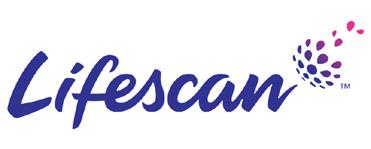
A Clinical Approach to Customer Experience
From digital transformation to frontline customer experience management to back office support, learn how Sitel Group can help at sitel.com.
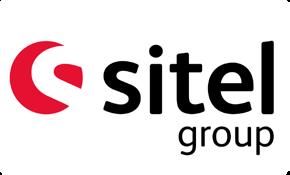

David White is a born salesman who becomes more motivated the more difficult the deal is.
Now the vice president of global strategic sourcing at Merit Medical Systems, White drew on those skills countless times during his years working in commercial leasing and financing. But that rush isn’t what truly drives him.
There are two critical pieces that White needs to feel truly fulfilled in his work, and they’re what motivated him to come to Merit. “I’m an entrepreneur, and so I always need to be building something,” White explains. “Whether it’s a business—which I’ve done a couple times—or a structure within a business, or even a team, I have to feel like I’m working towards the creation of something.”
White also has a deep-seated desire to coach, teach, and help his people excel—an instinct born of his history of motivating and pushing a salesforce. Partly because he’s invested in professional coaching of his own, he knows the value he can bring to those who want to advance in their careers.
“If I’m not doing those two things together, I don’t feel engaged, and it’s a sign that I need to make a change. It’s just something I’ve learned about myself,” he says.
Since joining the medical device manufacturer in 2016, White has had the chance to bring expert guidance and sales experience to the global procurement function. It’s certainly been a chance to build, and the roadblocks thrown up in the marketplace since the pandemic began have made that growth even more impressive.
The current shortage of components and raw materials has been White’s greatest challenge at Merit. Since the pandemic began, virtually every supplier White works with has had to enforce force majeure clauses in their contracts, liability exemptions that come into play when unforeseeable and unavoidable events prevent the fulfillment of obligations.
“It’s been supply agreements. It’s been pricing agreements. You just watched everything coming to a standstill,” White explains. “There was this ‘toilet paper effect’ with suppliers putting their products in allocation because when businesses don’t have something, they order more of it just to be prepared.”
“I’m an entrepreneur, and so I always need to be building something.”
 David White VP of Global Strategic Sourcing Merit Medical Systems
David White VP of Global Strategic Sourcing Merit Medical Systems
Materials were simply not available, and at Merit, procurement issues can be a life-or-death situation. “We are creating products that save people’s lives; it’s not just about the business surviving,” White explains. “If we are not able to supply hospitals and clinicians with our products all around the world, people are going to die. It could be incredibly frustrating trying to get people to understand that critical need.”
White worked with his team to mitigate its need by increasing its own raw material production and vertically integrating when possible. They also took an active role in creating direct communication lines with service providers to help them understand just how high the
stakes were for getting the materials that Merit needed.
After confronting one crisis, White sees the current economic environment on the brink of yet another. Inflationary pressure has sent prices skyrocketing for the better part of the last few years. While White says it would be unreasonable not to expect to see price increases from suppliers, he hopes that when prices eventually drop, suppliers won’t suddenly be affected by memory loss.
“I think it’s only fair to benefit from those falling prices, and we hope to eventually be on the receiving end of those benefits at some point,” White says, laughing. “I’m good with sharing the
“If we are not able to supply hospitals and clinicians with our products all around the world, people are going to die.”
Over 150 million patients rely on medical devices manufactured with Celanese materials to improve their quality of life every day. Our dedicated teams apply a purpose-driven, problem-solving approach to development projects; how can we help you?
• We’re dedicated to understanding—and helping to overcome—each medical device customer’s unique challenges.
• We provide support and expertise across regulatory, clinical, laboratory, quality, and manufacturing disciplines, grounded in 40+ years of clinical history.
• We work with customers to explore the use of sustainable materials.
Get in touch: 1-859-372-3244 healthcare.celanese.com
healthcare@celanese.com
increases together as long as we share the decreases together.”
Looking ahead, White’s goal for his team is to tie itself to indices that will help keep the integrity of pricing in check, and while they’ve made gains on those roads already, the VP says there is significant room to enhance those capabilities.
When it comes to his team and the broader business, White continues to find fulfillment in helping employees take ownership of their work. Providing his team members with the latitude to execute on their own terms means they’re able to become the authors of their own success. White demands that his team members take ownership because he knows it’s the most direct path to greater success in their lives.

“I just want to see other people succeed,” White says. “I don’t need it to be my success story. I want others to feel that sense of accomplishment and purpose that comes with that responsibility.” AHL
Understanding each medical device customer’s unique challenges, providing support backed by deep experience across a range of expertise areas, exploring opportunities for sustainable materials, and, ultimately, recommending the right advanced polymers, the Celanese Healthcare team can support your program team through every stage of device development.
Learn more about our service and medical grade polymer options at celanese.com
 By Zach Baliva
By Zach Baliva
What is a Splunker? Daring. Innovative. A Splunker values diversity and collaboration. A Splunker pushes the limits, seeks to learn, and uncovers surprising opportunities for improvement. Splunkers are inventive.
The 7,500 Splunkers currently employed around the world have received more than one thousand patents. This pool of thinkers comprises business analysts, engineers, salespeople, product designers, accountants, lawyers, and others. Together, they power Splunk, a global technology company that helps organizations use data at any scale to become more secure and resilient, so they can innovate with speed and agility.
Splunk’s leaders like to say their company is what happens when the right passions, products, and people come together. Jason Morgan, the global health and well-being lead, joined the company in 2020. Shortly after, he built a fully customized well-being strategy designed to energize the environment and keep pace with rapid growth in a crowded and competitive field.
Morgan’s reputation is that of a dynamic and relentless leader; one refusing to pull punches or rely on hype, trends, lip service, or buzzwords. He’s partnered with Fortune 500 companies, worked in fifty countries, and implemented massive, culture-changing initiatives.

“I’m passionate about what I do because I know it can impact employees’ lives and really make a difference,” he says. “You can’t do that if you’re only willing to take things partway.”
It’s an approach Morgan has championed since the start of his career. Twenty years ago, when his peers across the industry were focused on simple movement and weight management programs, he collaborated with leaders at Chrysler to adapt policies and better meet the real needs of seven thousand employees and their families. Morgan took the company tobacco free and introduced healthy options to the cafeteria long before the now-popular moves became standard. He then launched a comprehensive well-being program, featuring on-site health clinics, family health screenings, built-in metrics, one-on-one fitness assessments, and other unique perks.
After seven years at Chrysler, Morgan created and managed an employee health and well-being program for a medical college with 5,500 employees before continuing his progression with positions at General
Jason Morgan Global Health & Wellness Lead SplunkElectric and Mars. He revolutionized the well-being program at GE by expanding it beyond the physical to include spiritual, emotional, and social health categories. Similarly, at Mars, Morgan partnered with functions like HR, facilities, benefits, legal, and IT to integrate health and well-being into everything the company does.
While big changes to policies and programs are often important, Morgan knows little adjustments also can have a big impact. He’s led many of his companies to reduce meetings from thirty, sixty, or ninety minutes to twenty-five, fifty, and seventy-five. This, he explains, adds time for recovery, hydration, nutrition, and movement.
Combined, these and other measures improve engagement, presenteeism, and productivity—but only if managers are on board. “Leadership plays a critical role and is the single most important thing when it comes to a successful well-being program. You can have the greatest program in the world, but it will fail if it’s not supported by key leadership team members,” Morgan says.
support healthy behaviors. The five pillars informing Splunk’s well-being program include purpose, emotional, mental, physical, and financial. Known as Spark, the effort provides events, opportunities, and resources to help employees thrive in all of these areas, with a special emphasis on mental health.
Splunk partnered with Modern Health to offer employees and their families ten free video or in-person sessions with licensed therapists. Group counseling, digital courses, and guided meditations on areas such as stress, relationships, and inclusion also are available.
“Splunk is an incredible partner to Modern Health, and we continuously see strong engagement with our platform from its global workforce thanks to Jason’s thought leadership,” says Modern Health Founder and CEO Alyson Watson. “With our expansive network of providers and culturally centered mental health care, we’re able to offer Splunkers the tools they need to feel productive and energized in their roles.”
The program is designed to encourage employee health and engagement as Splunkers tackle big projects and move into the future. Today, the company’s workforce is trusted by many top brands, including Walmart, Heineken, Slack, Care.com, and McLaren Racing. As Splunk expands, Morgan and the company’s wellness team ensure well-being is at the forefront and that it scales across multiple regions.
It’s a challenge, but one for which Morgan is well prepared. He still carries the same passion that initially motivated him many years ago, having seen the difference an effective global health program can have. It’s better for employees, families, and the business as a whole.
Yes, daring and innovative. But a Splunker also is healthy, resilient, balanced, and fulfilled. AHL
When he arrived at Splunk, Morgan intended to use the most effective strategies that worked at places like GE and Mars, without building an exact replica. He spent three months meeting with senior leaders and forming a strategy tailored to the organization and that matched the company’s vision. “Organizations don’t often think about purpose in corporate health, but it’s one of the most important factors around well-being,” Morgan says. Since Splunkers are busy and creative, the concept of energy management emerged as central to the plan.
With that in mind, Morgan set out on a virtual tour and held focus groups with about one thousand employees before unveiling five pillars and modifications to Splunk’s physical environment to encourage and
Modern Health is a comprehensive mental health and wellness platform supporting enterprises globally that combines the WHO well-being assessment, self-service wellness kits, a global network of certified coaches, and licensed therapists, all available in a single app. It is the first global mental health solution to offer employees access to one-on-one, group, and self-serve digital resources for their emotional, professional, social, financial, and physical well-being needs. Whether someone wants to manage stress or treat depression proactively, Modern Health guides people to the right care at the right time. Modern Health empowers employers to lead the charge in acknowledging that mental health is just as important as physical health, destigmatizing the conversation, and increasing accessibility of mental health services for all.
“You can have the greatest program in the world, but it will fail if it’s not supported by key leadership team members.”

F or over seventeen years, Vishal Ganju has served in all areas of the healthcare provider landscape: physician’s office, hospital consulting, hospice and palliative care, and now, medical supplies. He has won awards for revenue cycle technology innovation, process efficiencies, managed care growth, and other achievements.
Numerous IT solutions enhance the work of revenue cycle professionals.
By Peter FabrisHuman interaction, however, creates real, consistent success, according to Ganju, vice president of revenue cycle management for managed care at Medline, a distributor of medical equipment and supplies. The seasoned revenue cycle executive believes two key factors remain critical for a high-performing revenue cycle function. One: cultivating personal relationships with people in payer organizations—sometimes
including high-level executives. Two: assembling a staff with the right skills. With profit margins under continuous pressure, the back-of-the house, largely invisible revenue cycle department remains more vital than ever to financial viability. “Administration costs on both the payer and provider side are insane,” Ganju observes. Best practices in provider revenue cycle departments should equate to 5 percent or less of claim
denials, he explains. At the same time, rates in laggard revenue cycle organizations can be a high operating expense due to labor cost and inflation.
Simple solutions to reach high-performance status don’t exist, Ganju says. No technology vendor has the tools to meet all revenue cycle needs. In addition, healthcare generally lags ten to fifteen years behind other industries in IT implementation.
That’s not to imply technology isn’t an important part of the picture. Indeed, data analysis brings patterns of denials or underpayments to light. When such a pattern is identified, do a deep dive to deduce the source of the problem, Ganju advises. After that step, human intervention and interaction is critical. “If you consistently are not getting paid for a service, find out what is the payer’s position,” he says.
To get an accurate read, staff must get in touch with the right personnel on the payer’s side. With the rules governing what procedures are covered constantly changing, some of the payer’s representatives are likely not up to speed on how and why payment policies on certain claims have changed. Knowing who on the payer side is most knowledgeable, then, is advantageous.
When his staff can’t find a good answer on a pattern of claims denial, Ganju doesn’t hesitate to contact high-level managers in payer organizations—sometimes even at the CFO or CEO level. Typically, he gets a positive response. “When I have done that, nine times out of ten, they have jumped on the problem,” he says.
Dedicating staff to sift through denial and underpayment analytics regularly is a must, Ganju says. A quality assurance team conducts audits, randomly sampling denied claims. “A small organization might consider such a dedicated
resource a luxury, but they are surprised about how much they would save if they had one in place.” The smallest organizations could assign one person to claims quality control part time and still make significant improvement.
Those focused on analytics should flag denial trends—cases with similar roots having significant financial impact. Find out what your organization can do to conform to new claims rules. This approach, tackling multiple denials with common causes, produces systemic change that reaps ongoing benefits—far more than addressing denials on a caseby-case basis.
With so much riding on the skills of team members, revenue cycle managers must be good people managers, Ganju says. “If you do not have the right team with people in the right places with the right attitudes, you are bound to fail.” Assembling and training such a team is the manager’s chief responsibility. Don’t expect to just implement IT tools that you hope will automate good revenue cycle practices, he emphasizes.
“If you consistently are not getting paid for a service, find out what is the payer’s position.”

Because many payers have widely varying rules and terminology, such a vision is a pipe dream.
Ganju believes in choosing staff carefully and providing them with specialized training for their roles. “Revenue cycle is not for someone who likes the status quo,” he says. “You have to be nimble, because things change so much on the fly.” With constantly changing claims rules, all revenue cycle personnel must also be attentive to detail.
Data analysis drives revenue cycle improvement. Without it, your department can’t be a top performer. Thus, those with the acumen to “slice and dice data” are essential assets, Ganju notes. Hiring smart, capable people with interpersonal skills to fill those and other roles gets you part of the way to high performance, but good training is essential.
“There is no revenue cycle degree,” Ganju observes. Staff members must learn the ins and outs of revenue cycle management on the job. While onboarding remains a key period, training must be an ongoing, long-term process. Providing staff with consistent feedback on performance also is critical to their development. To raise overall team performance, he advises spending more time training those who are not the highest producers.
The nature of revenue cycle creates constant challenges, so those seeking a career in the field must accept that and have the temperament to adapt to new conditions constantly. Ganju is one who has embraced and thrived in this dynamic environment. “Revenue cycle in some sense has muscle memory, but it keeps changing,” he says. “It keeps you on your toes. That’s why I love it.” AHL
“Revenue cycle is not for someone who likes the status quo. You have to be nimble, because things change so much on the fly.”
Vince Goodwine designs human resources initiatives that will keep pace with and facilitate Legacy Community Health’s significant market growth
By Natalie KochanovAs Legacy Community Health’s firstever chief human resources officer (CHRO), Vince Goodwine had his work cut out for him when joining the organization in March 2021.
“I spent last year assessing the organization and establishing an HR strategy for meeting the present and future needs of our fast-growing healthcare system,” Goodwine says. “The growth is happening so fast that we’ve averaged a monthly 3 percent growth in staff over the past twelve months. Every month, we measure and evaluate the percentage of new clinics and new headcount, and every month these ratios are higher than the prior month. This is a great experience to have, as this means we are successful in positioning Legacy to continue to meet the ever-growing patient need in our communities.”
To match the Texas-based, federally qualified health center’s impressive trajectory, Goodwine scaled the HR team, drove talent acquisition and development across functions, and affirmed Legacy’s culture pillar of “caring” for patients and employees alike.
After developing an HR strategy with the CEO, Goodwine stood up an HR Shared Services model. The streamlined model has proved even more necessary in light of the company’s ongoing growth, amounting to a 33 percent increase in physical location size, a 23 percent increase in staff, and a 28 percent increase in revenue during Goodwine’s time at the organization alone.
“We’re currently at sixty clinic locations, and we’re going to be at or near sixty-five locations by end of year,” he says. “When you go from having a few hundred employees during our formative
“At Legacy Community Health, we are a mission-driven organization. Everyone here is committed to providing the best patient care to our patients, which includes many who otherwise wouldn’t have care.”
years to our current sixteen hundred employees, the old model no longer works. That’s why we stood up our HR Shared Services team, called myHR Concierge: to help meet our employees’ present-day needs, as well as their growing, expanding needs.”
The CHRO also met those expanding needs by nearly doubling the size of the HR department and onboarding new leaders to complement the team. “I try to hire talent not just for the role that’s open, but for one or two roles up the road,” he adds. “I pride myself on developing HR talent for bigger roles than what they’re doing today.”
Placing particular emphasis on growing his recruiting team, he reframed expectations around the team’s targets and workflow and cultivated a more intentional recruiting strategy leveraging social media. “We’ve got a whole host of video testimonials from some of our most successful employees and create a new set of video testimonials every quarter. They each tell their story through their own lens, and we then populate their testimonials out across hundreds of social media platforms,” he explains.
Additionally, Goodwine shifted compensation bands to keep Legacy competitive in Houston’s hot healthcare market. “We’ve been really thoughtful around our compensation strategy,” he says. “We’ve focused foremost on positions with the highest
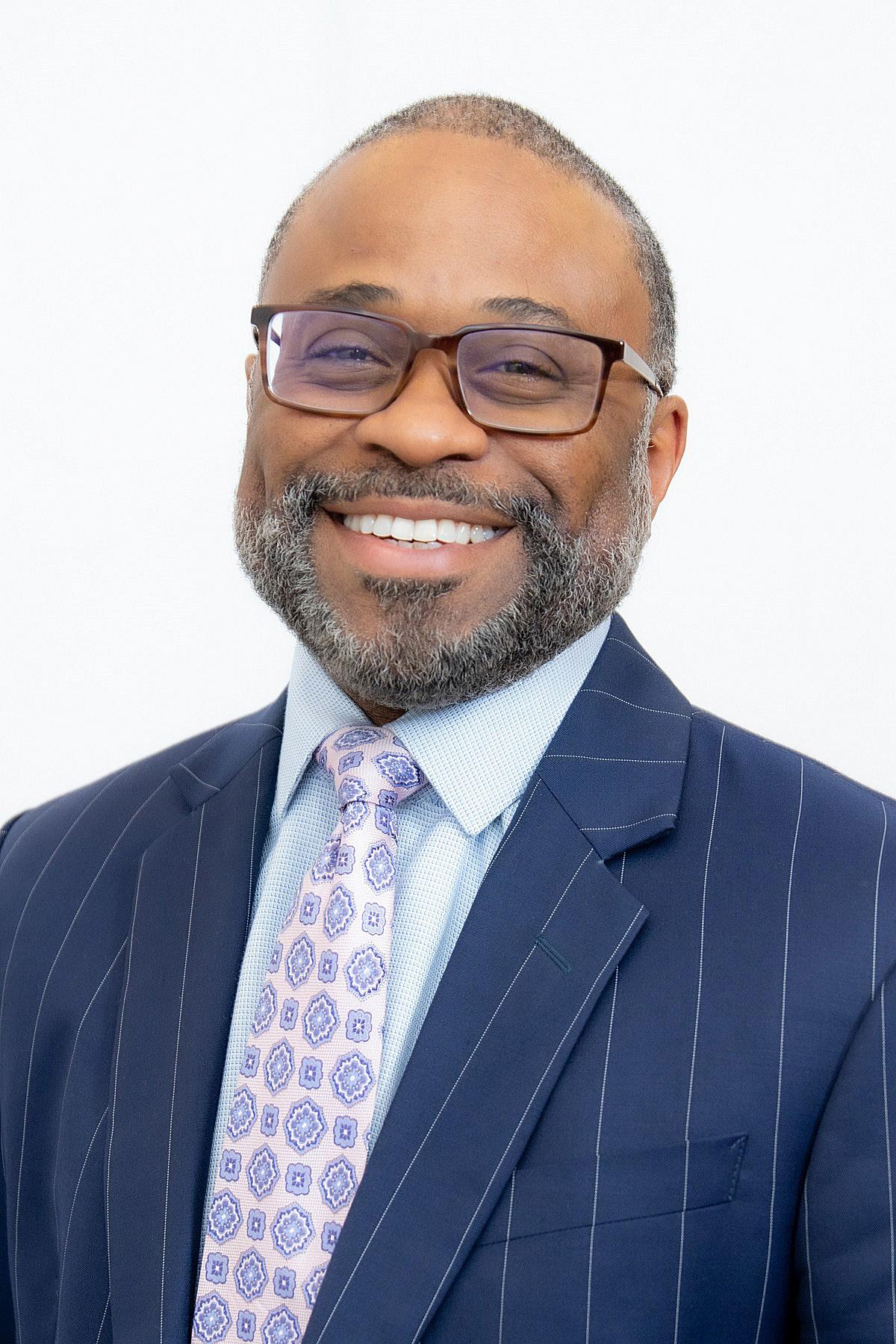
number of incumbents and largest rate of turnover.”
Goodwine focused in on certified medical assistant, front desk, medical providers (i.e., child and adolescent psychiatry, behavioral health therapist, OBGYN, pediatrician, and infectious disease), and contact center roles as areas where Legacy needed to make a strong economic investment up front. Hiring at higher pay ranges and adjusting pay for existing employees also created a more equitable compensation landscape. Between those changes and enriched benefits offerings, turnover and vacancy rates decreased in the majority of the targeted positions.
“We’ve done some things that have been effective, but we have to continue to build on that momentum,” Goodwine says. “We just launched an employee recognition platform, which serves the intentional purpose of complementing our employee engagement initiatives. That’s the other piece of it: you must get people in, but once you get them in, you have to keep them happy and engaged.”
In October, Legacy will launch a benefit that allows its employees to take potentially forfeited PTO time and repurpose it into one of four different areas: student loan payoff, donation to charity, contribution to the employee’s 403(b), or donation to a distressed-employee-in-need PTO pool. This helps mitigate the negative experience of losing one’s PTO time, which affected many team members.

Lynn is an expert in placing executive leadership teams in Healthcare. She is passionate about having a diverse slate of candidates who fit a client’s culture.

lynn@engagestaff.com
215-880-9686
linkedin.com/in/lynnradice
The CHRO hopes that the employee recognition platform and the PTO Exchange benefit will foster Legacy’s kindness-centered “organizational feel,” which ties closely to the organizational culture of caring. Goodwine says, “At Legacy Community Health, we are a mission-driven organization. Everyone here is committed to providing the best patient care to our patients, which includes many who otherwise wouldn’t have care. Or stated differently, at Legacy our clinical teams are passionate about delivering quality care to our patients regardless of our patient’s ability to pay.”
Inspired by Legacy’s culture— purpose-driven, caring, results-oriented, and committed to people develop ment—Goodwin aims to lead with these characteristics in mind. He strives to build up the confidence of his HR team while embracing authenticity and trans parency in his communications. “I try to let my team see the whole me,” he says. “We want everyone in our organization to feel comfortable in expressing who they are.”
Like Legacy itself, Goodwine remains mission-driven. “Our HR mission statement is to deliver a great employment experience that enables our people to deliver a great patient experience,” he says. “I want my HR team to understand the nexus between how well we care for our employees directly correlates to how well our employees ultimately care for our patients.” AHL
Engage has a nationwide network of expert recruiters who can fill your critical needs in a timely manner. Our team averages more than 20 years of award-winning recruitment. Our executive search recruiters are the top choice for healthcare companies looking to find C-level executives. We also continue to place Healthcare IT and EPIC positions within the healthcare industry.


As vice president of legal, Varian’s Lawrence Chew focuses on enabling his product and business teams to achieve cancer care innovation
By Donald Liebenson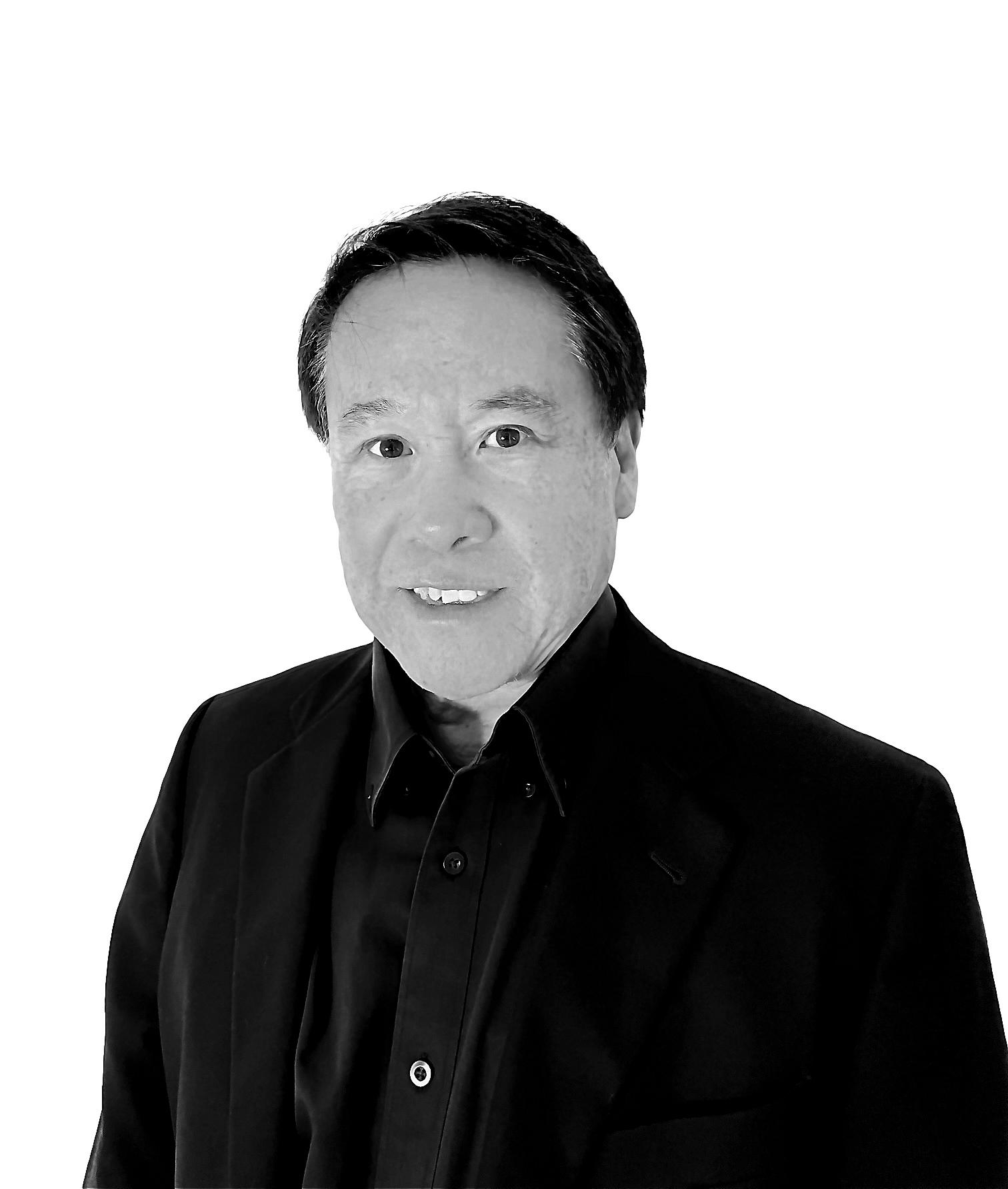 Lawrence Chew VP of Legal Varian
Lawrence Chew VP of Legal Varian
“Yes, and” is one of the guiding principles of improvisational comedy. Traced back to sociologist Neva Boyd and further developed by acting teacher Viola Spolin, “Yes, and” is a tenet by which an actor accepts his scene partner’s contribution, and then builds upon it.
Lawrence Chew serves as the vice president of legal at Varian, a Siemens Healthineers Company devoted to technological innovation in the field of cancer care management. His internal clients include, among others, executive levels of the product, software, engineering, manufacturing, strategic alliance, sales, and support teams. Chew believes active listening and good emotional intelligence (EQ) have helped him optimize business relationships and move initiatives forward to success completion.
“That is a key component for success,” he says. “Although the legal team does not develop, per se, a product, we do serve as trusted business and legal counselors to our business and product teams providing guidance, identifying and mitigating risk, creating viable alternative pathways, and partnering with them to move important initiatives forward. As in-house lawyers, we don’t want to be perceived as a roadblock or barrier to execution, but instead be known as enablers.”
He believes the interesting part of being an in-house lawyer for a cancer care management and medical device company is that he wears a number of different hats and needs to delve in a variety of areas of law and regulation, including, among others, commercial, intellectual property, corporate, finance, FDA, privacy, security, and trade.
Chew says the challenge and opportunity arises in the manner in which they as in-house lawyers are able to balance legal and risk mitigation with the business and product teams need to accelerate timelines for development and commercialization of transformational products. He attributes his ability to be open-minded, flexible, and practical the key to his success.
“Active listening and good communication skills are equally important to my role. And candidly, this is where I have
benefited from the improv training that I gained in theater arts and improv while attending UCLA Law School, which even landed me a lead role in an off-Hollywood play that was written up in Variety magazine,” he says. “The use of good EQ and the old improv adage of ‘Yes, and’ can go a long way toward transforming the perception of lawyers from one of ‘legal gatekeeper’ to ‘pragmatic business and legal partner.’”
A San Francisco Bay Area native, Chew’s lifelong fascination with
“Active listening and good communication skills are equally important to my role.”
technology was largely inspired by his mother’s work in one of the first computer chip assembly and fabrication facilities at Fairchild Semiconductor, a foundational producer of electronics and computer circuitry. “I was always fascinated in the evolution of new applications, technology, and the different ways people leveraged them,” he says. “We had the first set of Apple computers at our household. Whatever new technology came out, my family were definitely early adopters.”
As an undergrad at the University of California, Berkeley, Chew was introduced to the law while serving as a part-time social security disability claims paralegal at the Legal Aid Society of Alameda County. Here, he discovered that it was important to him to “have a mission and a sense of purpose in any future career role.”
After spending time leading the corporate, technology, international, and commercial legal functions at some of the largest technology and corporations in the world over the last ten years, he now very much enjoys the mission at Varian, which has a personal resonance to Chew. Varian focuses on, among other things, developing and making available to the largest cancer centers in the world advanced cancer care products, such as radiotherapy, radiosurgery, brachytherapy, adaptive therapy, and interventional solutions—all of which help in the fight against cancer.
“My mother passed early on from cancer,” says Chew. “My father was successfully treated with one of Varian’s TrueBeam systems, and therefore the
vision at Varian of a world without fear of cancer is particularly meaningful to me.”
Chew sees fostering collaboration and serving as a trusted business and legal counselor with Varian’s thought leaders and stakeholders as one of his primary functions. “We’re here as advisors, helping to guide the entire life cycle of product development, product marketing, commercialization, sale, and service,” he says. “Although we guide our internal teams through different global rules, regulations, and requirements, we do so by being results-oriented and practical.”

A recent pivotal business initiative that Chew and his teams are engaged in includes Ethos. The pioneering intelligent cancer care solution uses Varian’s Halcyon system in combination with what Varian calls “a new, unifying, smarter” treatment of oncology. It leverages artificial intelligence to provide real-time adaptive treatment to patients and enables oncologists to utilize intelligent data and insights that help improve, enhance, and accelerate the manner in which patients are treated.
“Through the Adaptive Consortium established by Varian with over forty of the major cancer and research centers in the world, we are collaborating to identify additional indications where online adaptive radiotherapy might benefit an increasing number and expanding the pool of patients,” Chew explains.
Ethos, adaptive therapy, and intelligent cancer care are just a few of the many solutions that represent the essence around which Varian’s mission—and now Chew’s—evolves: “A world without fear of cancer.” AHL
Keck Medicine continues to chalk up wins as it serves patients with innovation in both the medical and technology space
By Will GrantS
ince 1991, the University of Southern California’s Keck Medicine has served as one of only two universitybased medical systems in the Los Angeles area. Keck’s footprint includes more than eighty outpatient locations across multiple counties, a community bolstered by the health center’s intensive research, and cutting-edge facilities.
That research includes the largestever study of tobacco content on social media and its links to tobacco use. The
Keck School of Medicine led a global meta-analysis of twenty-nine different studies of 139,624 participants. The results of the study, published in JAMA Pediatrics in 2022, examined the connection between social media consumption and tobacco use.
“We casted a wide net across the tobacco and social media literature and synthesized everything into a single association summarizing the relationship between social media exposure and
tobacco use,” first author Scott Donaldson and senior research associate in the Keck School of Medicine’s Department of Population and Public Health Sciences said in a statement. “What we found is that these associations are robust and have public health implications at the population level.”
In comparison with those who did not report exposure to tobacco content on social media, those who did were more than twice as likely to use tobacco in their
lifetime, to report having used tobacco in the past thirty days, or to be more susceptible to future tobacco use if they had never used it previously.
In addition to the groundbreaking research at Keck, the medical system also continues to expand its own physical footprint. In July of 2022, Keck Medicine welcomed Methodist Hospital of Southern California into its ranks. Now known as USC Arcadia Hospital, the acquisition will include new investments in equipment, infrastructure, and services. Those investments also will apply to personnel development like academic and training opportunities for USC residents and fellows.
“The partnership brings our community expanded access to a full range of physician specialties, technology, and clinical services that will benefit our patients, employees, and physicians,” president and chief executive of USC Arcadia Hospital Dan Ausman said in a press release.
The team behind the scenes at Keck’s huge strides includes Senior Information Technology Director of Administrative and Revenue Cycle Applications Rhona Fernandez, who has been with the health system for eight years. Fernandez’s scope includes developing and implementing applications around Keck’s relatively young health system, though it has grown significantly in a short period of time.
Over the past eight years, Fernandez’s purview has widened as she’s helped with the integration of robotics process automation tools. Additionally, the director continues to look for ways to streamline enterprise processes and functions, including collaborating with Cerner and Deloitte.
Her team also has partnered with a vendor to help consolidate billing
statements previously arriving as two separate bills, a routine and wellknown headache for patients trying to understand the often-complex world of medical billing. It’s a move to improve the patient experience and provide more transparency and fluidity for the health system’s patients.
That focus on patient experience is a passion point for Fernandez, who wants Keck to be known as a patientfirst organization. Her team regularly seeks out feedback and experiences from Keck’s patients to better understand the hospital system’s patient community and concerns.
On the tech side, Keck is wary of the number of start-ups trying to make noise in the healthcare industry. The director says many companies are flocking to the space, and it makes cultivating relationships with stable organizations truly working to solve problems in healthcare a priority.
Fortunately, Fernandez’s previous experience in a host of other healthcare facilities, as well as extensive experience outside the space, offers the director an insider’s view with an outsider’s fresh approach to innovative thinking. She may just be one part of Keck’s larger success, but her tenure at the organization is indicative of a health system that puts patient experience on the same level as its own innovation. AHL
A new drug aims to help those adults living with pyruvate kinase deficiency and adults with non-transfusiondependent alpha- or beta-thalassemia
By Will GrantT wo key announcements from Agios Pharmaceuticals in August of 2022 are paving the way for improving the lives of adults living with pyruvate kinase deficiency and adults with non-transfusion-dependent alpha- or beta-thalassemia. The advances, published in the Lancet and the Lancet Haematology , respectively, highlight Agios’s continuing dedication to evolving therapies and treatments for their millions of patients worldwide.
Agios’s Pyrukynd was approved by the FDA in February of 2022 and is under review by the European Medicines Agency. The drug is an oral PK activator and the first and only approved disease-modifying treatment for those battling lifelong hemolytic anemia (a disorder in which red blood cells are destroyed faster than they can be made).
“With the approval of Pyrukynd for the treatment of hemolytic anemia in adults with PK deficiency earlier this year, we delivered the very first approved medicine for patients who previously had no disease-modifying treatment options,” Sarah Gheuens, MD, PhD, head of R&D, and chief medical officer at Agios wrote in a prepared statement. “The results of the ACTIVATE-T study underscore the clinical value of Pyrukynd, particularly for patients who require regular transfusions to manage their disease, and support our current efforts to deliver this medicine to as many patients as possible who may benefit from it.”
The ACTIVATE-T study met its endpoint with ten of twenty-seven patients achieving a “reduction response in transfusion burden.”
Agios also published data of its FDA Phase 2 data on the efficacy of Pyrukynd for patients with non-transfusion-dependent alpha- and beta-thalassemia.
“We are encouraged by the Lancet’s publication of our Phase 2 thalassemia data for Pyrukynd, which has the potential to serve as several important firsts for patients: the first oral therapy for thalassemia, and the first treatment for all types of thalassemia—alpha- and beta-, transfusion-dependent and non-transfusion-dependent,” Gheuens reported. “Enrollment is underway for the Phase 3 ENERGIZE and ENERGIZE-T studies of Pyrukynd in adults with non-transfusion-dependent or transfusion-dependent alpha- or beta-thalassemia, respectively, and we expect to enroll a substantial portion of patients in the trials by year-end.”
Both of these findings highlight a positive future for Pyrukynd and Agios’s continuing commitment to battling diseases previously thought to be untreatable. For all of those working on the front lines of research, there also are those at Agios working in supportive roles to ensure the organization’s employee experience keeps them invigorated and able to focus their passions on their work.
VP of total rewards and HR operations Kelley Gramolini is a critical part of creating that employee experience and ensuring that those working to cure and treat disease at Agios are fully supported by their employer.
Gramolini came to Agios in 2017, with promotions in 2020 and 2022. The VP has helped Agios evolve to the “new normal” of work post-pandemic and built out major diversity, equity, and inclusion initiatives inside the company.
She is also a major contributor to Agios’s community outreach. Gramolni acts as a sponsor for the company’s partnership with Light the Night, a series of fundraising campaigns benefiting the Leukemia & Lymphoma Society’s research to find blood cancer cures. AHL

There’s nothing more important to the wellbeing of your business than the wellbeing of your people. That’s why for more than 90 years we’ve been here for businesses, communities and people around the globe. Customizing insurance programs and benefits and HR solutions tailored to their needs. Consulting with companies through every challenge to drive better outcomes. Helping you build the confidence to handle whatever comes next.

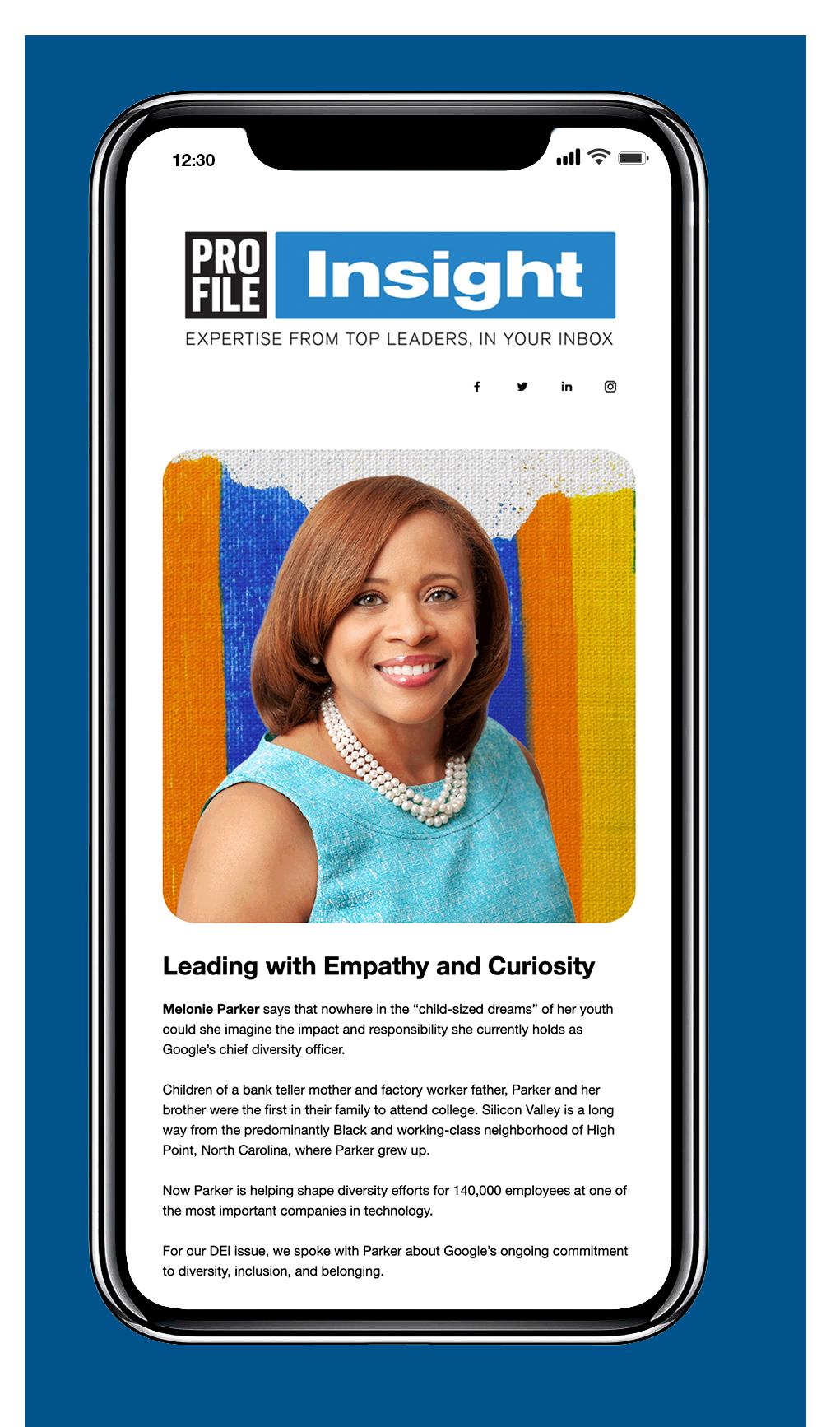




Florida Cancer Specialists’ top-ranked cancer experts provide the most advanced treatments in our local community.















From genetic screening to immunotherapies, our quality care brings effective, targeted treatment to you so you can stay close to home.





We take care of all the big things in cancer care, so you can focus on all the little moments that matter—every step of the way.


